A plethora of historical references dramatised by musical scores and allegorical lighting make up the pillars of Ho Tzu Nyen’s (b. 1976, Singapore) complex practice that primarily constitutes video and installation. Features in their own right, each work unravels unspoken layers of Southeast Asian histories whilst equally pointing to our own personal unknowns. Permeating Ho’s work is a pervasive sense of ambiguity, theatricality and unease, augmented by a series of deliberate literary, art historical and musical references. Centrally, Ho charges the viewer emotionally and physically to deliver a multisensory consideration of what we know and crucially, do not.
At the heart of Ho’s films is an observation of history; more specifically, a weaving of fact and myth to unravel and reveal what one is told versus what one believes to know, interprets and remembers. Ho’s work titters on the edge of fact and artifice, tending in scope from research-driven documentative exposure to the fantastical. ‘The Nameless’ (2014), for example, follows the story of a man named Lai Teck, one of the 50 known aliases of the Secretary-General of the Malayan Communist party from 1939 to 1949. His exact name has never been proven, nor his background or ultimate demise, but evidence suggests that he was born in Vietnam to a Chinese mother and served as a spy to both the French and British. Lai climbed the ranks of the Malayan Communist party by acting as an informant to sabotage his adversaries, later escaping execution by the Japanese by pledging allegiance to their intelligence forces. Ho recounts this tale through the use of existing Hong Kong film footage which he then manipulated, using the fictional to cast light on the untold, bringing to life the characters hidden under the carpet of canonised history.
A further recent project engaging histories, their investigation and presentation, is the recent multimedia project ‘The Critical Dictionary of Southeast Asia, Vol. 1: G for Ghost(writers)’ developed during the course of a residency at Asia Art Archive. Starting with the question of what unites the region called Southeast Asia, Ho created a ‘dictionary’ comprising narratives of shape-shifting and amorphous characters, ideas, and genres—one of which is Gene Hanrahan, who supposedly wrote and edited books of a wide ideological span, ranging from The Communist Struggle in Malaya to The Wild Years: Ernest Hemingway and 50 Great Oriental Stories. Presented as an installation including an internet dictionary, 16 books written and edited by Hanrahan, and Ho’s film about the figure of the writer called The Name, the work invites visitors and readers to think about questions of authorship, authenticity, and authority.
Extending into the realm of myth, Ho draws on nature and extraneous beings to build a reconsideration of the region’s pre-colonial past. Consider ‘2 or 3 Tigers’ (2015) in which the focus slowly pans out to reveal the previously ambiguous figure of a tiger alongside that of a human being. Or ‘Utama—Every Name in History is I’ (2003), composed of a video and twenty portrait paintings, which cumulatively deliver images of a quixotic pursuit of the distant past. Depicting the 14th-century figure of Sang Nila Utama, a discoverer of the island nation, the video weaves apocryphal relationships with other historical regional leaders to boost the legitimacy of the founding narrative and collapses time by employing the same person to play other explorers including Christopher Columbus, Vasco da Gama, Zheng He, and Singapore’s British coloniser Sir Thomas Stamford Raffles. Through Ho’s films, the viewer is presented with optional pasts, that vested in Singapore’s colonial and pre-colonial history, rest on the precipice of myth, fantasy and fact.
Beyond multi-century historical reflections, Ho casts light on the present whilst engaging the tools of art history and musical scripture to mount a momentous consideration of the world we live in. ‘The Cloud of Unknowing’ (2011), for example, an epic work presented by Ho for his representation of Singapore at the 54th Venice Biennale, explores the expansive subject of the representation of the elusive and amorphous cloud. Navigating between fantastical contemporary characters as well as their settings, Ho creates an eery and engaging work inspired by philosopher Hubert Damisch’s thesis on the form’s aesthetics and symbolism – A Theory of /Cloud/: Toward a History of Painting – first published in French in 1972. Incorporating a set of eight vignettes, each centred on a character’s representation of the cloud, Ho incarnates anthropomorphically how this ephemeral element is visualised and expressed by significant Western European masters including Caravaggio, A plethora of historical references dramatised by musical scores and allegorical lighting make up the pillars of Ho Tzu Nyen’s complex practice that primarily constitutes video and installation. Features in their own right, each film unravels unspoken layers of Southeast Asian history whilst equally pointing to our own personal unknowns. Permeating Ho’s work is a pervasive sense of ambiguity, theatricality and unease, augmented by a series of deliberate literary, art historical and musical references. Centrally, Ho charges the viewer emotionally and physically to deliver a multisensory consideration of what we know and crucially, do not.
Accompanying the visual complexity of Ho’s narrative is his work’s continuous relationship with music. The auditory scores, often engaging various composers, range from punk and metallic to classical. The level of sonorific association with the content ranges; for ‘EARTH’ (2009), for example, the music serves as an auditory stimulus for the filmic visual that constitutes human bodies, seemingly piled up in the wake of an unspecified catastrophe, along with a tangle of wires and cables, stacks of wooden pallets, cardboard boxes, dead fish and fluorescent light tubes. A direct reference to Caravaggio’s The Incredulity of Saint Thomas (1601–02) and his technical use of ‘chiaroscuro’, the work is brought to life by the score that coincides with the tentative ruminations of the emerging visual elements. Contrarily, ‘Gould’ (2009-2013) serves as a direct reference to the famed maestro pianist Glenn Gould, and depicts a man playing the piano to extreme velocity while his head bobs, a motion that is eventually revealed as being dictated by a guiding white-gloved hand. A reference to control, puppetry, on an individual and institutional level, the istoria of each film is accentuated by outworldly auditory addition.
Ultimately, Ho’s work may be described as a ‘dense constellation of particles—constantly shifting shape’, giving way to new layers, discoveries – elements of interpretation. A rich fabric of references, historical, art historical, technically and musically, Ho’s work is one of multiple engagements, readings and experiences. Careful and deliberate, his practice sits on the cusp of investigative research, the work of a true scholar, and that of a proficient as well as articulate narrator. As described by Ho himself, however, “spotting references is never a crucial thing in my work. I always try to produce work for an imaginary spectator who might have zero understanding of these references” – a comment that reminds us that Ho’s practice is not about projection of what we know, it is about opening the door onto something we did not.
Ho Tzu Nyen has been widely exhibited with one person exhibitions at Mudam, Luxembourg (2025), CCS Bard, New York (2024), Art Sonje Center, Seoul (2024), Museum of Contemporary Art Tokyo, Tokyo (2024), Singapore Art Museum, Singapore (2023), Hammer Museum, Los Angeles (2022), the Yamaguchi Centre for Arts and Media, Yamaguchi (2021), Edith-Russ-Haus for Media Art, Oldenburg (2019), Kunstverein, Hamburg (2018), Ming Contemporary Art Museum, Shanghai (2018), TPAM, Yokohama (2018), Asia Art Archive (2017), Guggenheim Museum, Bilbao (2015), Mori Art Museum, Tokyo (2012) and Artspace, Sydney (2011), amongst others. He also represented Singapore at the 54th Venice Biennale (2011). Recent group exhibitions include Whitney Biennial 2024, New York (2024), Thailand Biennale 2023, Chiang Rai (2023), Palais de Tokyo, Paris (2022), Kadist Art Foundation, San Francisco (2022), 13th Gwangju Biennale, Gwangju (2021), Museum of Contemporary Art Busan, Busan (2019), Aichi Triennial 2019, Toyota City and Nagoya City (2019), Home Work 8, Beirut (2019), Sharjah Biennial 14, Sharjah (2019), Gwangju Biennale, Gwangju (2018), National Gallery Singapore, Singapore (2018), Dhaka Art Summit 2018, Dhaka (2018), Haus der Kulturen der Welt, Berlin (2017), Guggenheim Museum, New York (2016), Queensland Art Gallery / Gallery of Modern Art, Brisbane (2016), Times Museum, Guangzhou (2013), and Witte de With, Rotterdam (2012). He has participated in numerous international film festivals including Sundance Film Festival in Park City, Utah (2012) and the 41st Directors’ Fortnight at the Cannes International Film Festival in France (2009). He was an Artist-in-Residency at the DAAD (Berlin) from 2015 to 2016, and the Asia Art Archive, Hong Kong (2012 to 2015). Ho Tzu Nyen is the winner of CHANEL Next Prize 2024, and the Art Basel Awards 2025 medalist. He has been appointed Artistic Director of the 16th Gwangju Biennale in 2026.
Ho Tzu Nyen B. Singapore, 1976

Installation view, “Three Stories: Monsters, Opium, Time”, Kiang Malingue, Hong Kong, 2025.
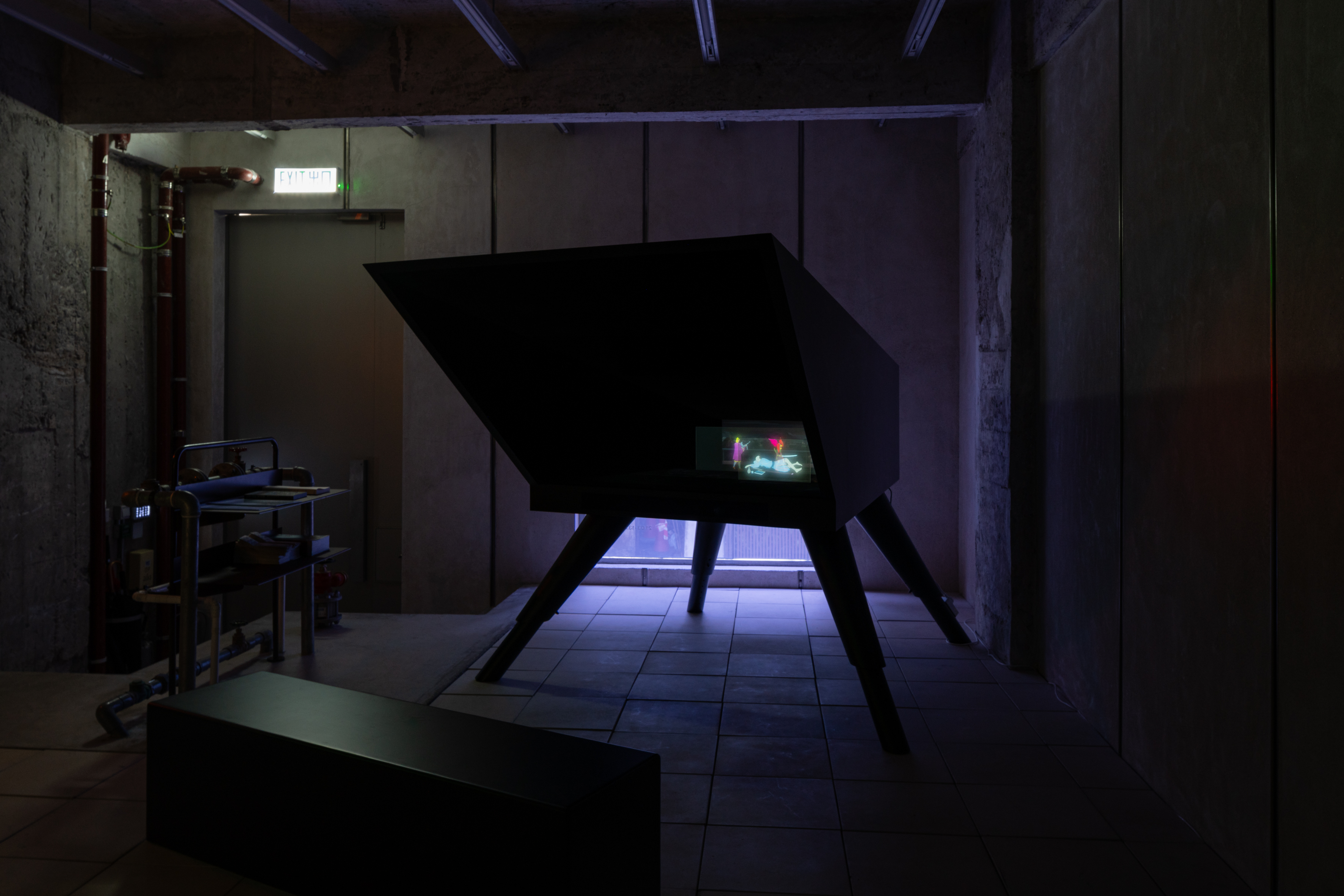
Miniature 3 channel video installation, LED screen, projections on glass, soundbar
Video box size: 87.1 x 164.7 x 229.6 cm, variable height
16 min 30 sec
Installation view, “Three Stories: Monsters, Opium, Time”, Kiang Malingue, Hong Kong, 2025.
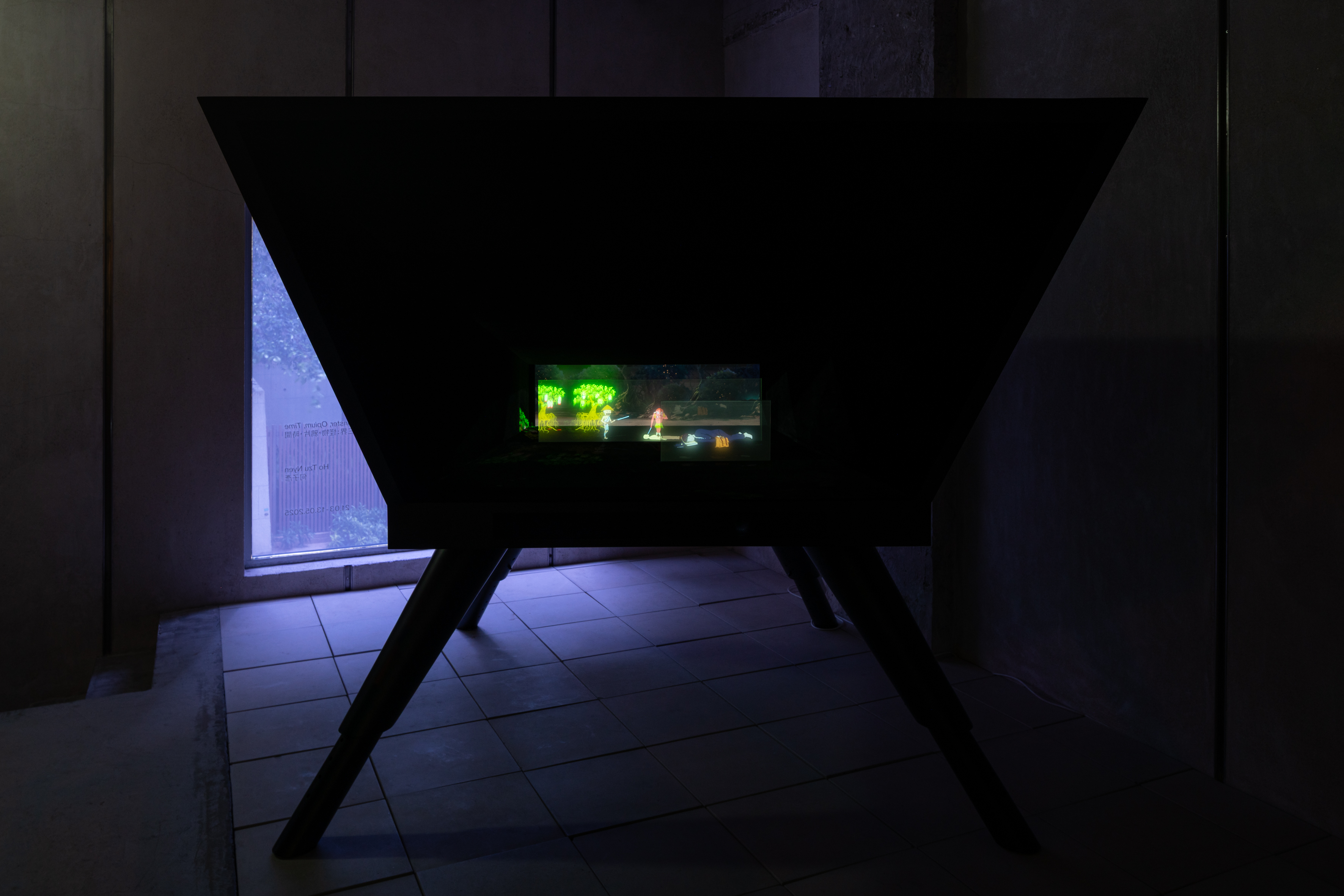
Miniature 3 channel video installation, LED screen, projections on glass, soundbar
Video box size: 87.1 x 164.7 x 229.6 cm, variable height
16 min 30 sec
Installation view, “Three Stories: Monsters, Opium, Time”, Kiang Malingue, Hong Kong, 2025.
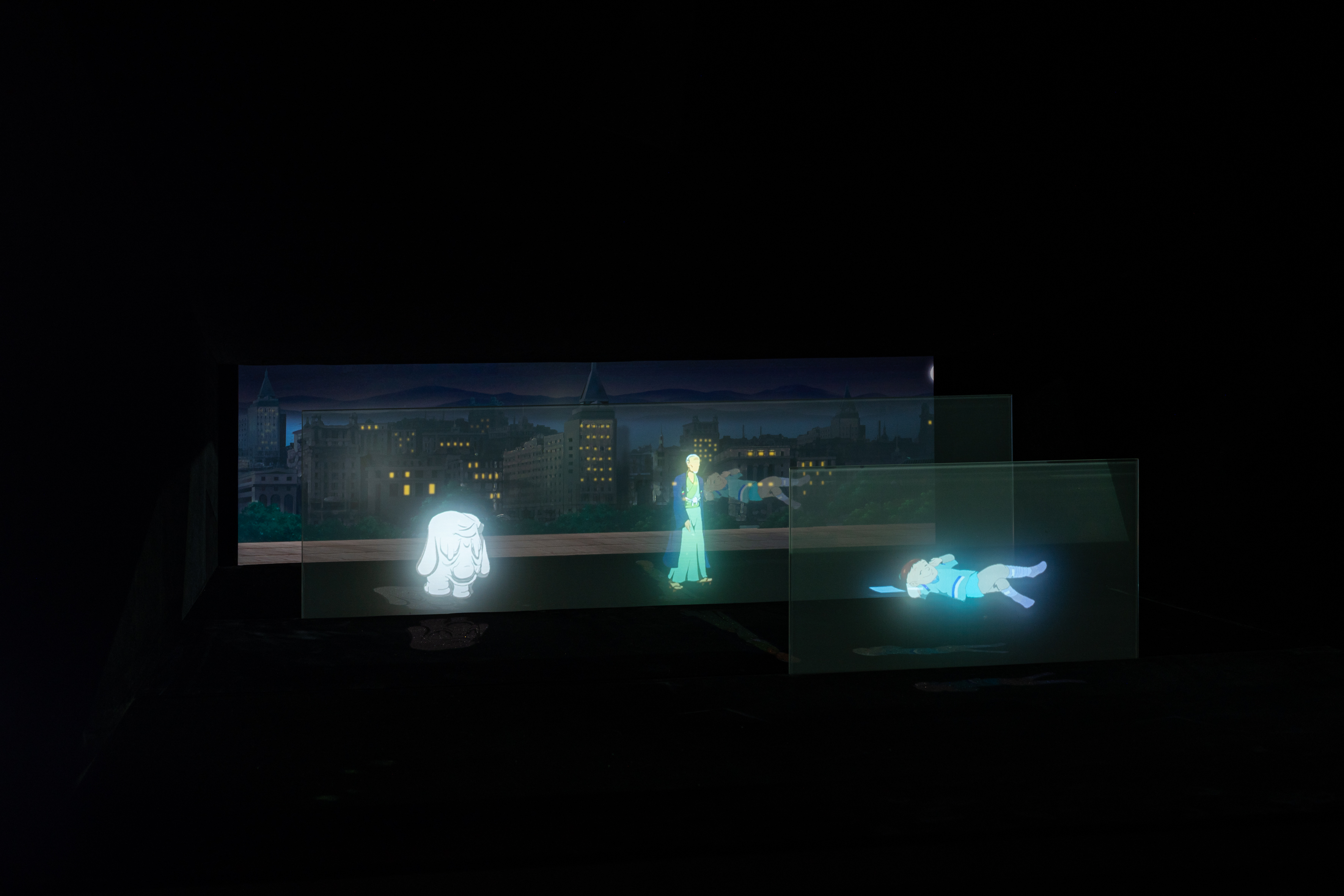
Miniature 3 channel video installation, LED screen, projections on glass, soundbar
Video box size: 87.1 x 164.7 x 229.6 cm, variable height
16 min 30 sec
Installation view, “Three Stories: Monsters, Opium, Time”, Kiang Malingue, Hong Kong, 2025.
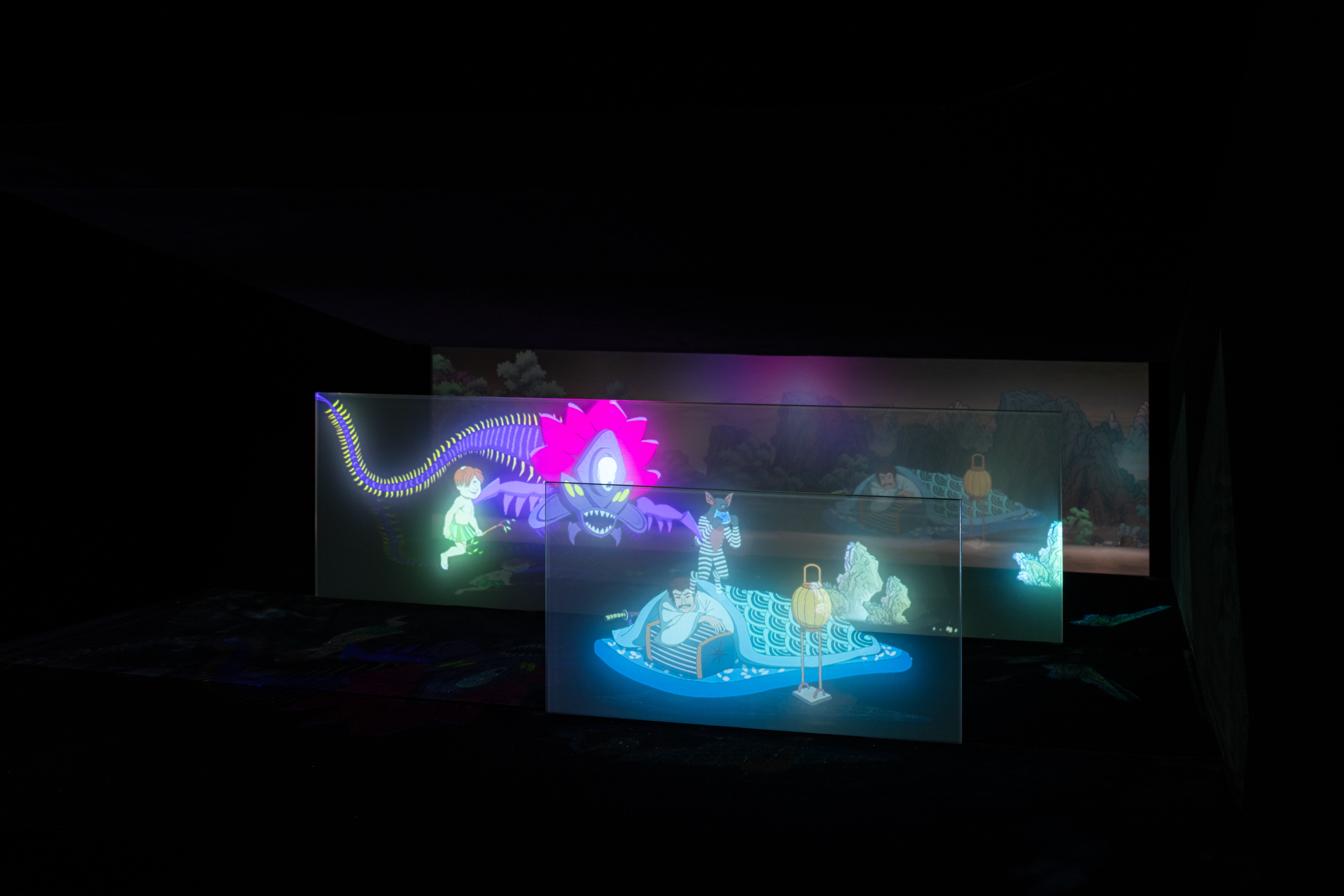
Miniature 3 channel video installation, LED screen, projections on glass, soundbar
Video box size: 87.1 x 164.7 x 229.6 cm, variable height
16 min 30 sec
Installation view, “Three Stories: Monsters, Opium, Time”, Kiang Malingue, Hong Kong, 2025.
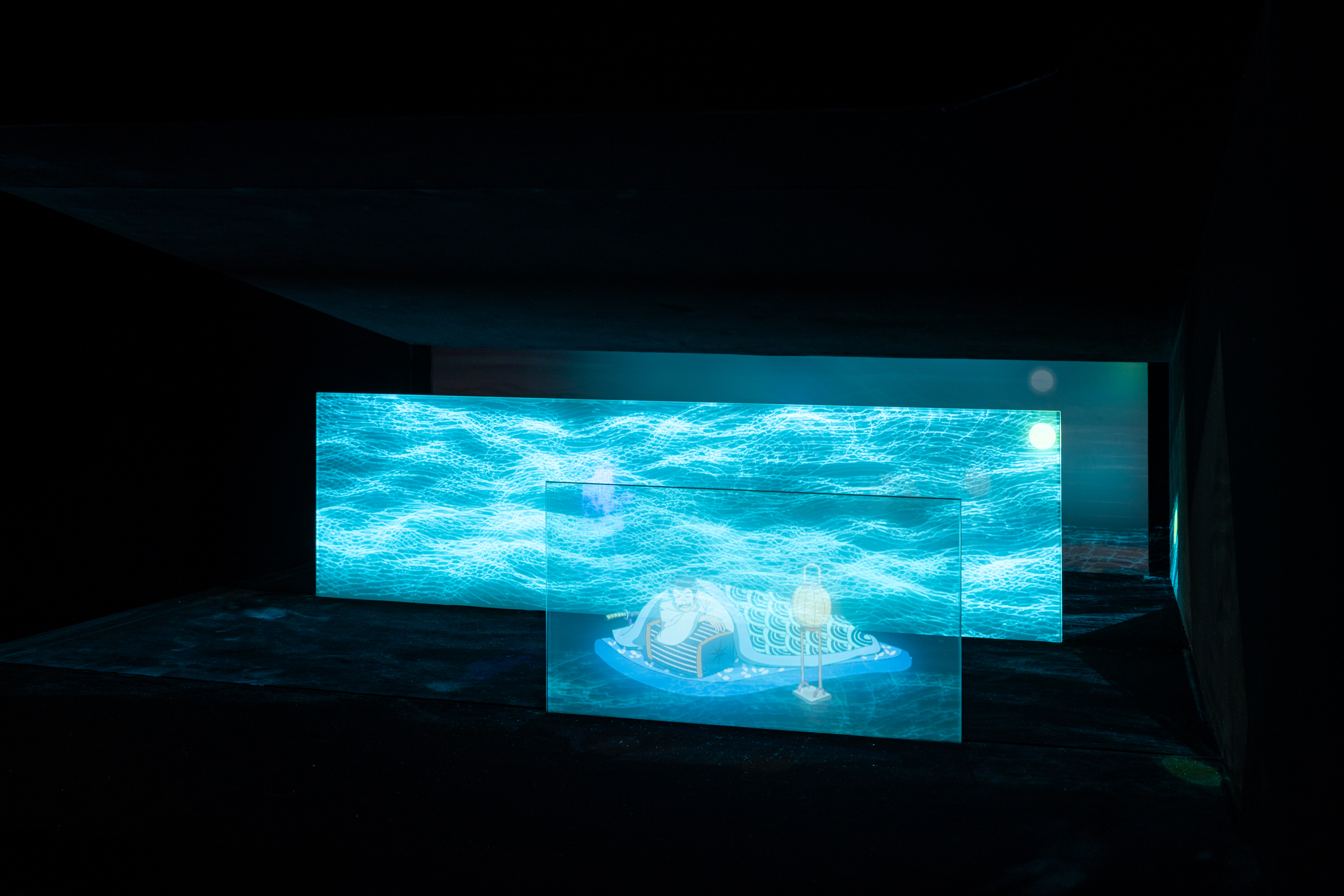
Miniature 3 channel video installation, LED screen, projections on glass, soundbar
Video box size: 87.1 x 164.7 x 229.6 cm, variable height
16 min 30 sec
Installation view, “Three Stories: Monsters, Opium, Time”, Kiang Malingue, Hong Kong, 2025.
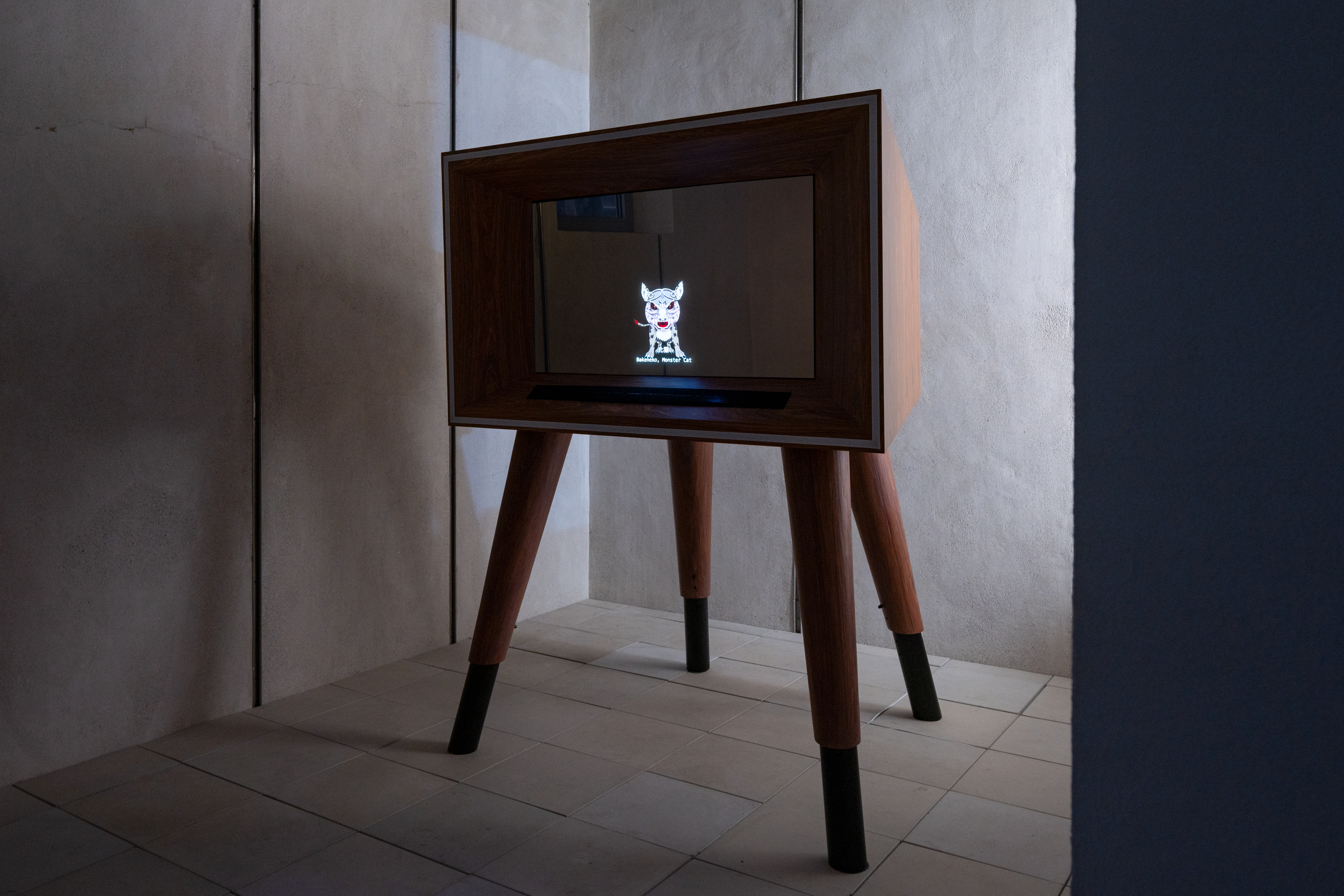
Miniature single channel video installation, projection on mirror, automated lights, soundbar
Video box size: 90 x 150 x 102.5 cm, variable height
19 min 30 sec
Installation view, “Three Stories: Monsters, Opium, Time”, Kiang Malingue, Hong Kong, 2025.
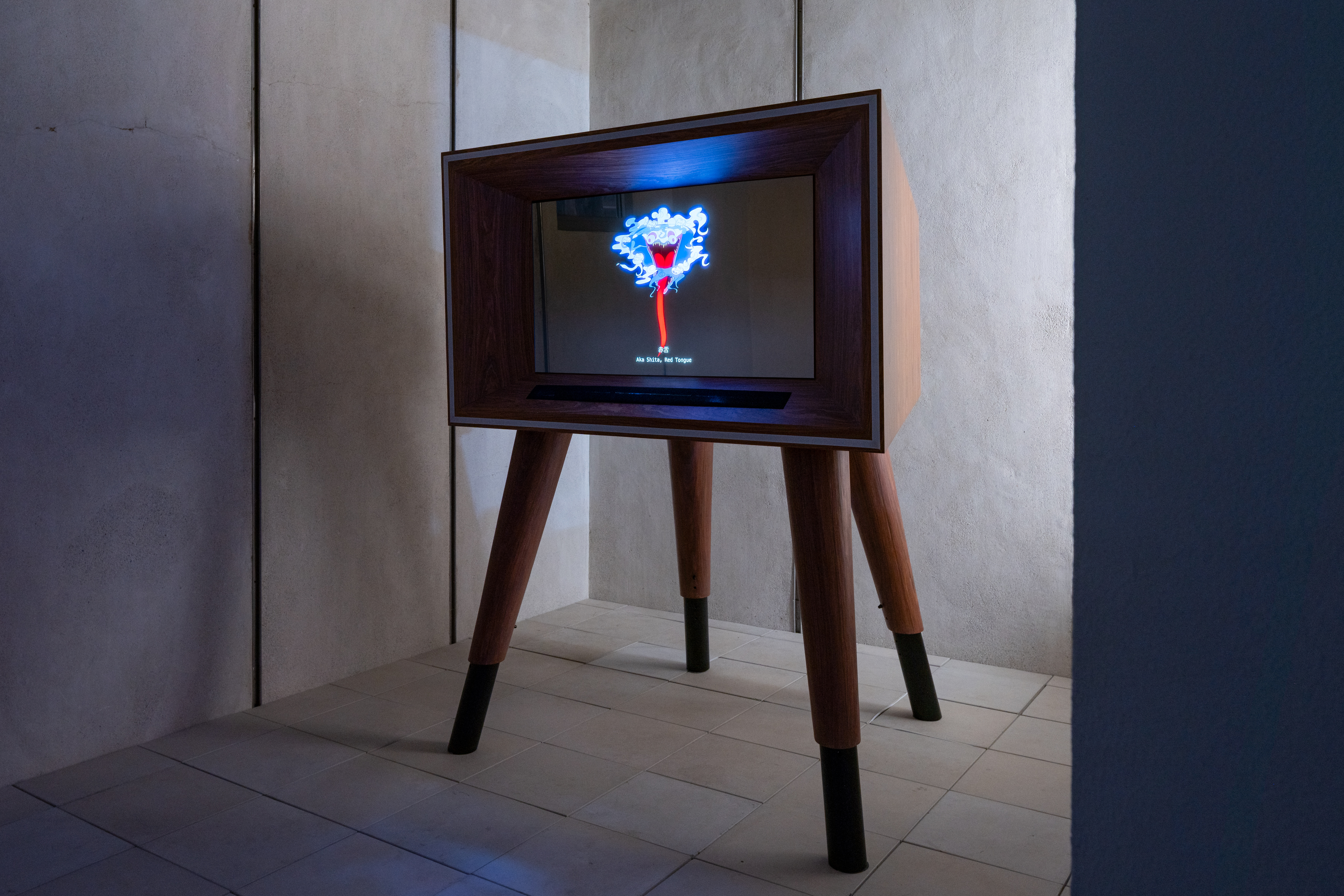
Miniature single channel video installation, projection on mirror, automated lights, soundbar
Video box size: 90 x 150 x 102.5 cm, variable height
19 min 30 sec
Installation view, “Three Stories: Monsters, Opium, Time”, Kiang Malingue, Hong Kong, 2025.
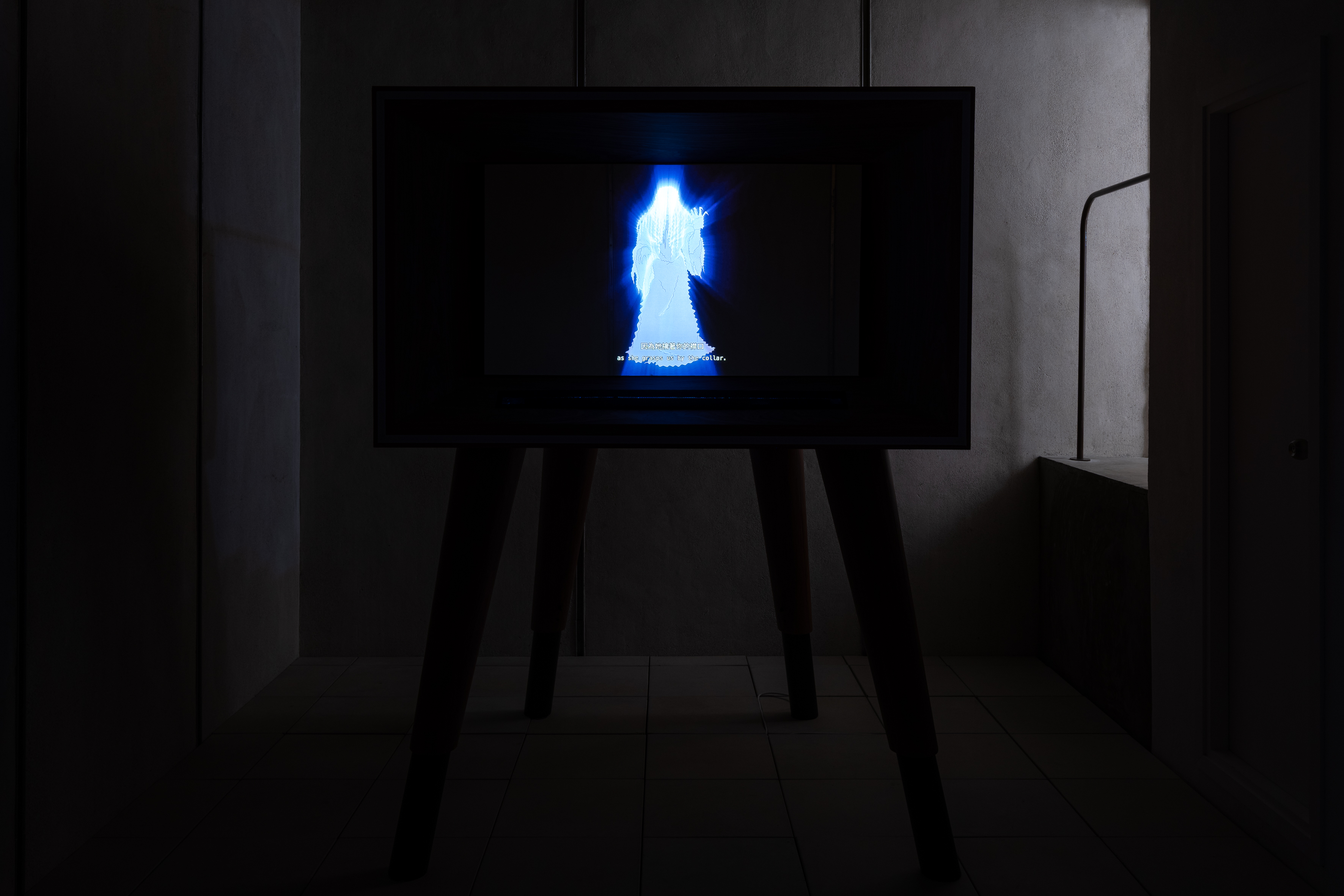
Miniature single channel video installation, projection on mirror, automated lights, soundbar
Video box size: 90 x 150 x 102.5 cm, variable height
19 min 30 sec
Installation view, “Three Stories: Monsters, Opium, Time”, Kiang Malingue, Hong Kong, 2025.
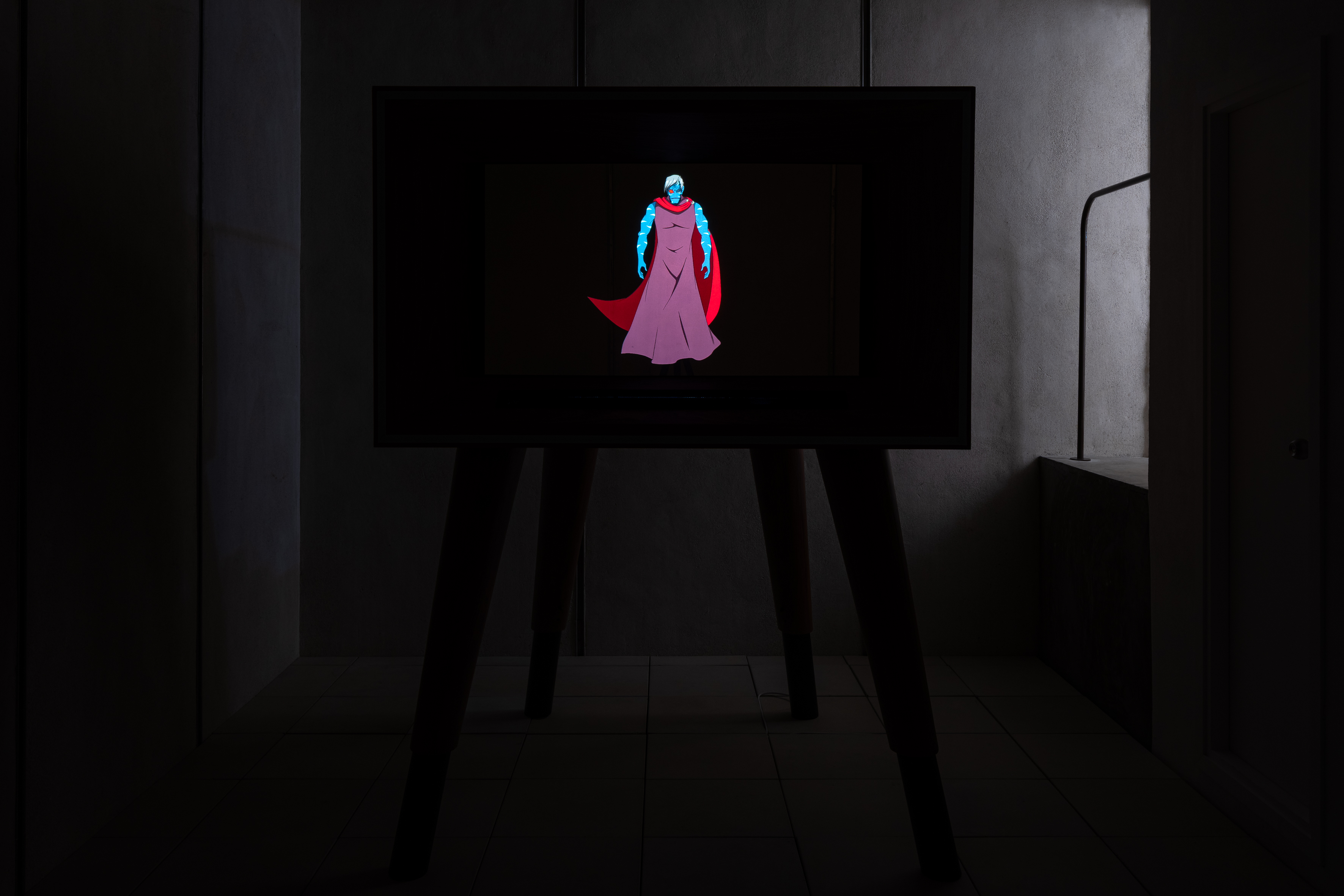
Miniature single channel video installation, projection on mirror, automated lights, soundbar
Video box size: 90 x 150 x 102.5 cm, variable height
19 min 30 sec
Installation view, “Three Stories: Monsters, Opium, Time”, Kiang Malingue, Hong Kong, 2025.
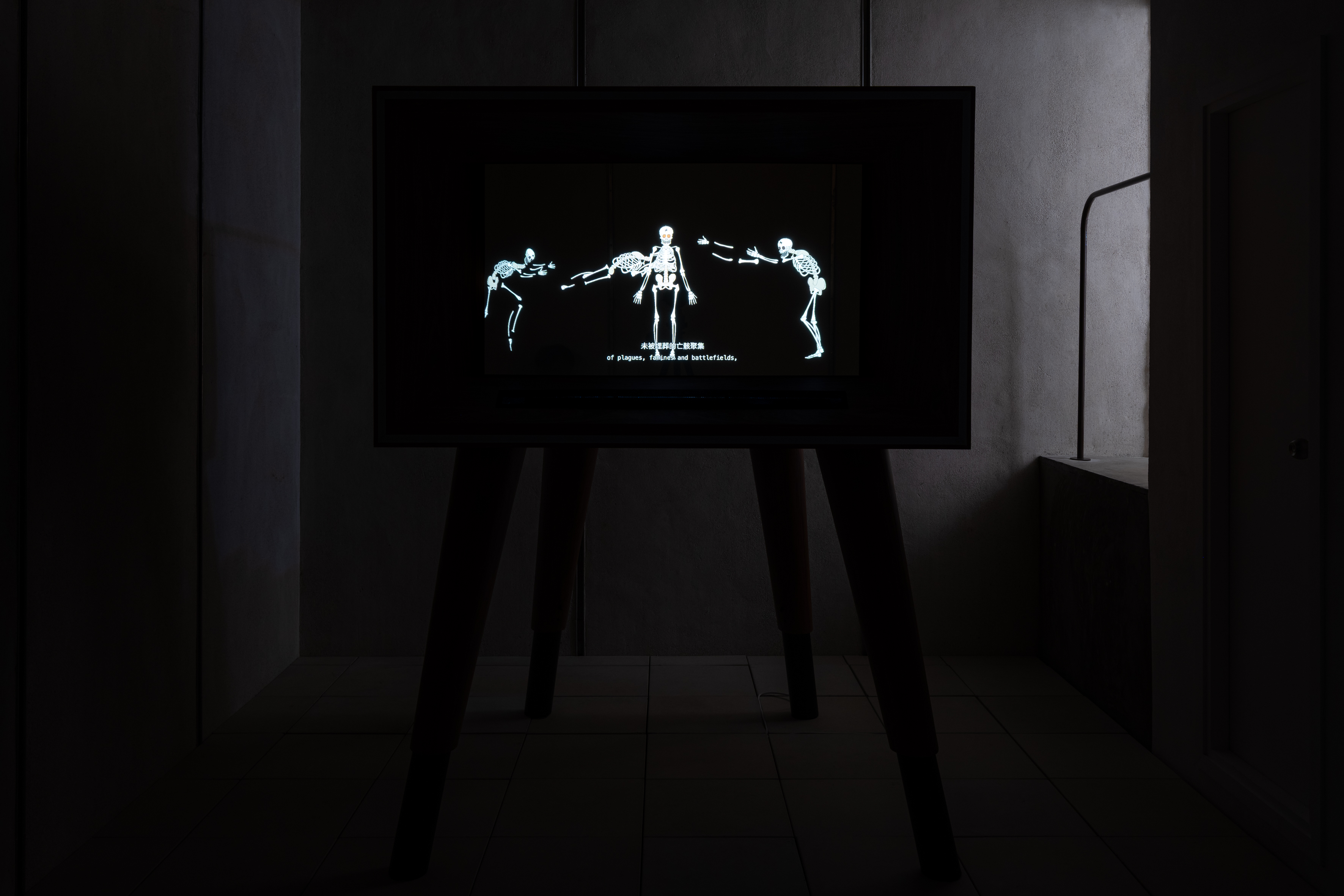
Miniature single channel video installation, projection on mirror, automated lights, soundbar
Video box size: 90 x 150 x 102.5 cm, variable height
19 min 30 sec
Installation view, “Three Stories: Monsters, Opium, Time”, Kiang Malingue, Hong Kong, 2025.
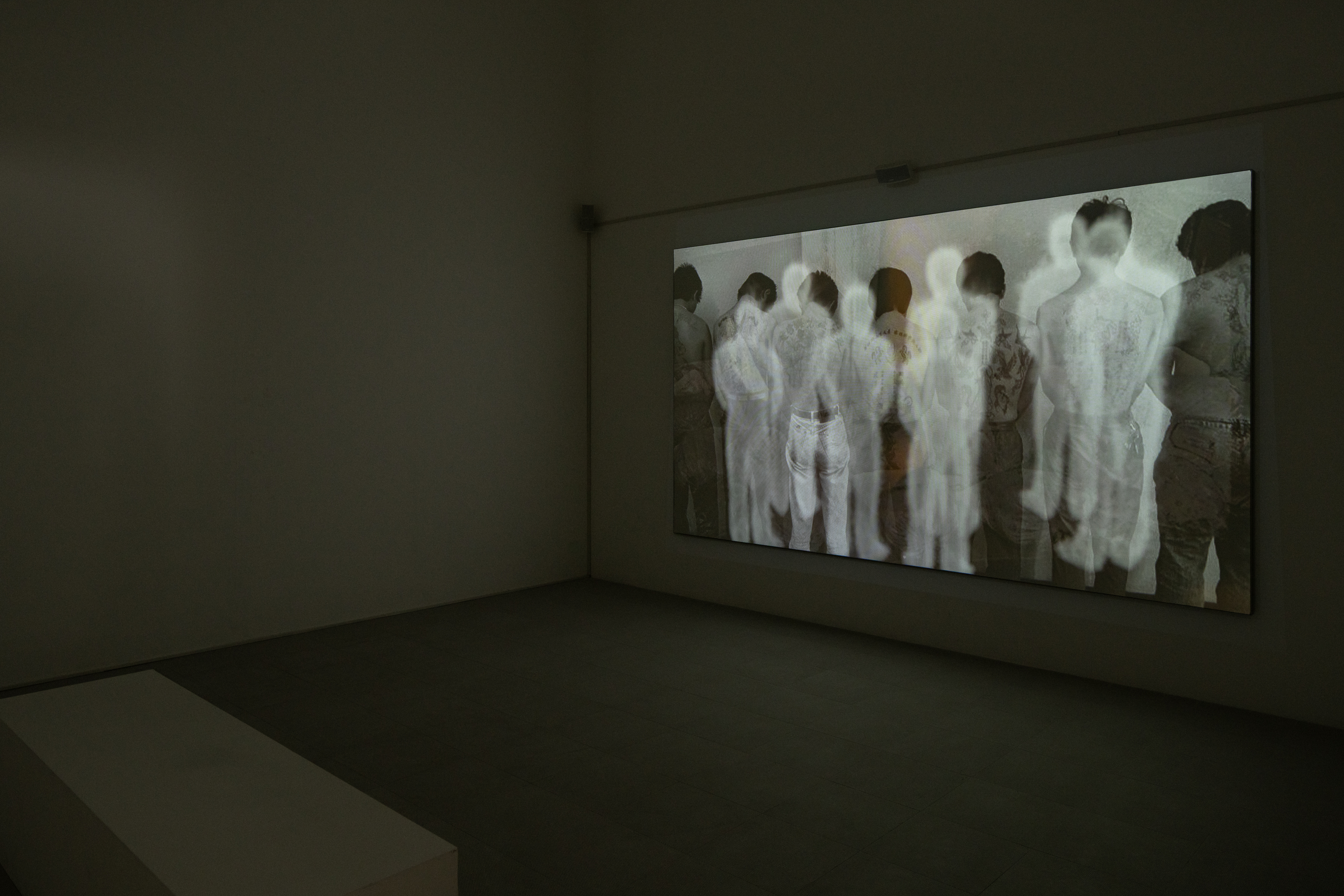
Installation view, “Three Stories: Monsters, Opium, Time”, Kiang Malingue, Hong Kong, 2025.
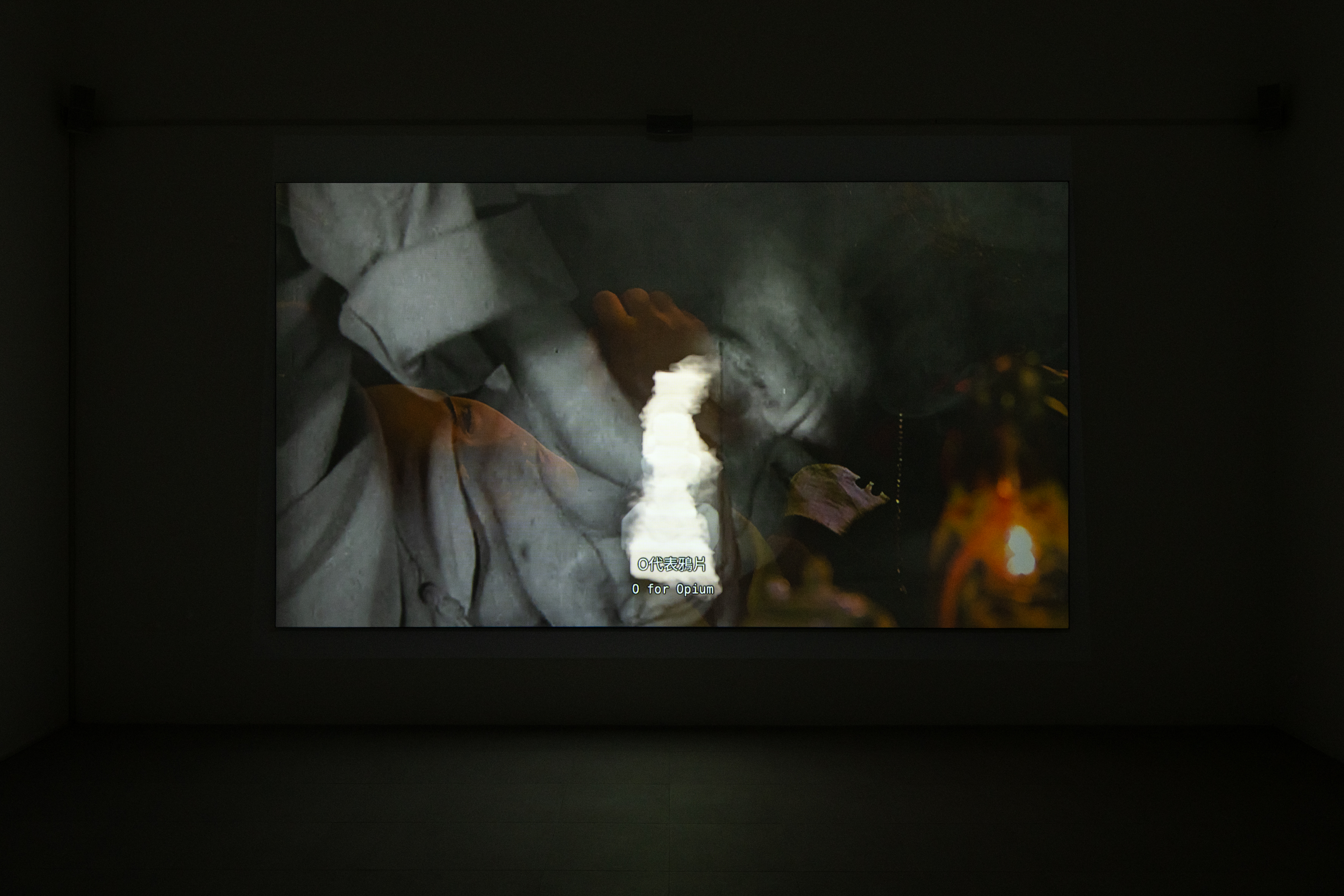
Installation view, “Three Stories: Monsters, Opium, Time”, Kiang Malingue, Hong Kong, 2025.
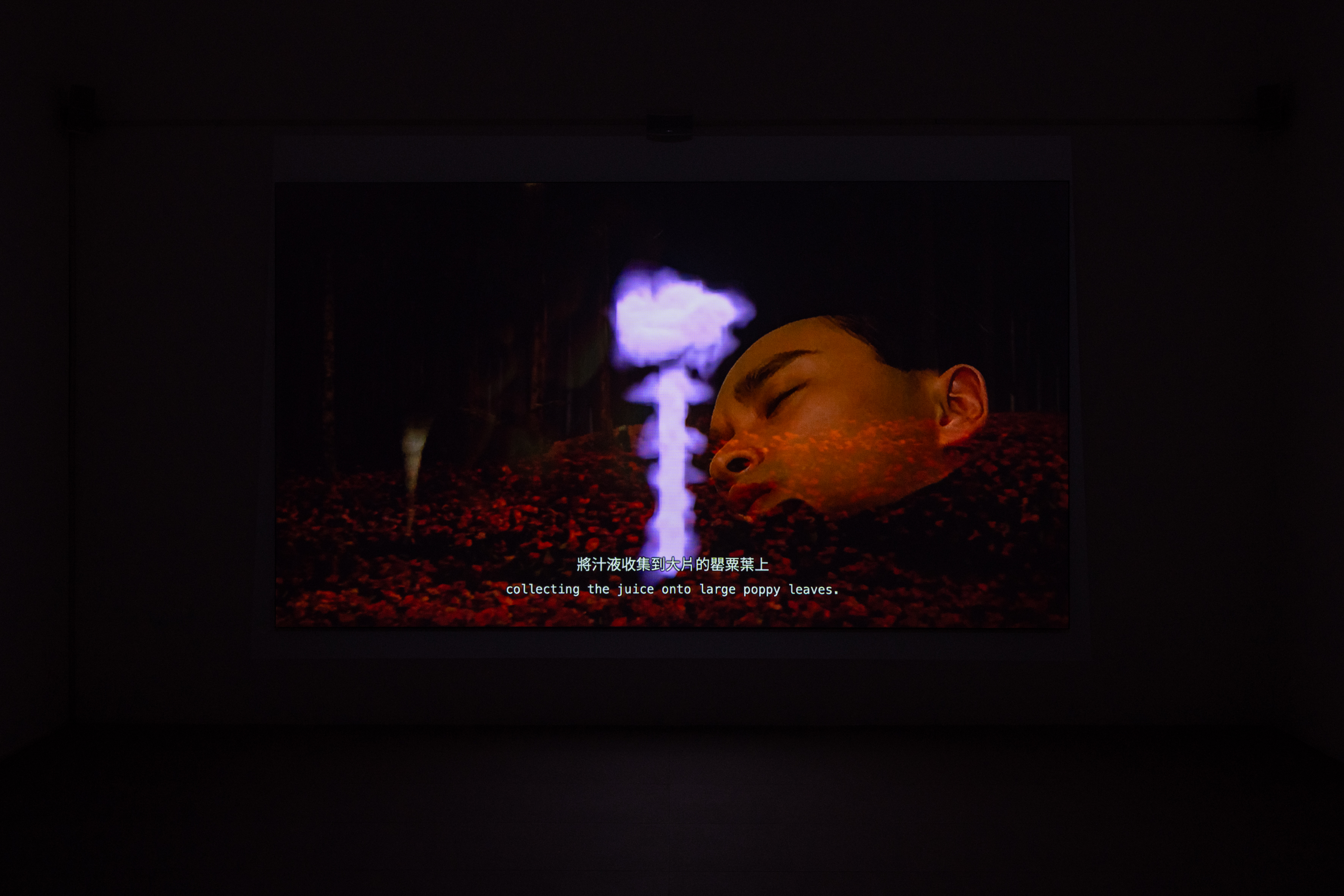
Installation view, “Three Stories: Monsters, Opium, Time”, Kiang Malingue, Hong Kong, 2025.
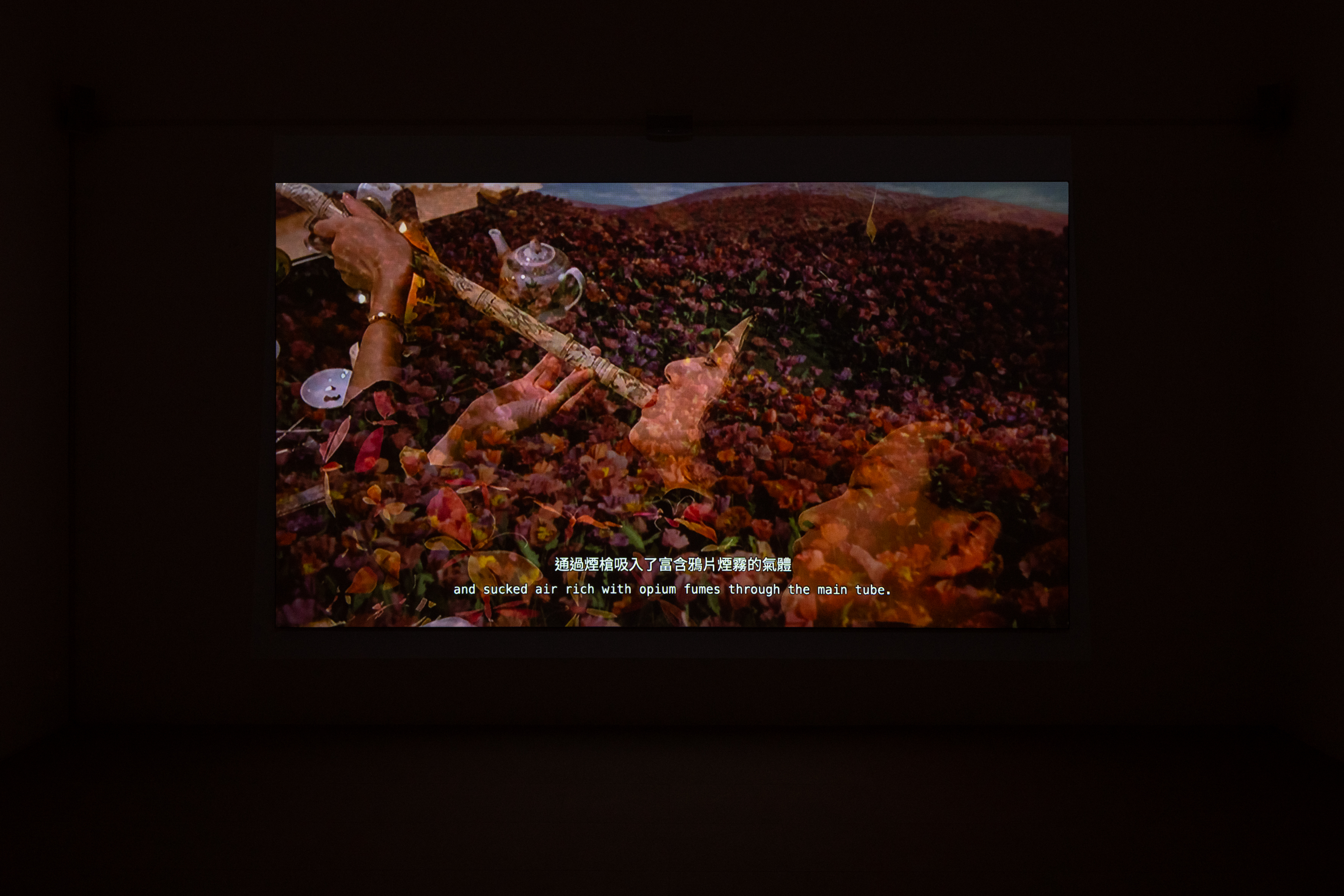
Installation view, “Three Stories: Monsters, Opium, Time”, Kiang Malingue, Hong Kong, 2025.
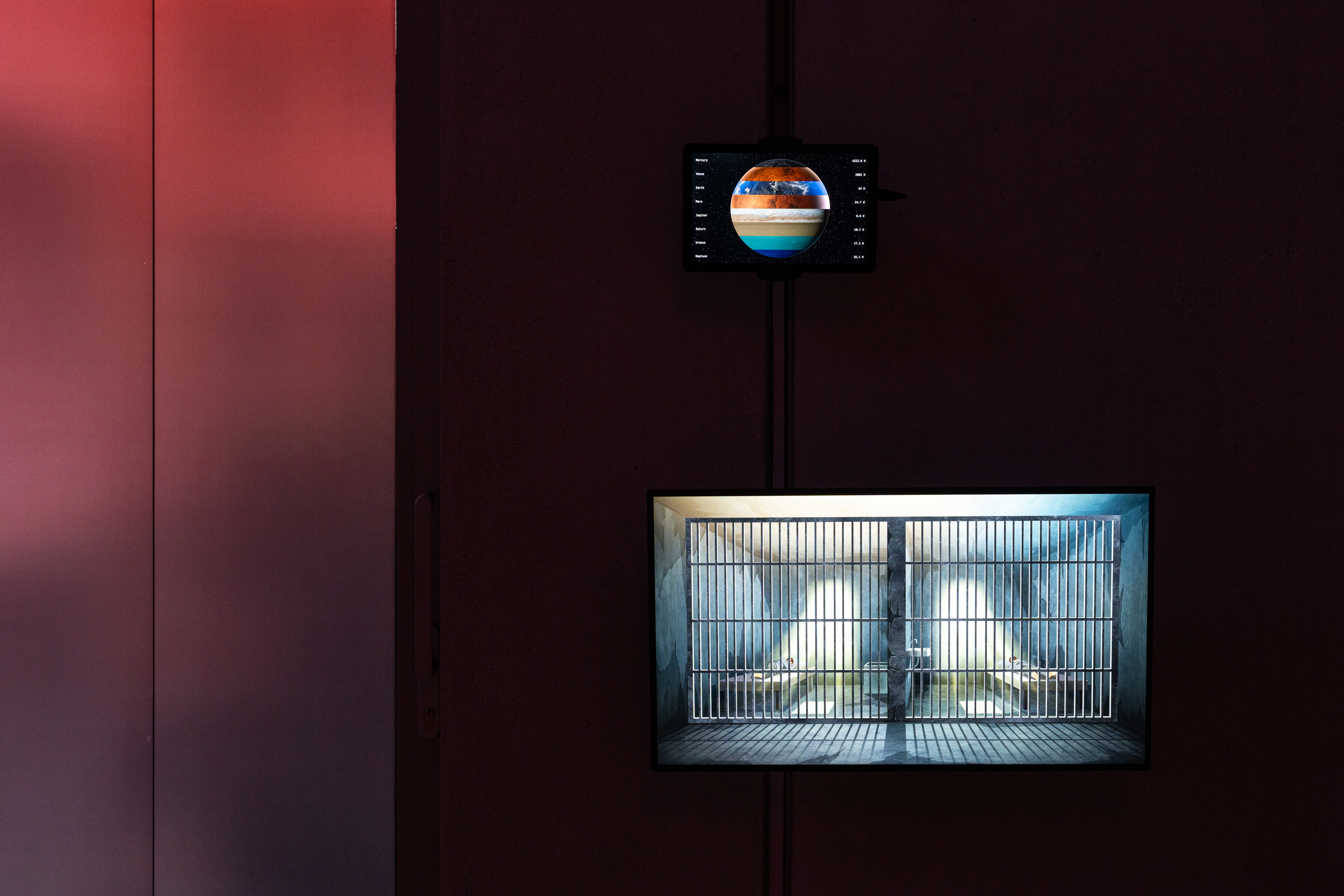
43 Flatscreens (various dimensions), apps and videos
various durations (1 second to infinite)
Installation view, “Three Stories: Monsters, Opium, Time”, Kiang Malingue, Hong Kong, 2025.
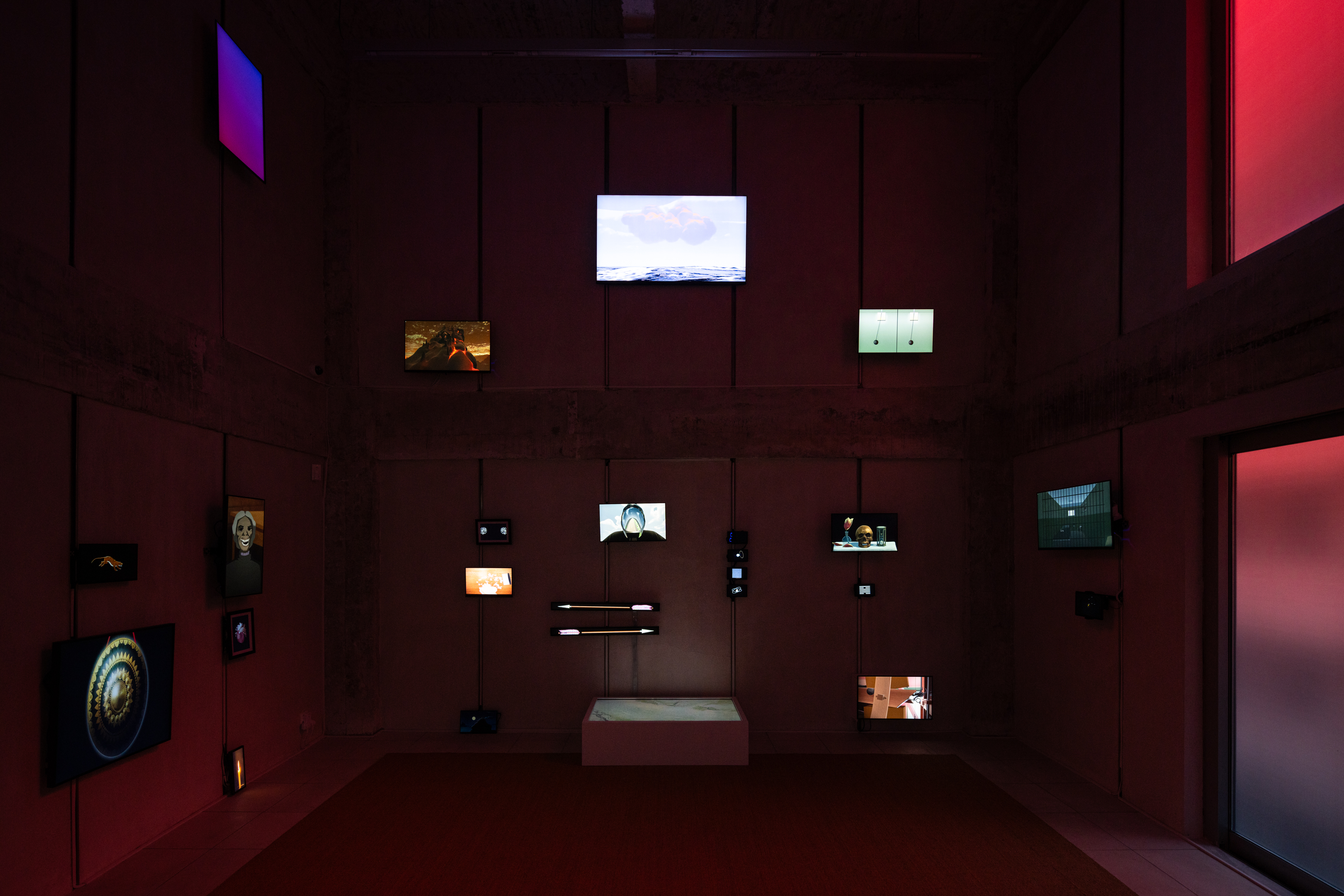
Installation view, “Three Stories: Monsters, Opium, Time”, Kiang Malingue, Hong Kong, 2025.

Installation view, “Three Stories: Monsters, Opium, Time”, Kiang Malingue, Hong Kong, 2025.
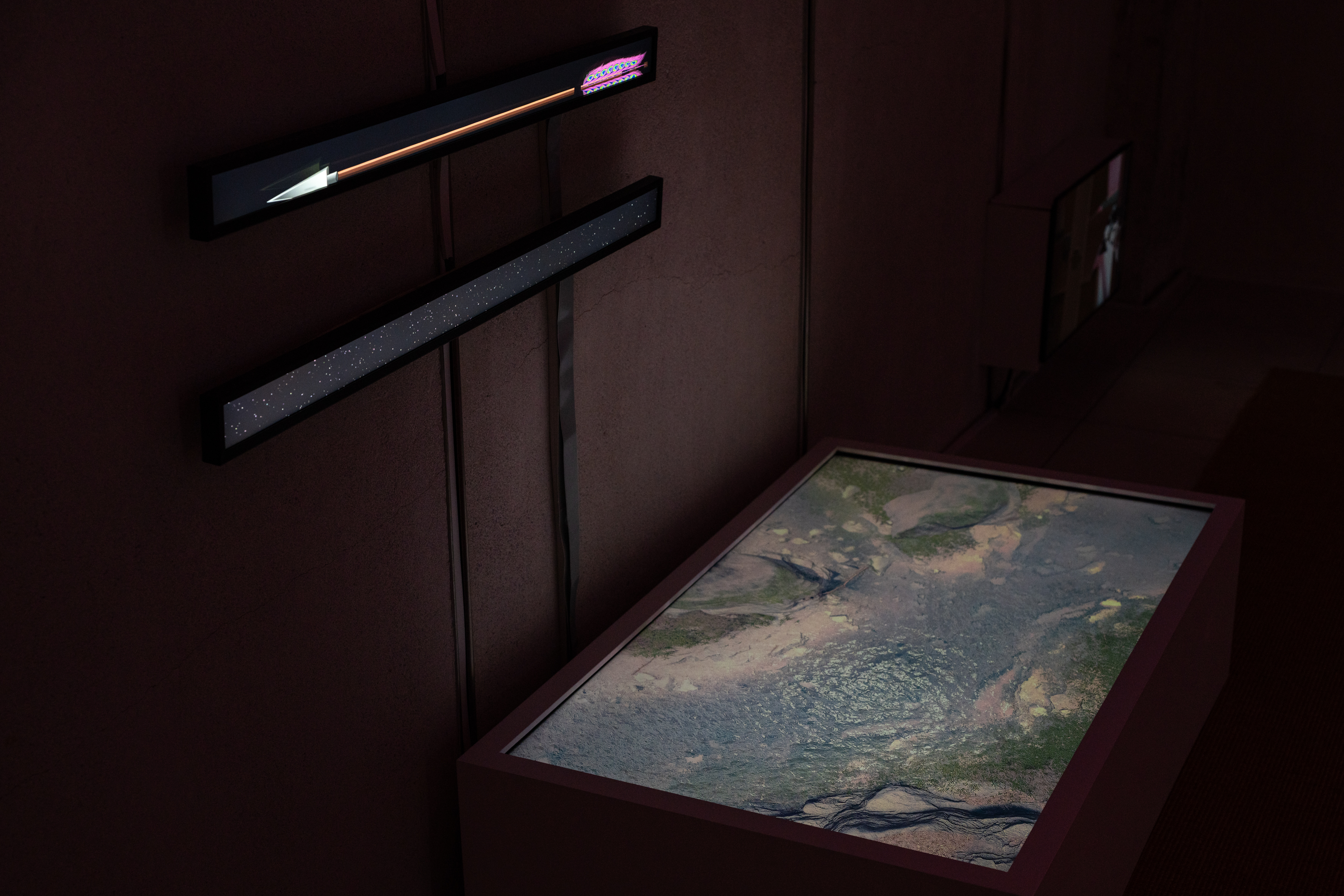
43 Flatscreens (various dimensions), apps and videos
various durations (1 second to infinite)
Installation view, “Three Stories: Monsters, Opium, Time”, Kiang Malingue, Hong Kong, 2025.
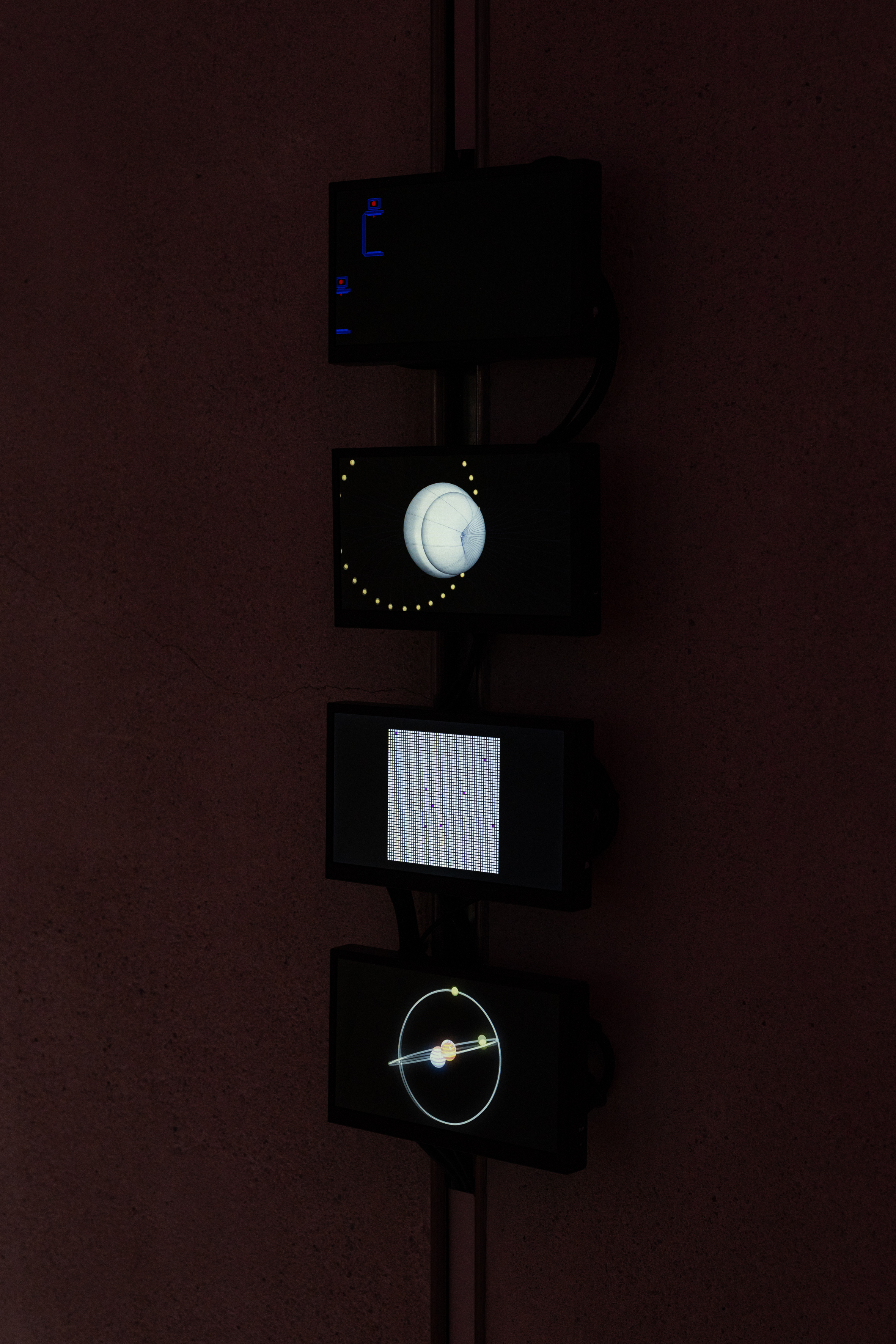
43 Flatscreens (various dimensions), apps and videos
various durations (1 second to infinite)
Installation view, “Three Stories: Monsters, Opium, Time”, Kiang Malingue, Hong Kong, 2025.
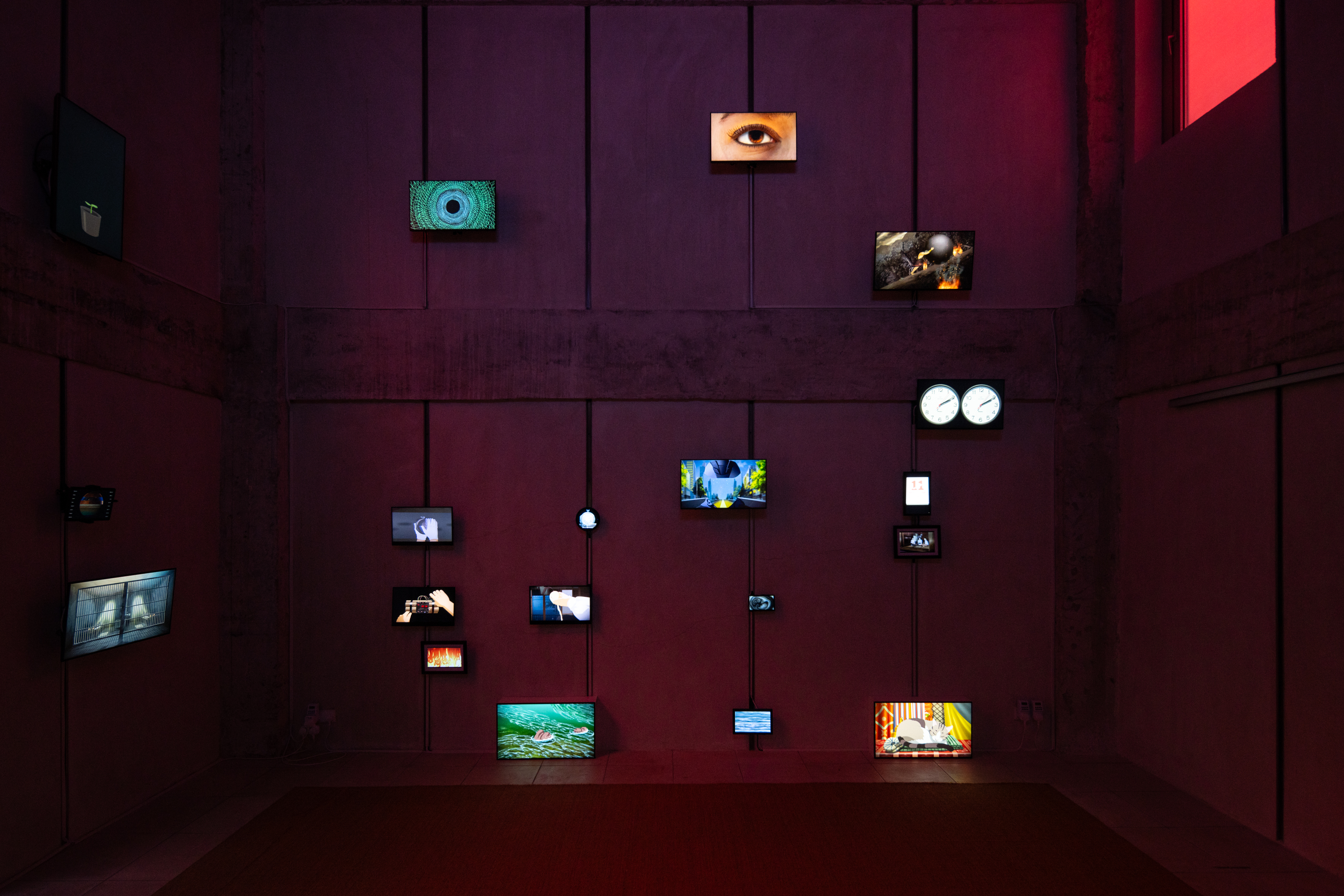
Installation view, “Three Stories: Monsters, Opium, Time”, Kiang Malingue, Hong Kong, 2025.
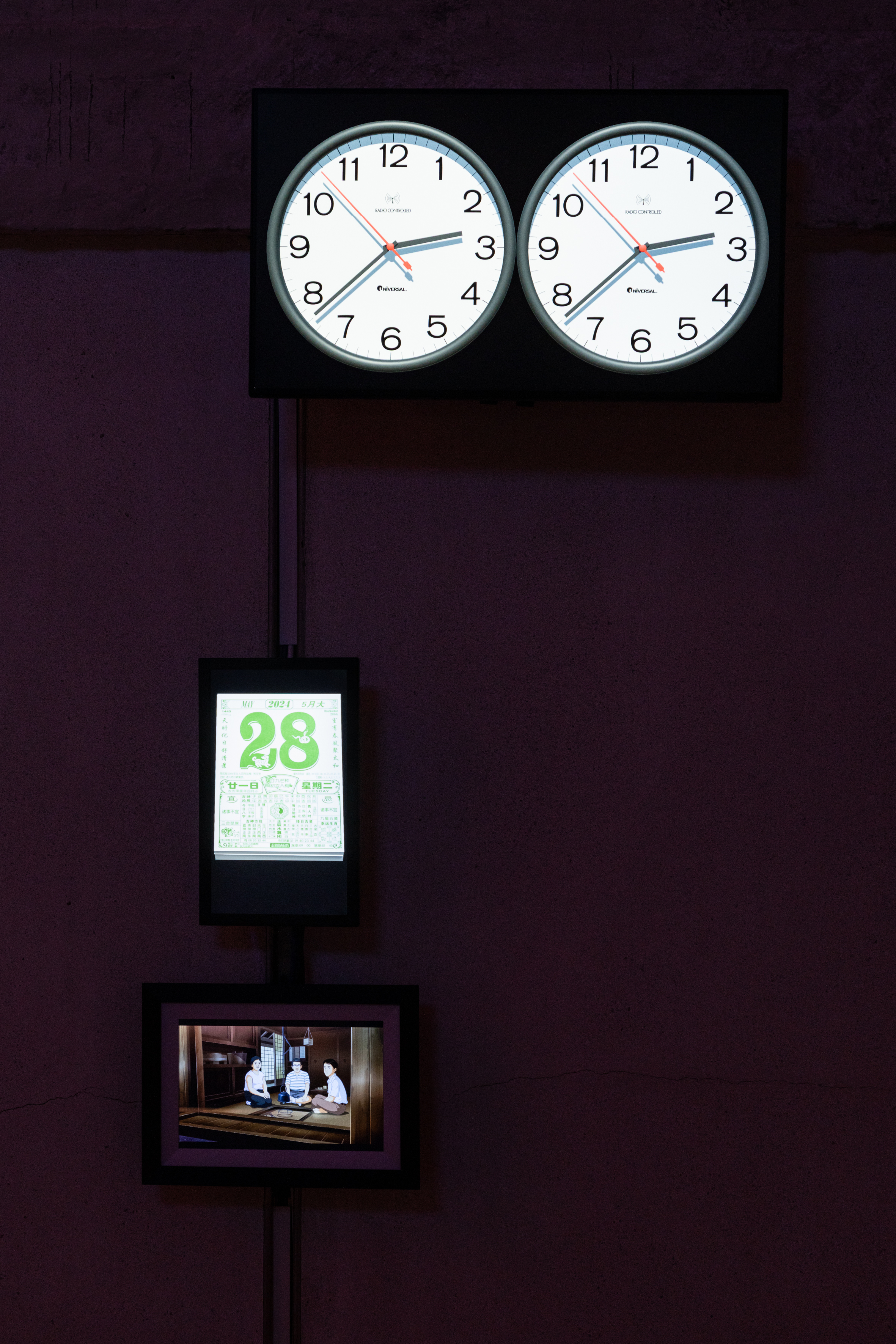
43 Flatscreens (various dimensions), apps and videos
various durations (1 second to infinite)
Installation view, “Three Stories: Monsters, Opium, Time”, Kiang Malingue, Hong Kong, 2025.
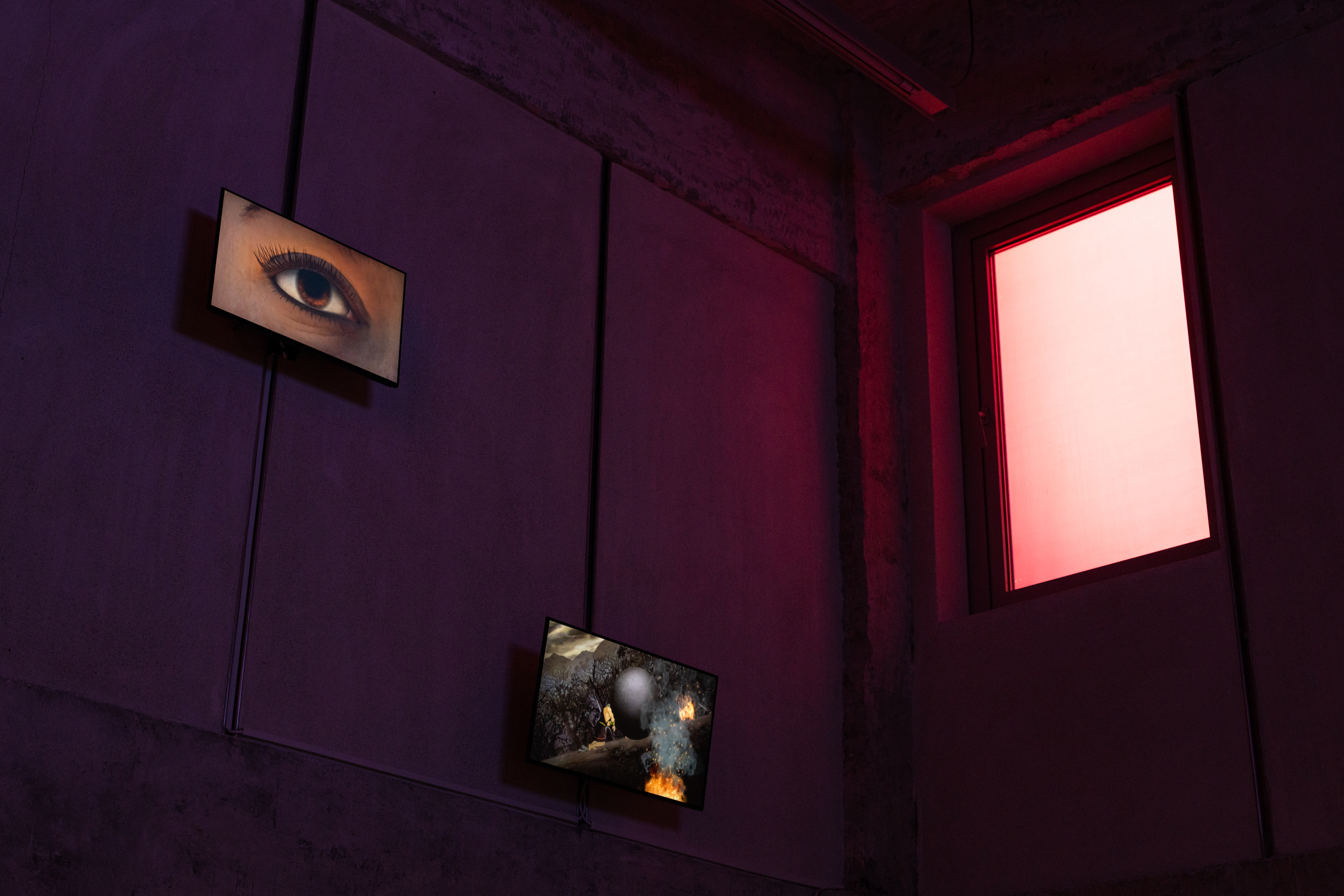
43 Flatscreens (various dimensions), apps and videos
various durations (1 second to infinite)
Installation view, “Three Stories: Monsters, Opium, Time”, Kiang Malingue, Hong Kong, 2025.
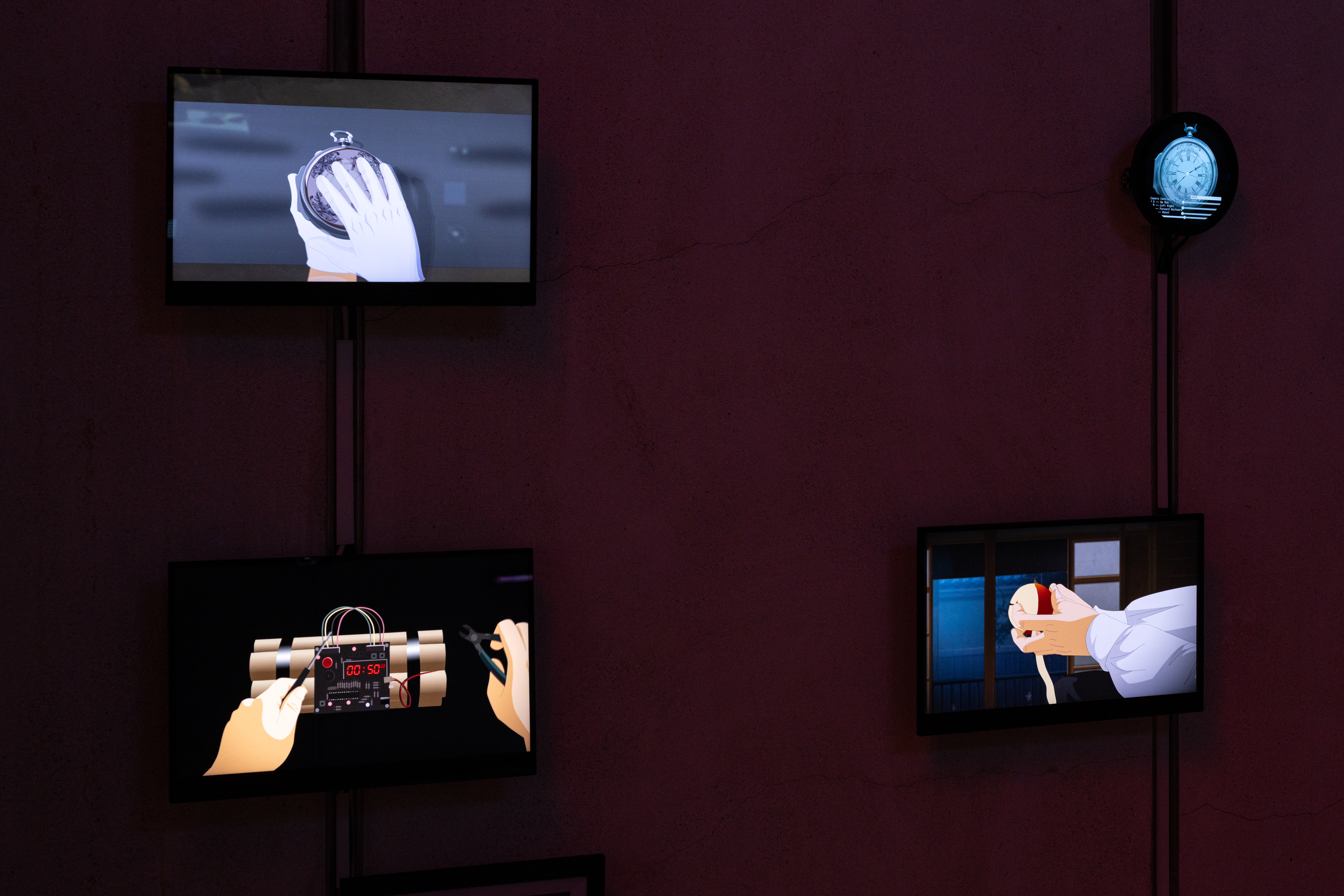
43 Flatscreens (various dimensions), apps and videos
various durations (1 second to infinite)
Installation view, “Three Stories: Monsters, Opium, Time”, Kiang Malingue, Hong Kong, 2025.
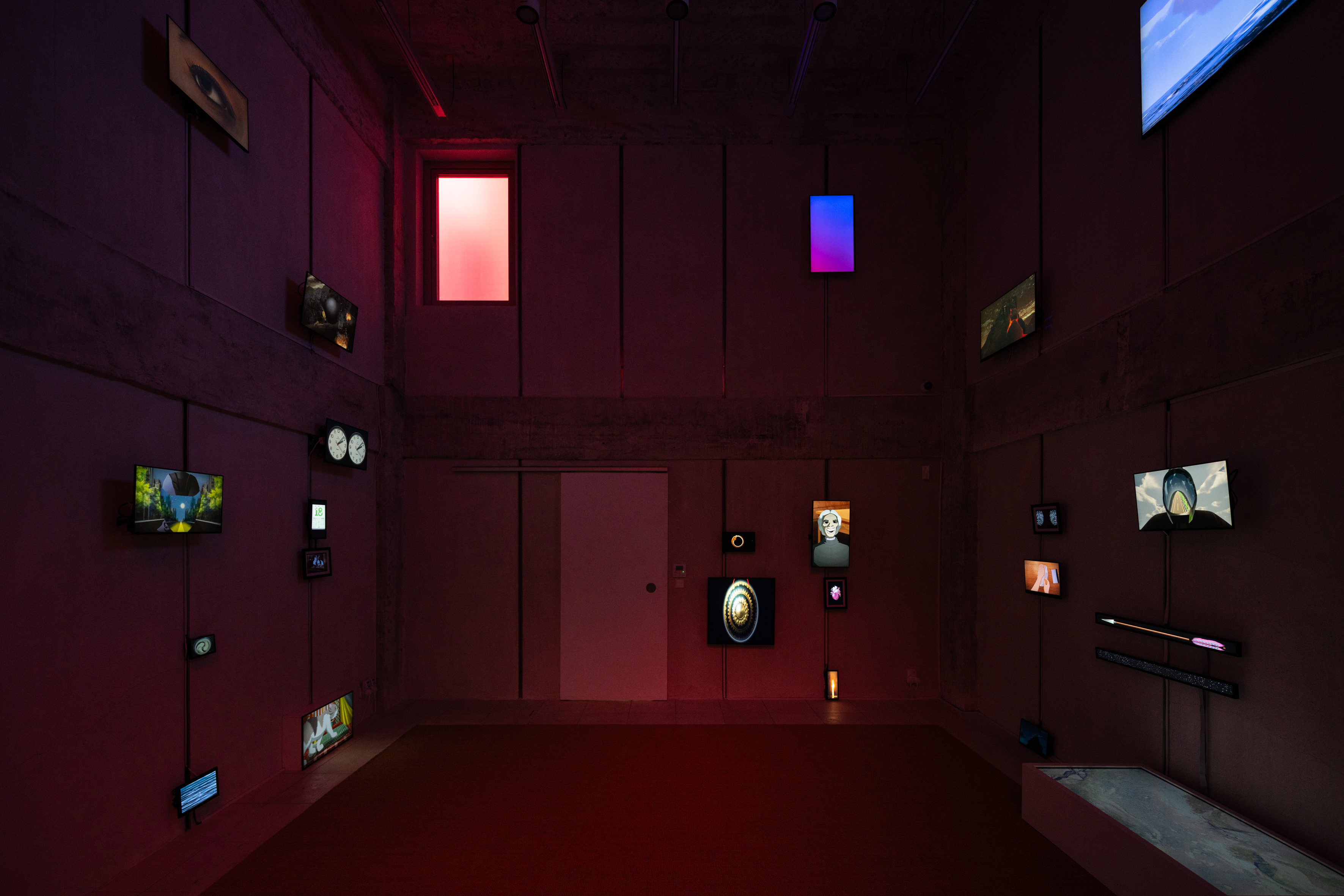
Installation view, “Three Stories: Monsters, Opium, Time”, Kiang Malingue, Hong Kong, 2025.
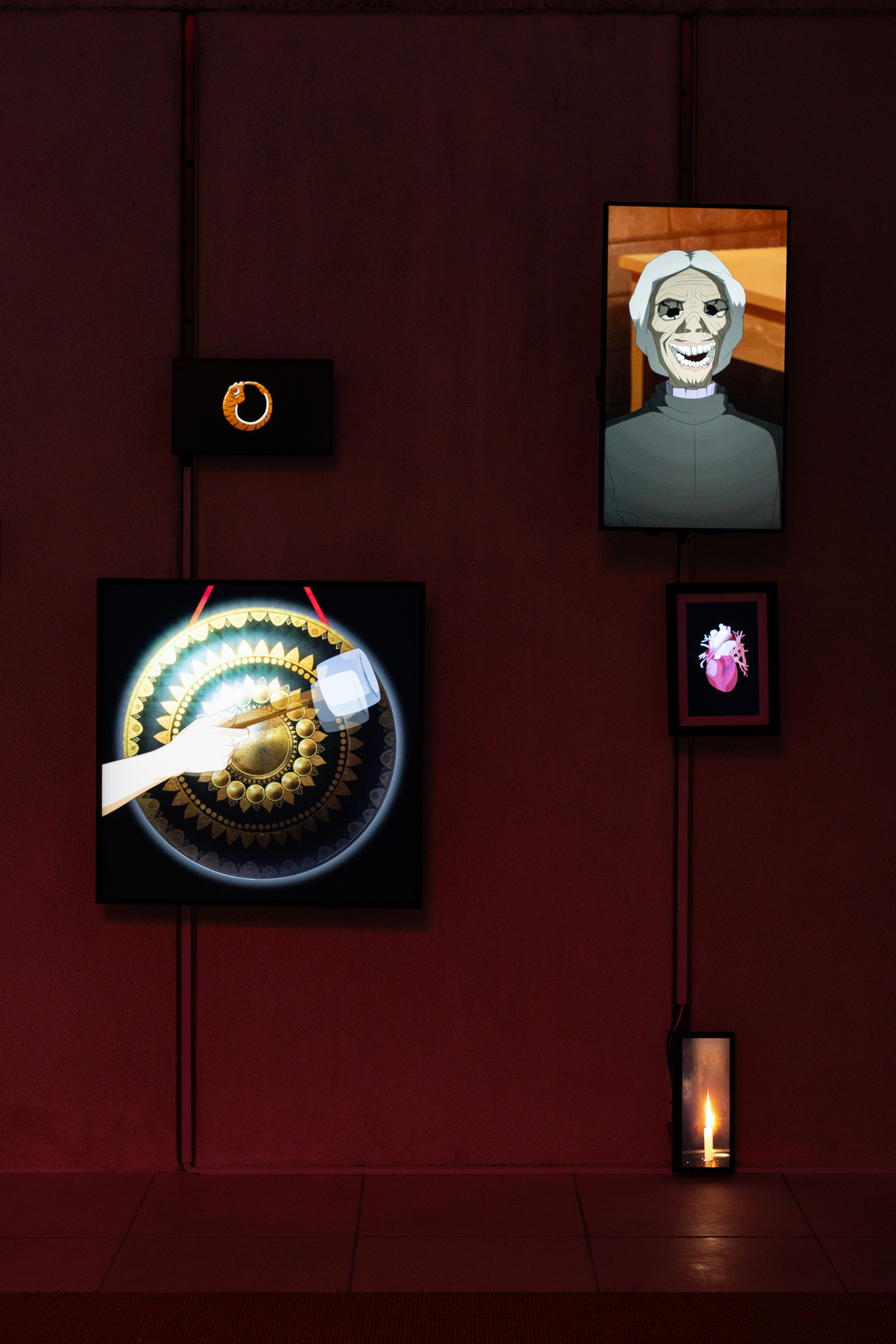
43 Flatscreens (various dimensions), apps and videos
various durations (1 second to infinite)
Installation view, “Three Stories: Monsters, Opium, Time”, Kiang Malingue, Hong Kong, 2025.
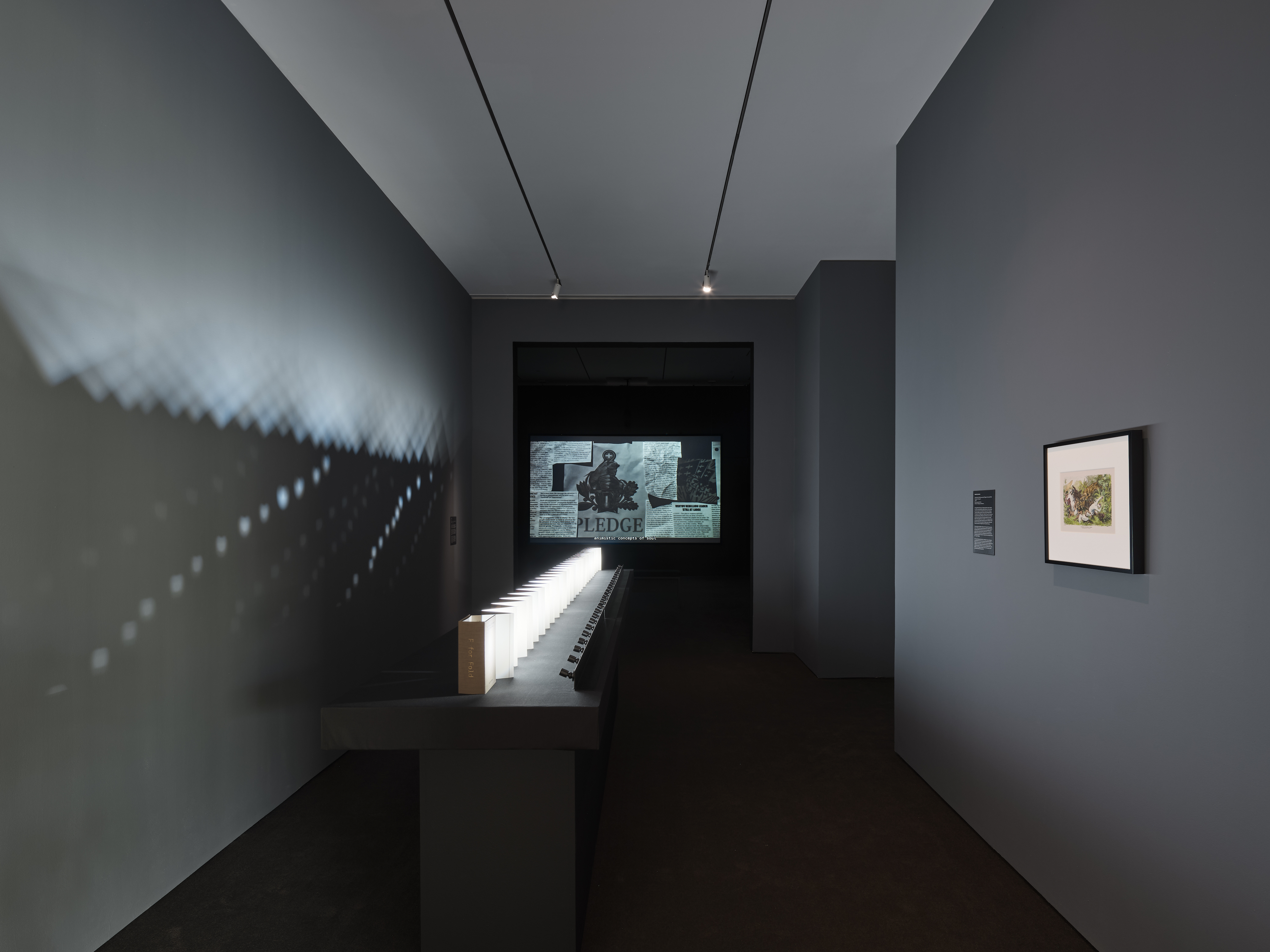
“Time & the Tiger”, Hessel Art Museum, New York, U.S.A., 2024.
Courtesy of the artist and Center for Curatorial Studies, Bard College.
Photo credit: Olympia Shannon, 2024.
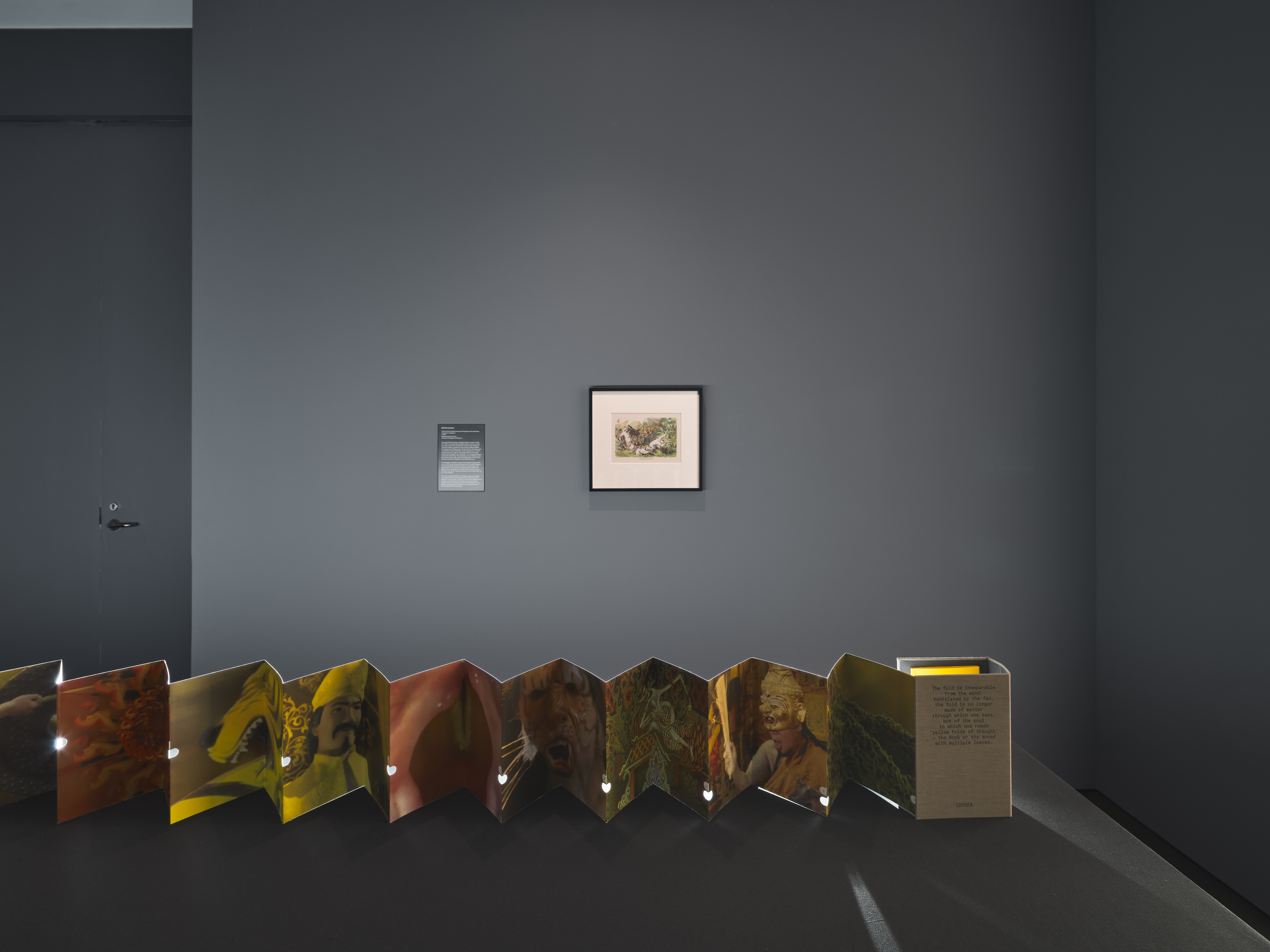
“Time & the Tiger”, Hessel Art Museum, New York, U.S.A., 2024.
Courtesy of the artist and Center for Curatorial Studies, Bard College.
Photo credit: Olympia Shannon, 2024.
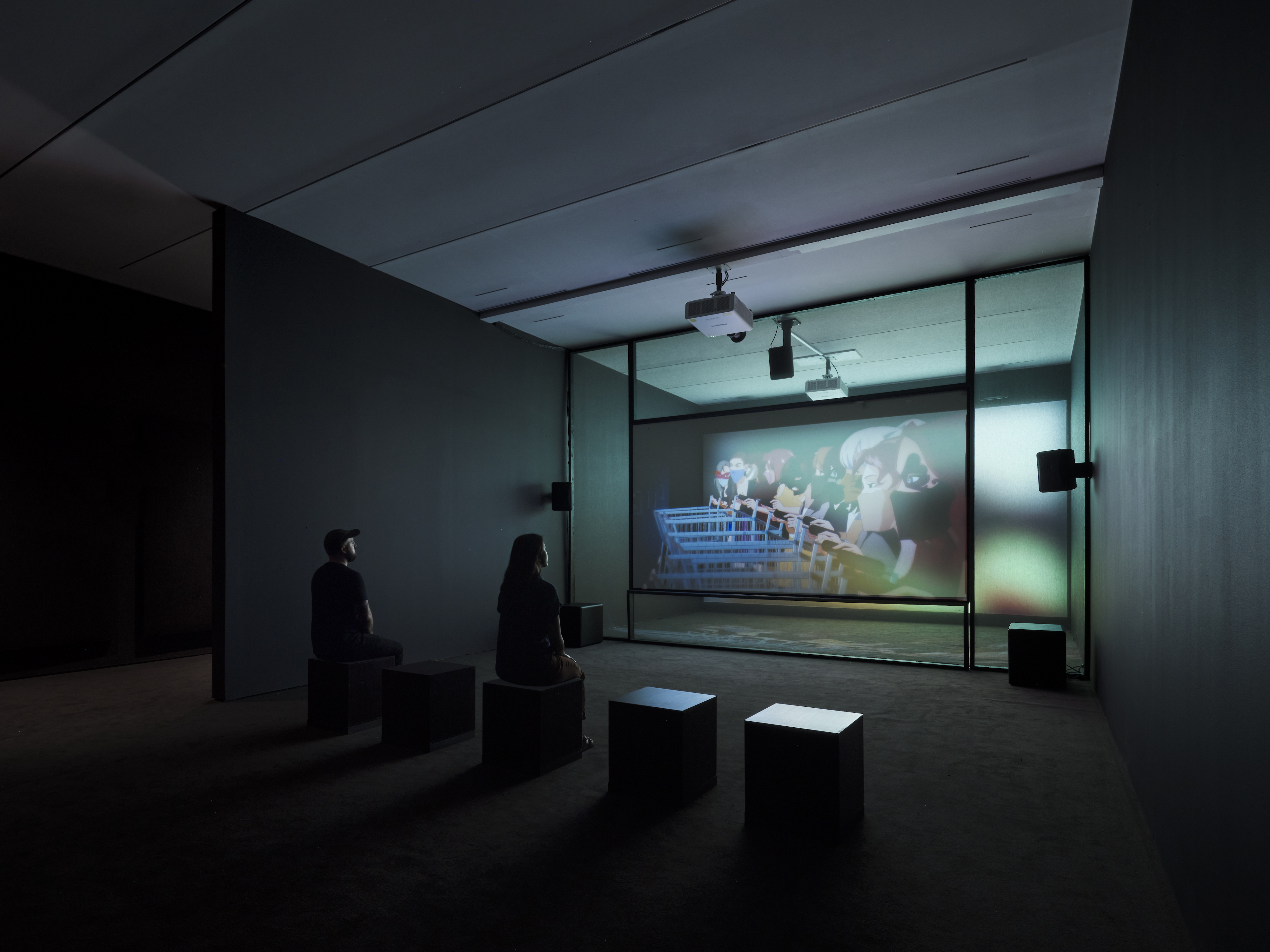
Video installation: 2-channel HD projection (16:9, synchronized, color), real-time algorithmic editing and compositing system, internet, voile screen, 8-channel sound
60′
Courtesy of the artist and Center for Curatorial Studies, Bard College.
Photo credit: Olympia Shannon, 2024.
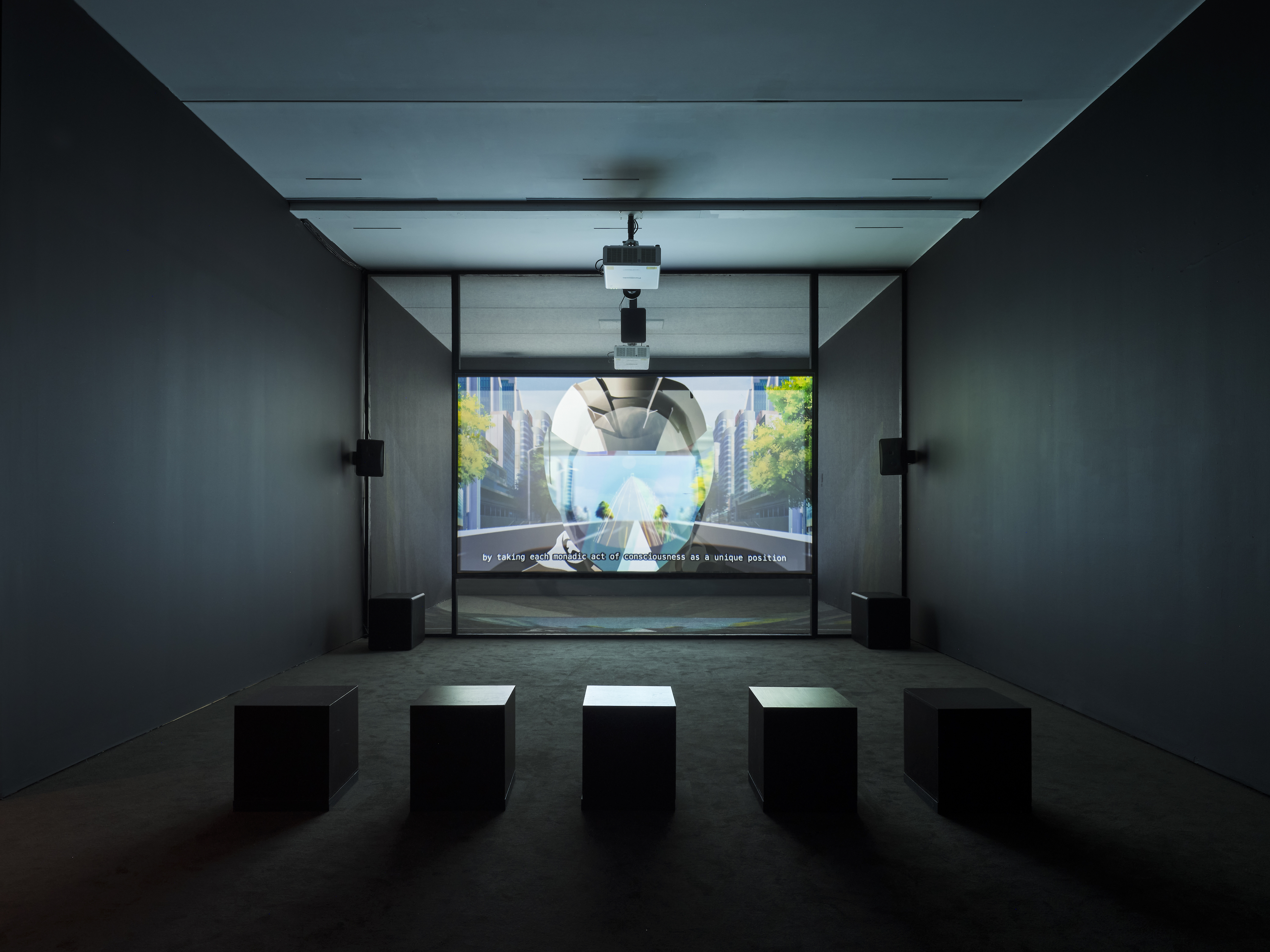
Video installation: 2-channel HD projection (16:9, synchronized, color), real-time algorithmic editing and compositing system, internet, voile screen, 8-channel sound
60′
Courtesy of the artist and Center for Curatorial Studies, Bard College.
Photo credit: Olympia Shannon, 2024.
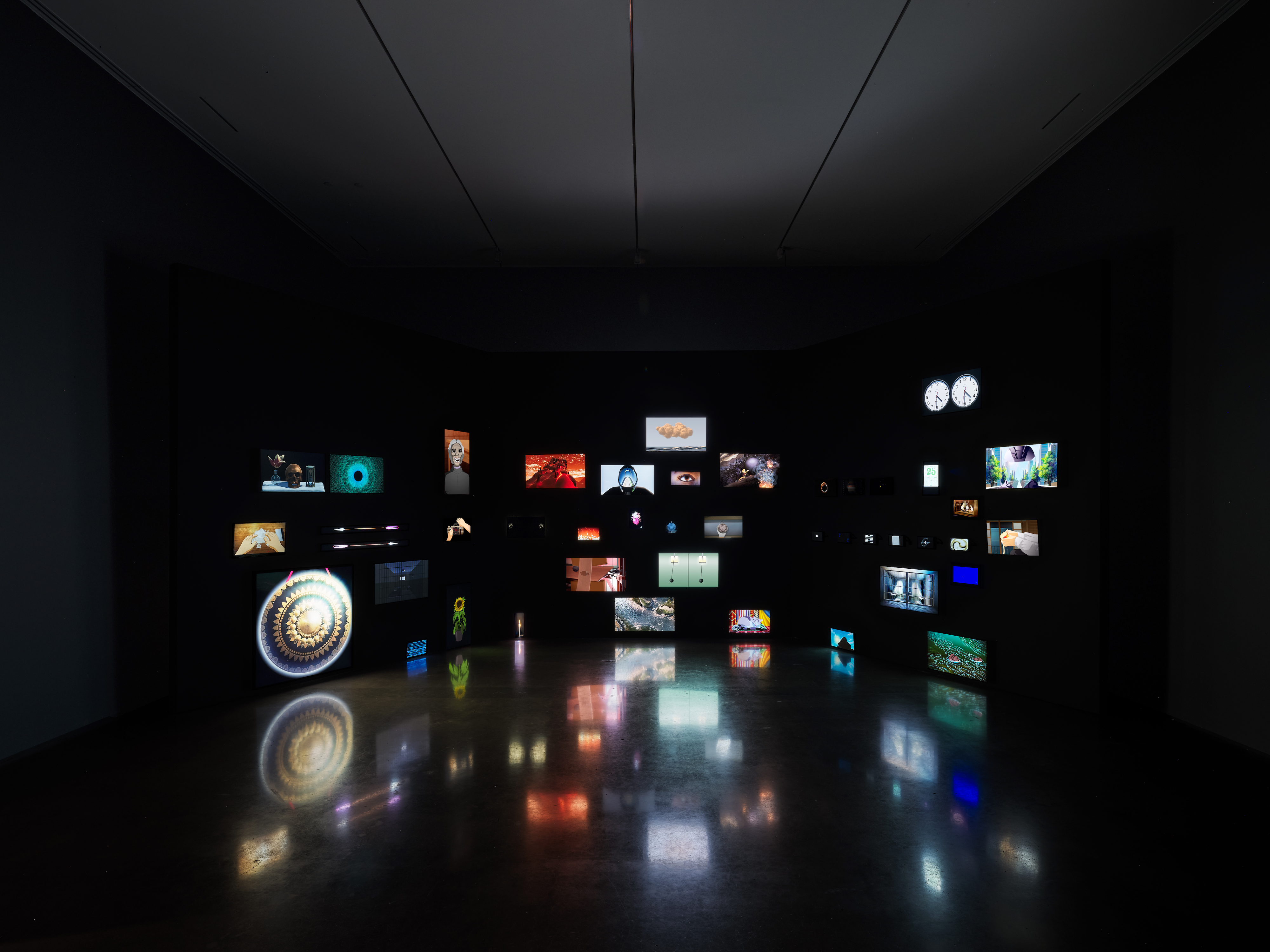
43 flatscreens (various dimensions), apps and videos, various durations (1 seconds to infinite).
Courtesy of the artist and Center for Curatorial Studies, Bard College.
Photo credit: Olympia Shannon, 2024.
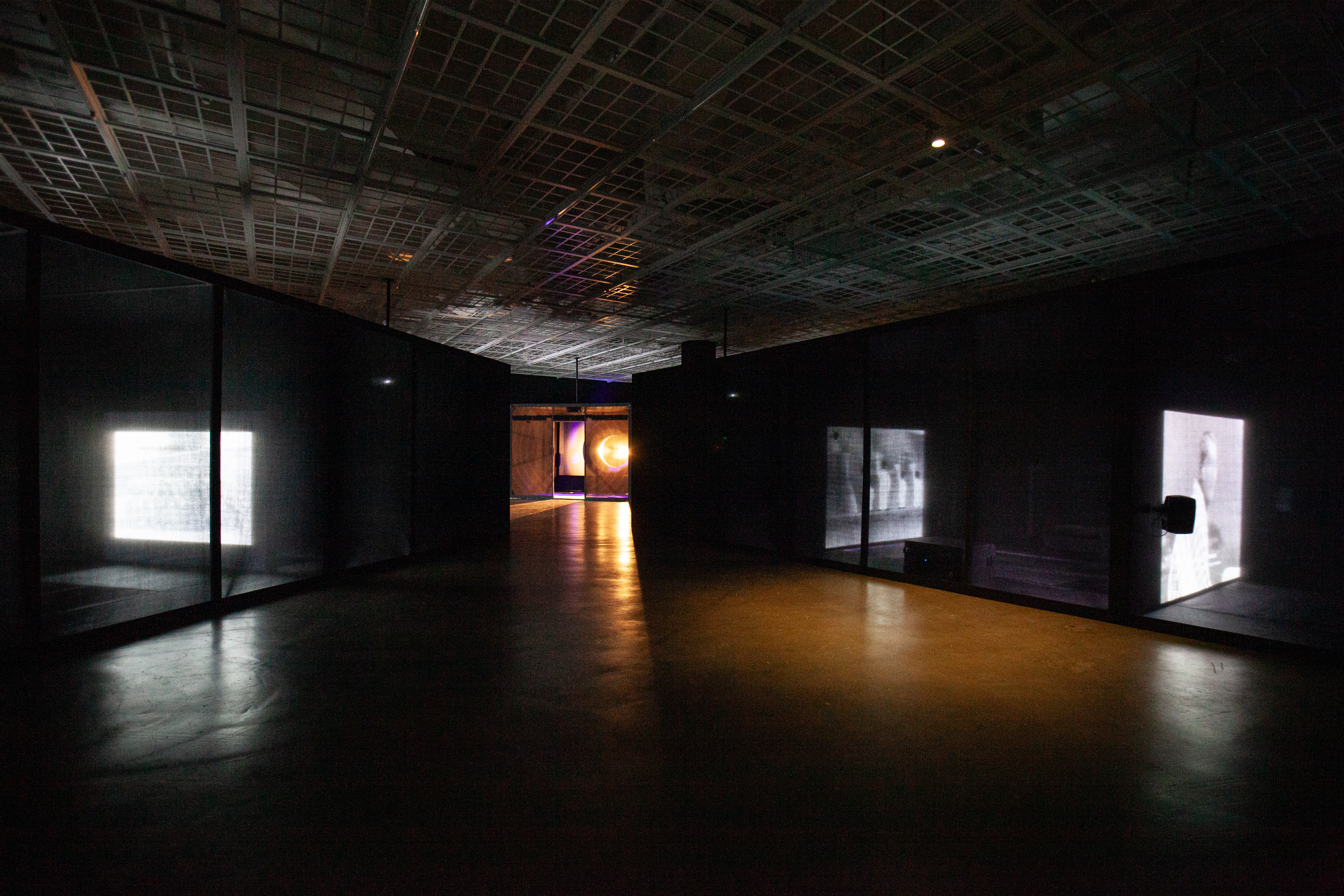
‘Ho Tzu Nyen: Time & the Cloud’, Art Sonje Center, Seoul, South Korea, 2024.
Photo: Seowon Nam. Courtesy of Art Sonje Center ⓒ 2024. Art Sonje Center all rights reserved.
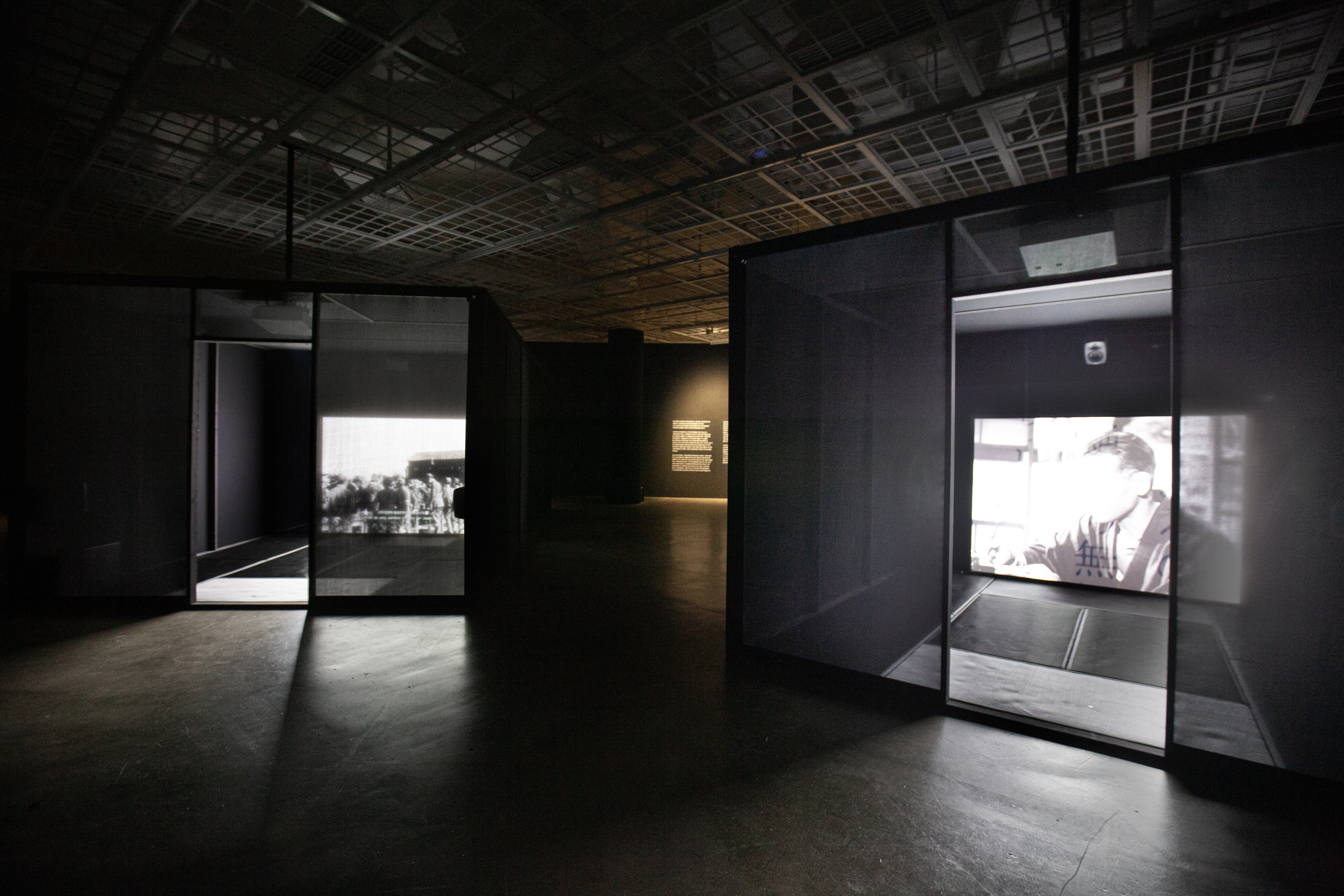
‘Ho Tzu Nyen: Time & the Cloud’, Art Sonje Center, Seoul, South Korea, 2024.
Photo: Seowon Nam. Courtesy of Art Sonje Center ⓒ 2024. Art Sonje Center all rights reserved.
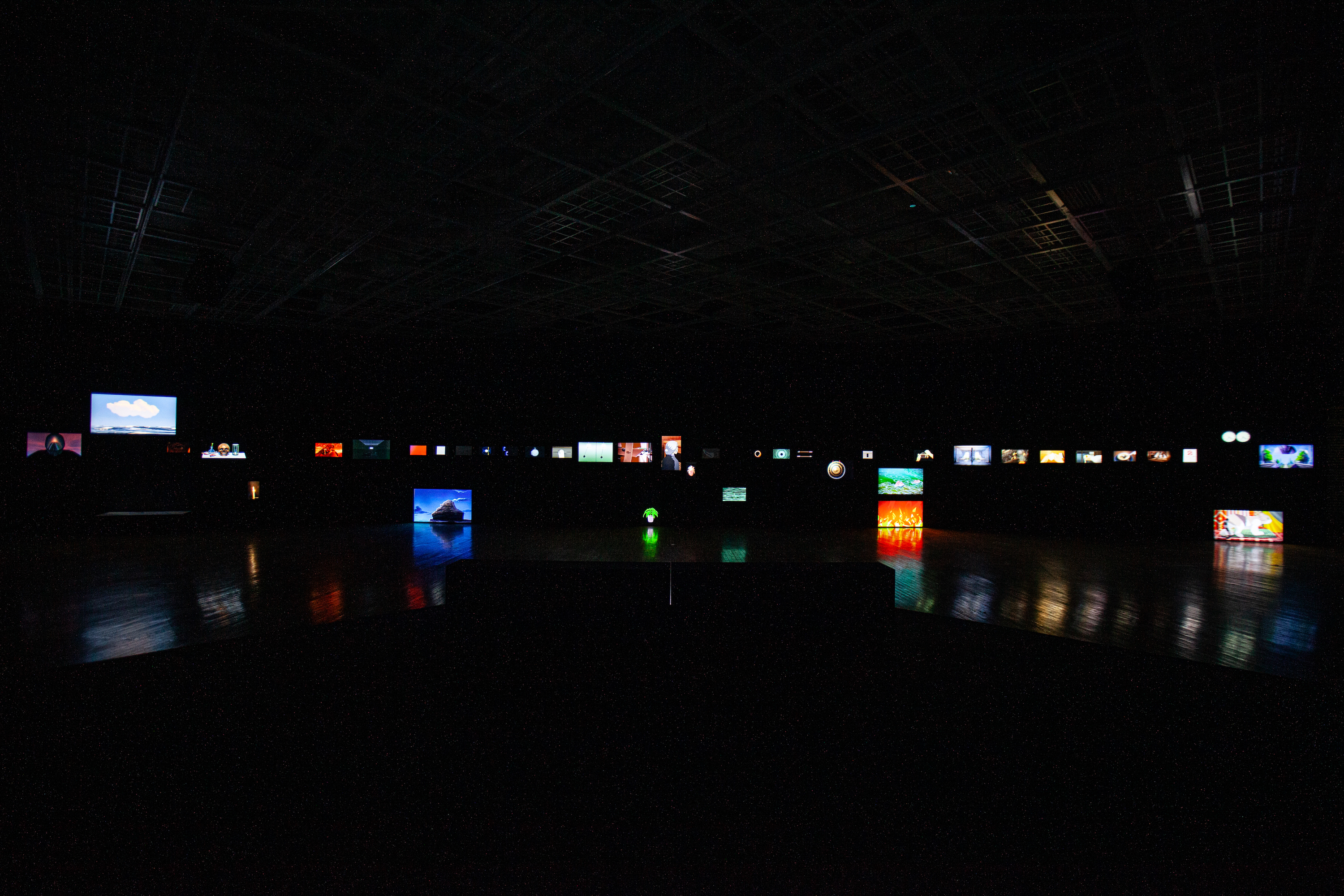
43 flatscreens (various dimensions), apps and videos, various durations (30 seconds to infinite).
Photo: Seowon Nam. Courtesy of Art Sonje Center ⓒ 2024. Art Sonje Center all rights reserved.
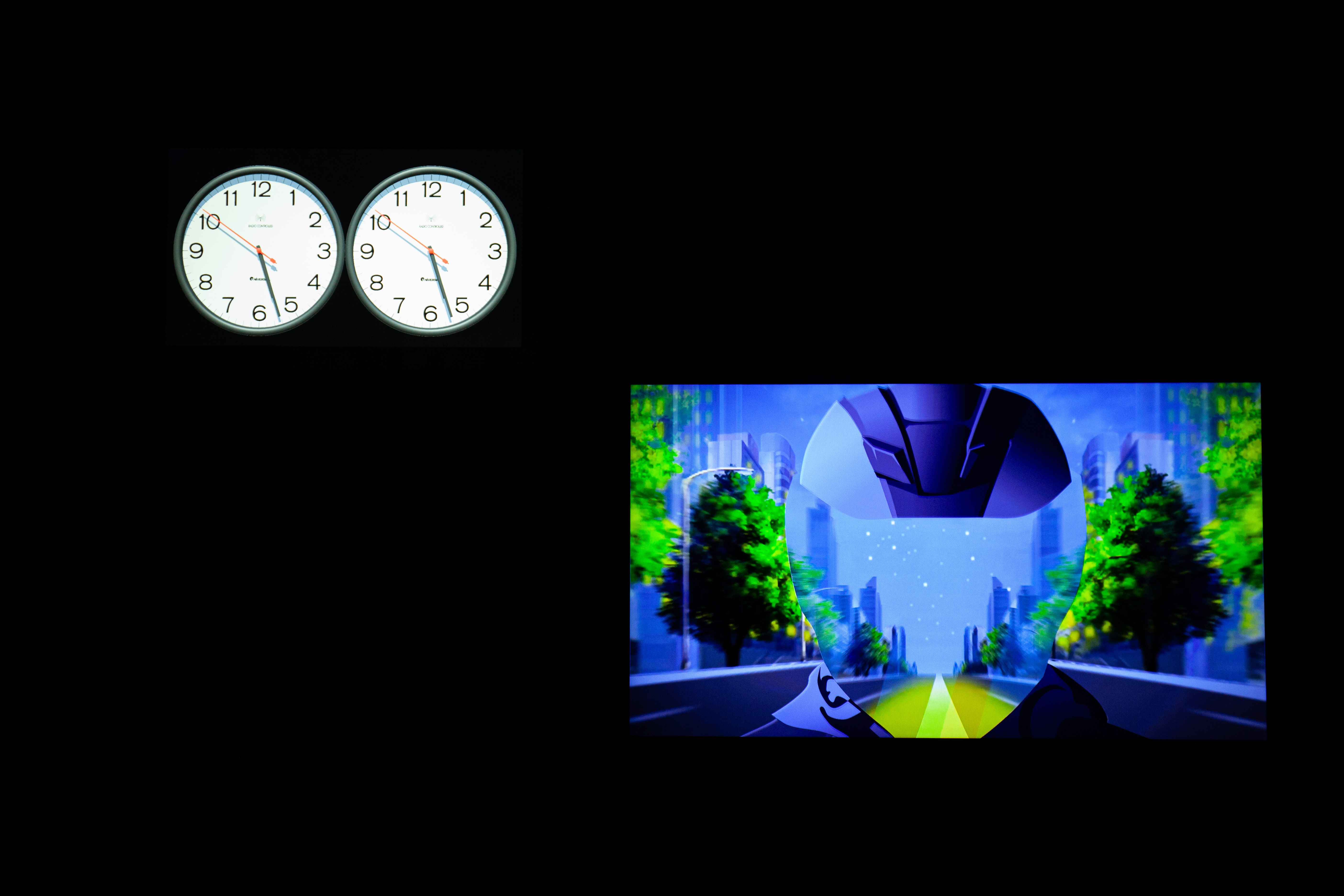
43 flatscreens (various dimensions), apps and videos, various durations (30 seconds to infinite).
Photo: Seowon Nam. Courtesy of Art Sonje Center ⓒ 2024. Art Sonje Center all rights reserved.
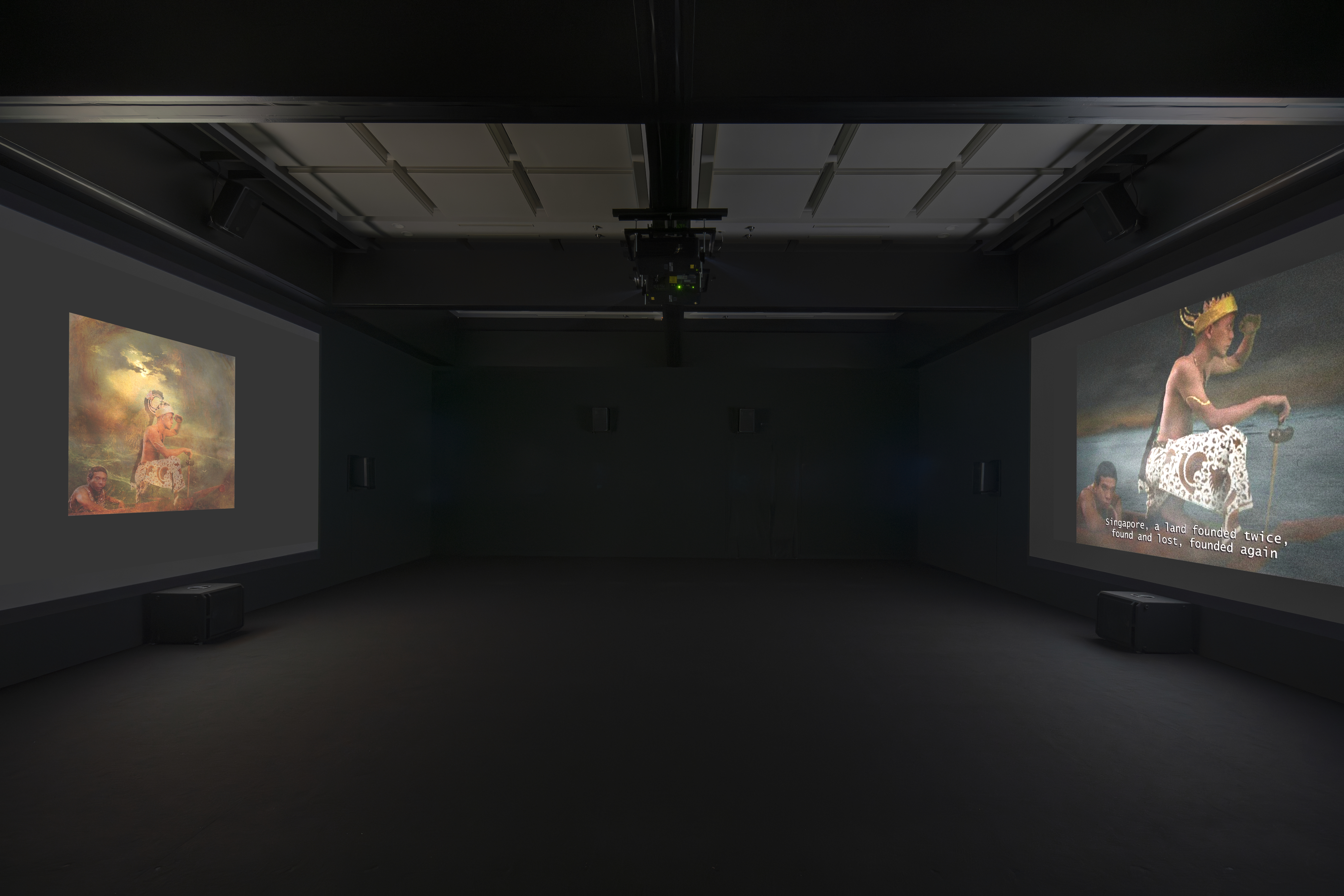
Video installation: 2-channel HD projection (4:3, synchronized, color), 2-channel sound
21ʼ 27”
Installation view, Ho Tzu Nyen: A for Agents, Museum of Contemporary Art Tokyo, Japan, 2024.
Photo by Kenji Morita.
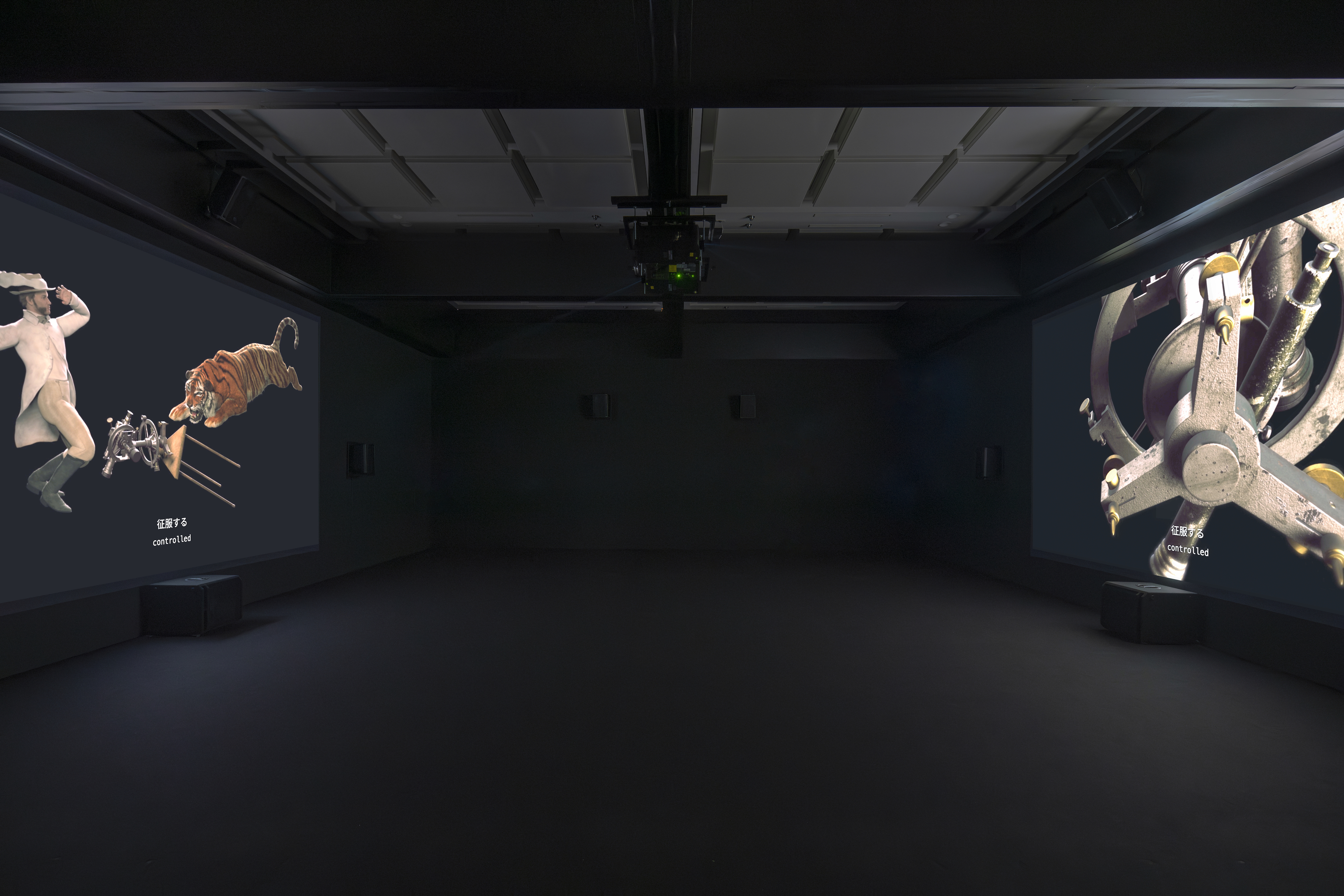
Video installation: 2-channel HD projection (16:9, synchronized, color), 12-channel sound
33ʼ 33”
Installation view, Ho Tzu Nyen: A for Agents, Museum of Contemporary Art Tokyo, Japan, 2024.
Photo by Kenji Morita.

Video installation: 2-channel HD projection (16:9, synchronized, color), 12-channel sound
16ʼ 51”
Installation view, Ho Tzu Nyen: A for Agents, Museum of Contemporary Art Tokyo, Japan, 2024.
Photo by Kenji Morita.
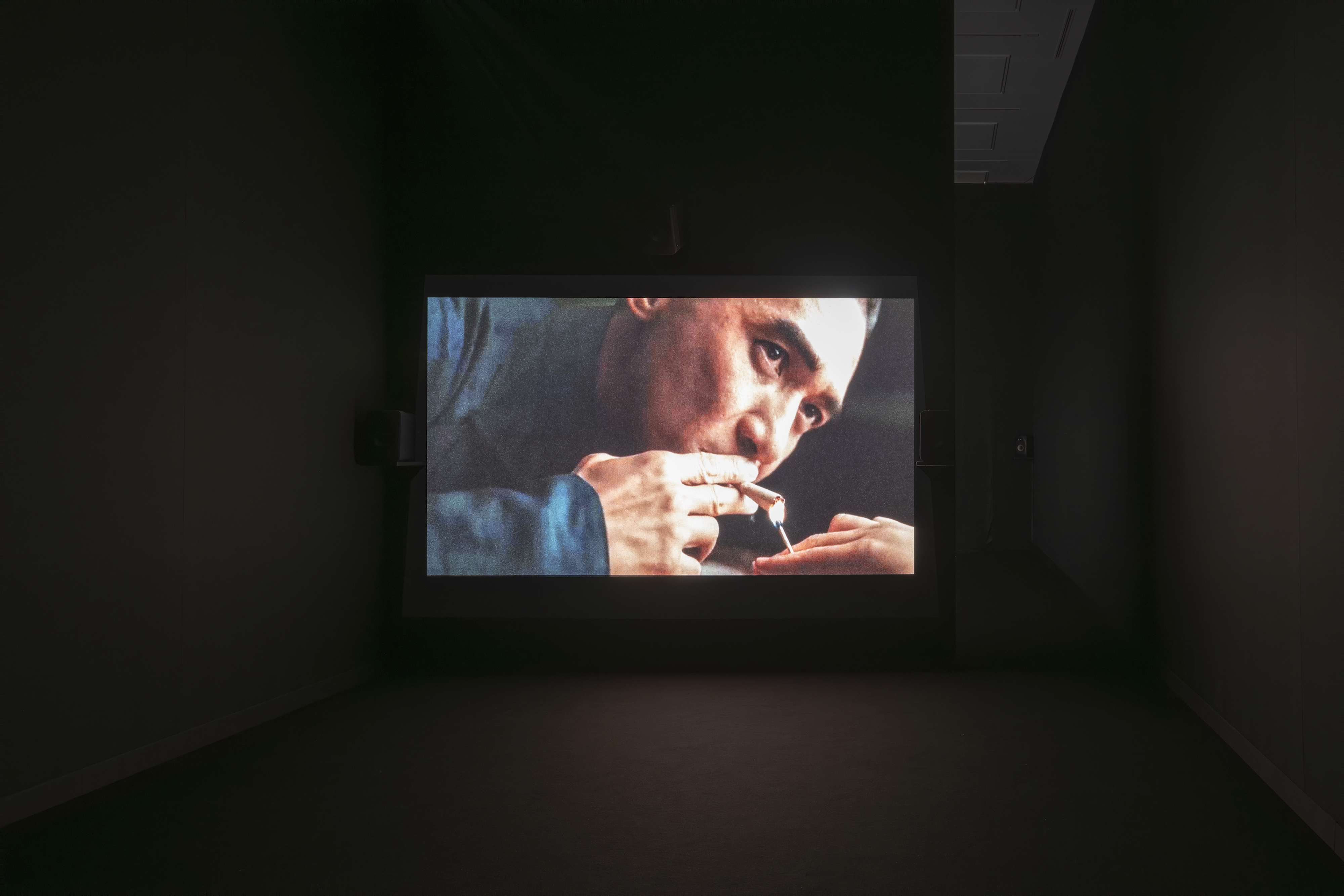
Video installation: 2-channel HD projection (16:9, synchronized, color), 12-channel sound
21ʼ 15”
Installation view, Ho Tzu Nyen: A for Agents, Museum of Contemporary Art Tokyo, Japan, 2024.
Photo by Kenji Morita.

Video installation: 6-channel HD projection (16:9, synchronized, color), multi-channel sound VR: head mount display, gaming PC, binaural sound Video: 7ʼ 45” each / VR: Infinite duration
Installation view, Ho Tzu Nyen: A for Agents, Museum of Contemporary Art Tokyo, Japan, 2024.
Photo by Kenji Morita.

Video installation: 6-channel HD projection (16:9, synchronized, color), multi-channel sound VR: head mount display, gaming PC, binaural sound Video: 7ʼ 45” each / VR: Infinite duration
Installation view, Ho Tzu Nyen: A for Agents, Museum of Contemporary Art Tokyo, Japan, 2024.
Photo by Kenji Morita.
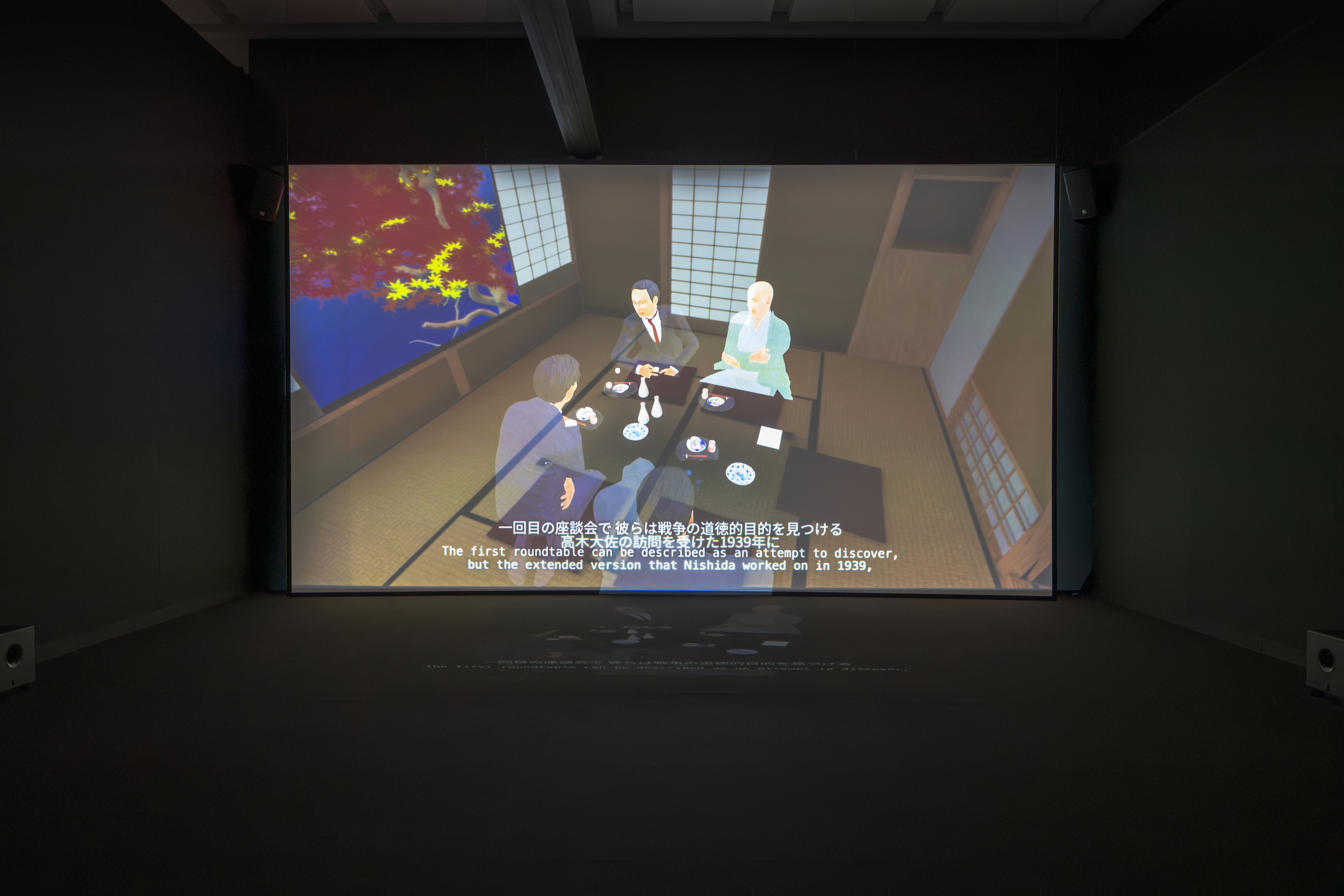
Video installation: 6-channel HD projection (16:9, synchronized, color), multi-channel sound VR: head mount display, gaming PC, binaural sound Video: 7ʼ 45” each / VR: Infinite duration
Installation view, Ho Tzu Nyen: A for Agents, Museum of Contemporary Art Tokyo, Japan, 2024.
Photo by Kenji Morita.
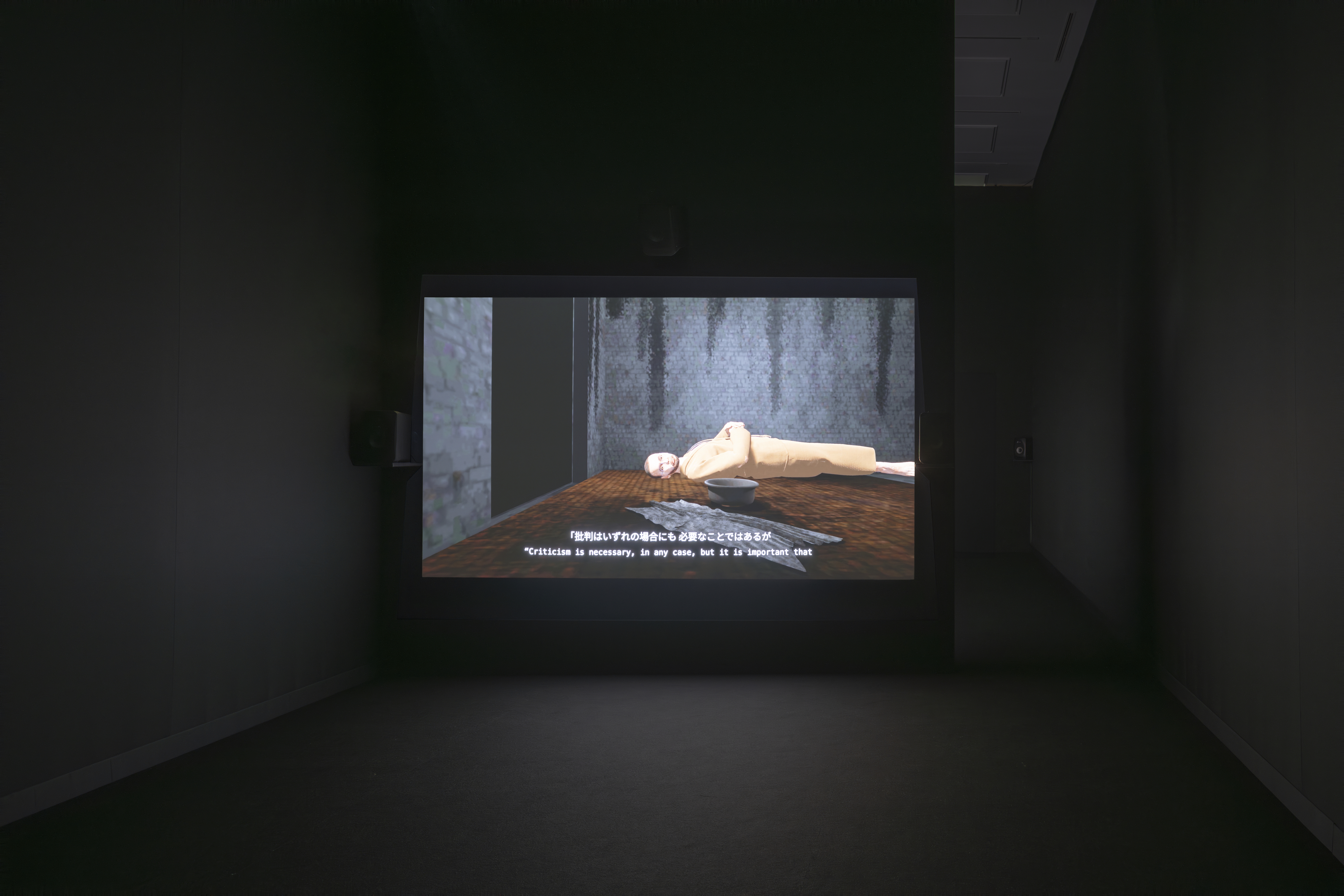
Video installation: 6-channel HD projection (16:9, synchronized, color), multi-channel sound VR: head mount display, gaming PC, binaural sound Video: 7ʼ 45” each / VR: Infinite duration
Installation view, Ho Tzu Nyen: A for Agents, Museum of Contemporary Art Tokyo, Japan, 2024.
Photo by Kenji Morita.
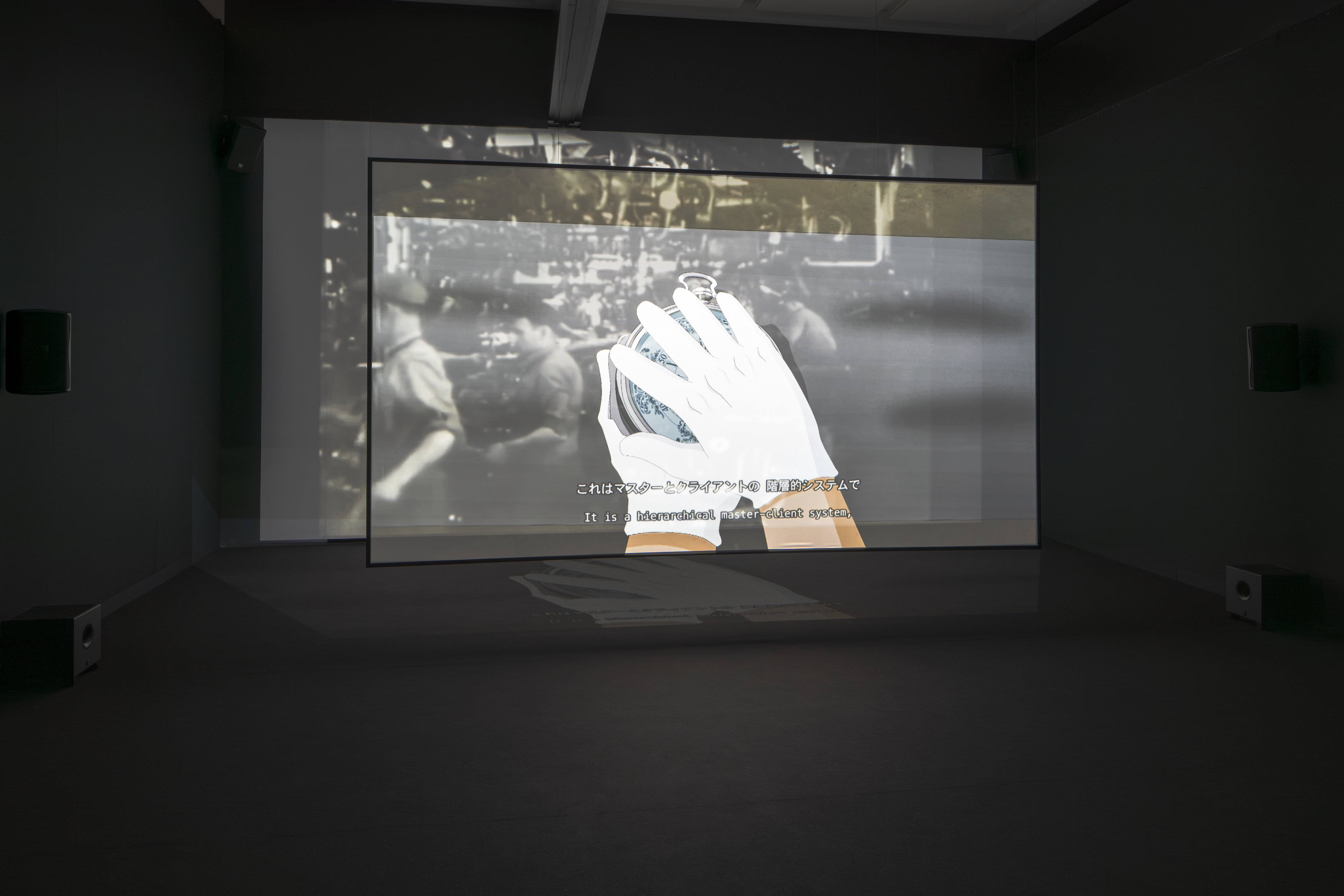
Video installation: 2-channel HD projection (16:9, synchronized, color), real-time algorithmic editing and compositing system, internet, voile screen, 8-channel sound
60′
Installation view, Ho Tzu Nyen: A for Agents, Museum of Contemporary Art Tokyo, Japan, 2024.
Photo by Kenji Morita.
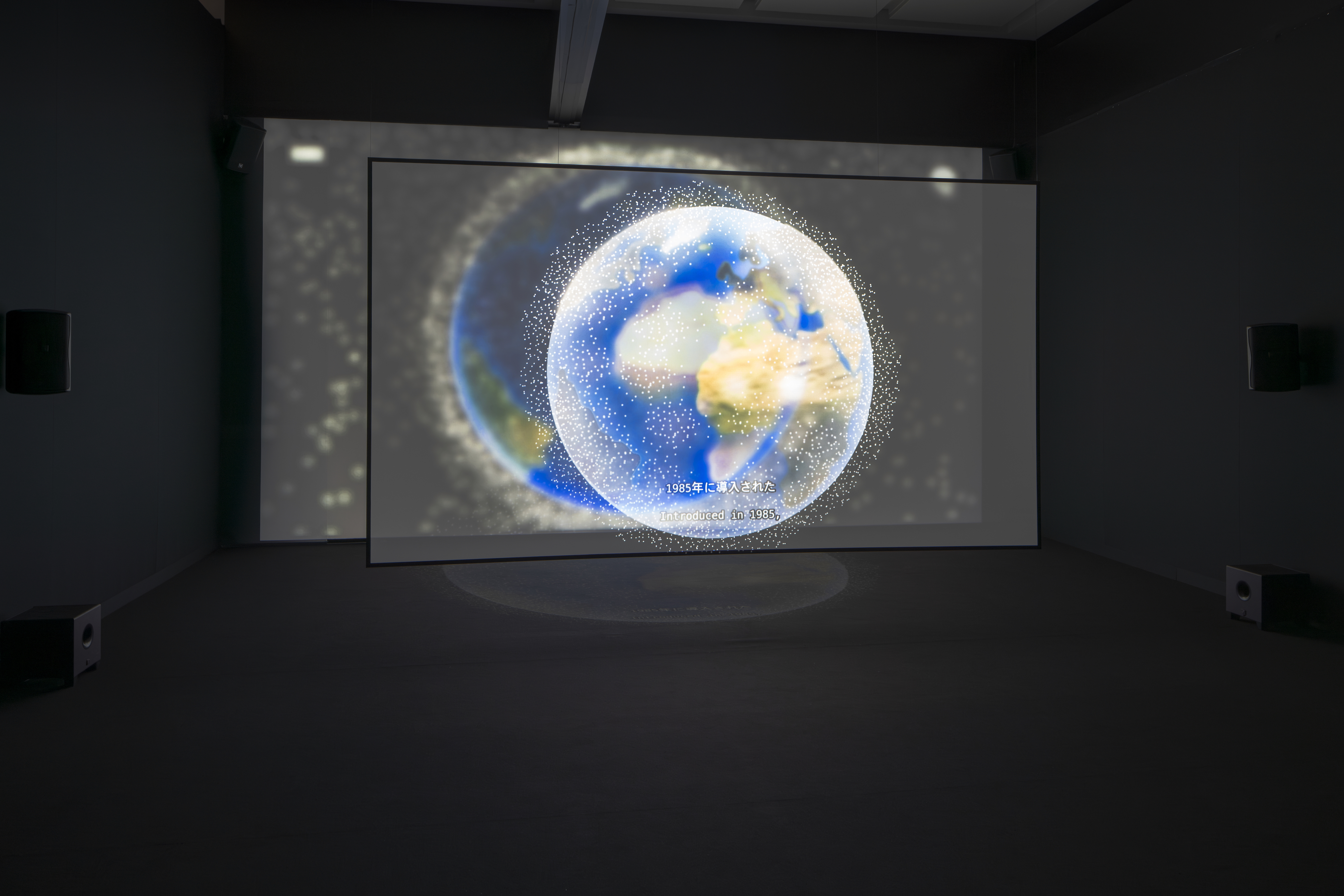
Video installation: 2-channel HD projection (16:9, synchronized, color), real-time algorithmic editing and compositing system, internet, voile screen, 8-channel sound
60′
Installation view, Ho Tzu Nyen: A for Agents, Museum of Contemporary Art Tokyo, Japan, 2024.
Photo by Kenji Morita.
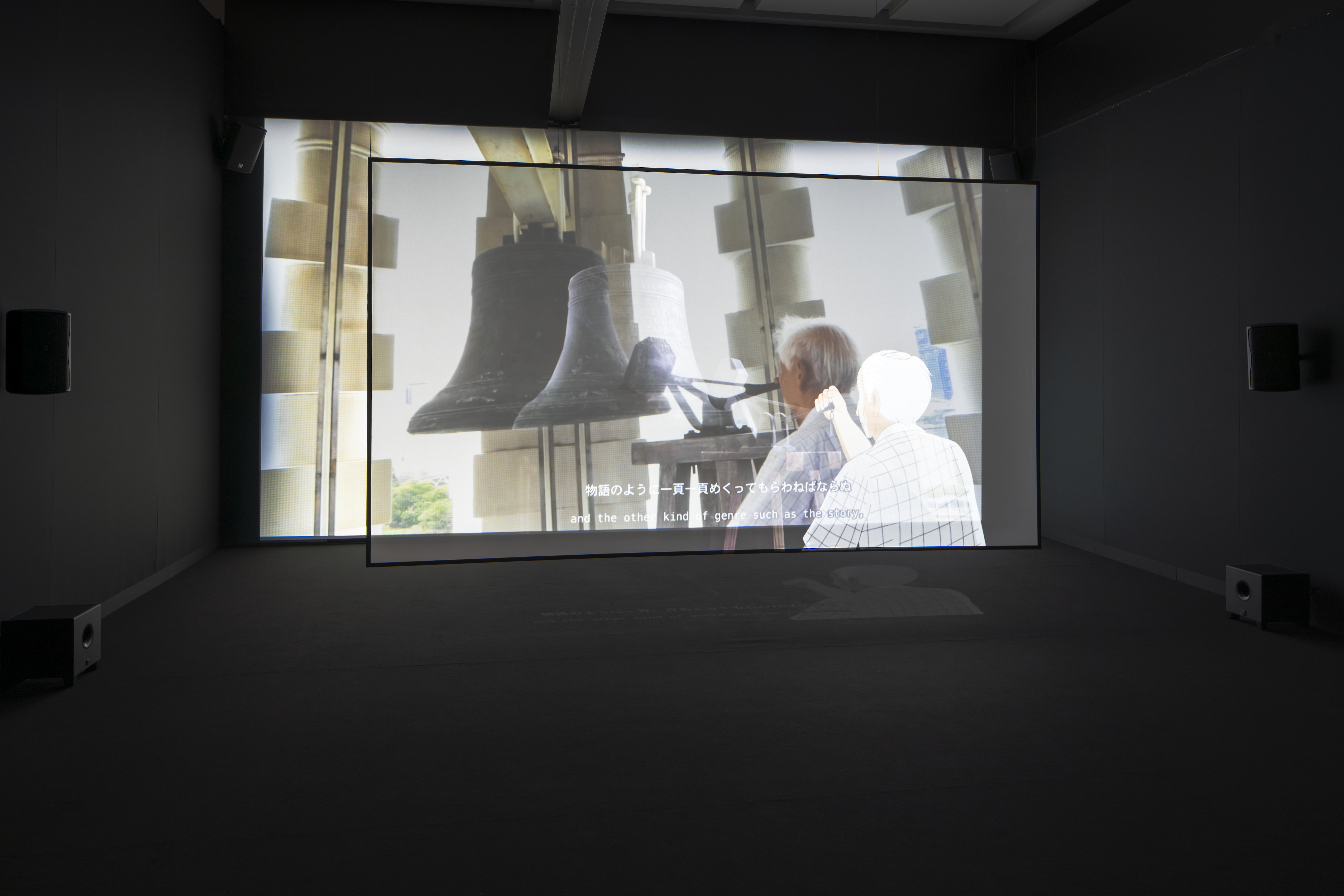
Video installation: 2-channel HD projection (16:9, synchronized, color), real-time algorithmic editing and compositing system, internet, voile screen, 8-channel sound
60′
Installation view, Ho Tzu Nyen: A for Agents, Museum of Contemporary Art Tokyo, Japan, 2024.
Photo by Kenji Morita.

Video (30 pieces): 30 flatscreens
Applications (12 pieces): 10 flatscreens, 2 tablets
1”-infinite
Installation view, Ho Tzu Nyen: A for Agents, Museum of Contemporary Art Tokyo, Japan, 2024.
Photo by Kenji Morita.
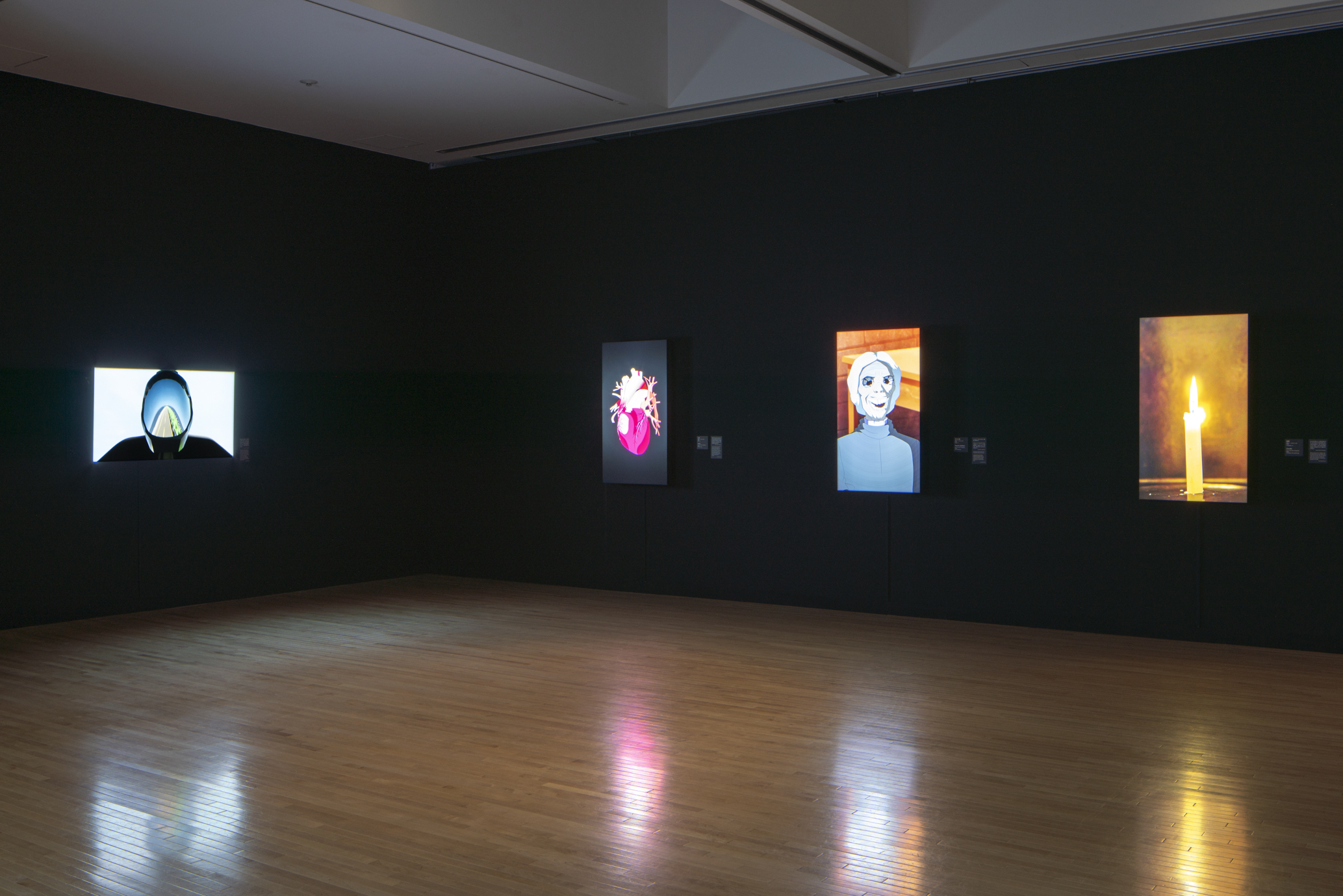
Video (30 pieces): 30 flatscreens
Applications (12 pieces): 10 flatscreens, 2 tablets
1”-infinite
Installation view, Ho Tzu Nyen: A for Agents, Museum of Contemporary Art Tokyo, Japan, 2024.
Photo by Kenji Morita.
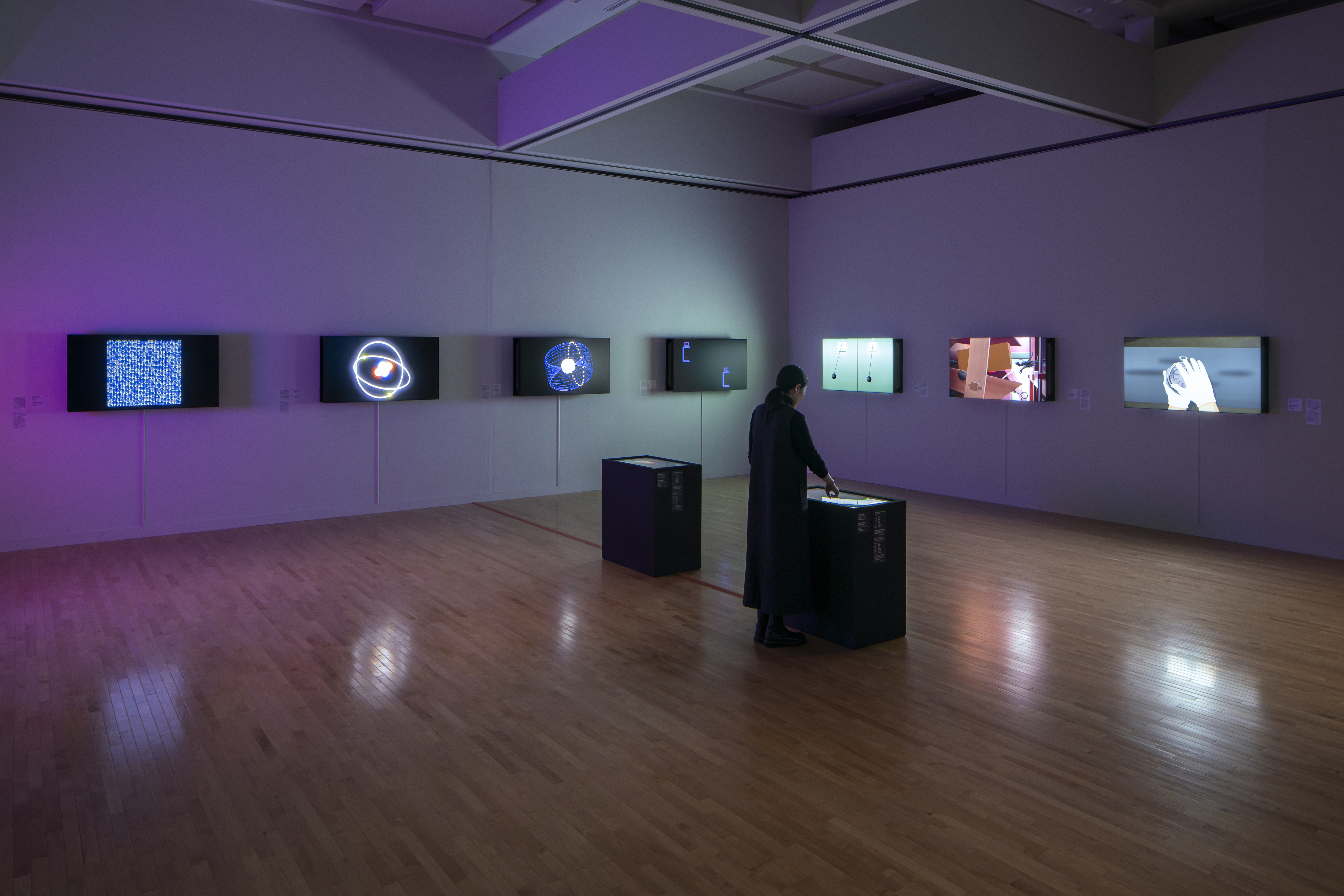
Video (30 pieces): 30 flatscreens
Applications (12 pieces): 10 flatscreens, 2 tablets
1”-infinite
Installation view, Ho Tzu Nyen: A for Agents, Museum of Contemporary Art Tokyo, Japan, 2024.
Photo by Kenji Morita.
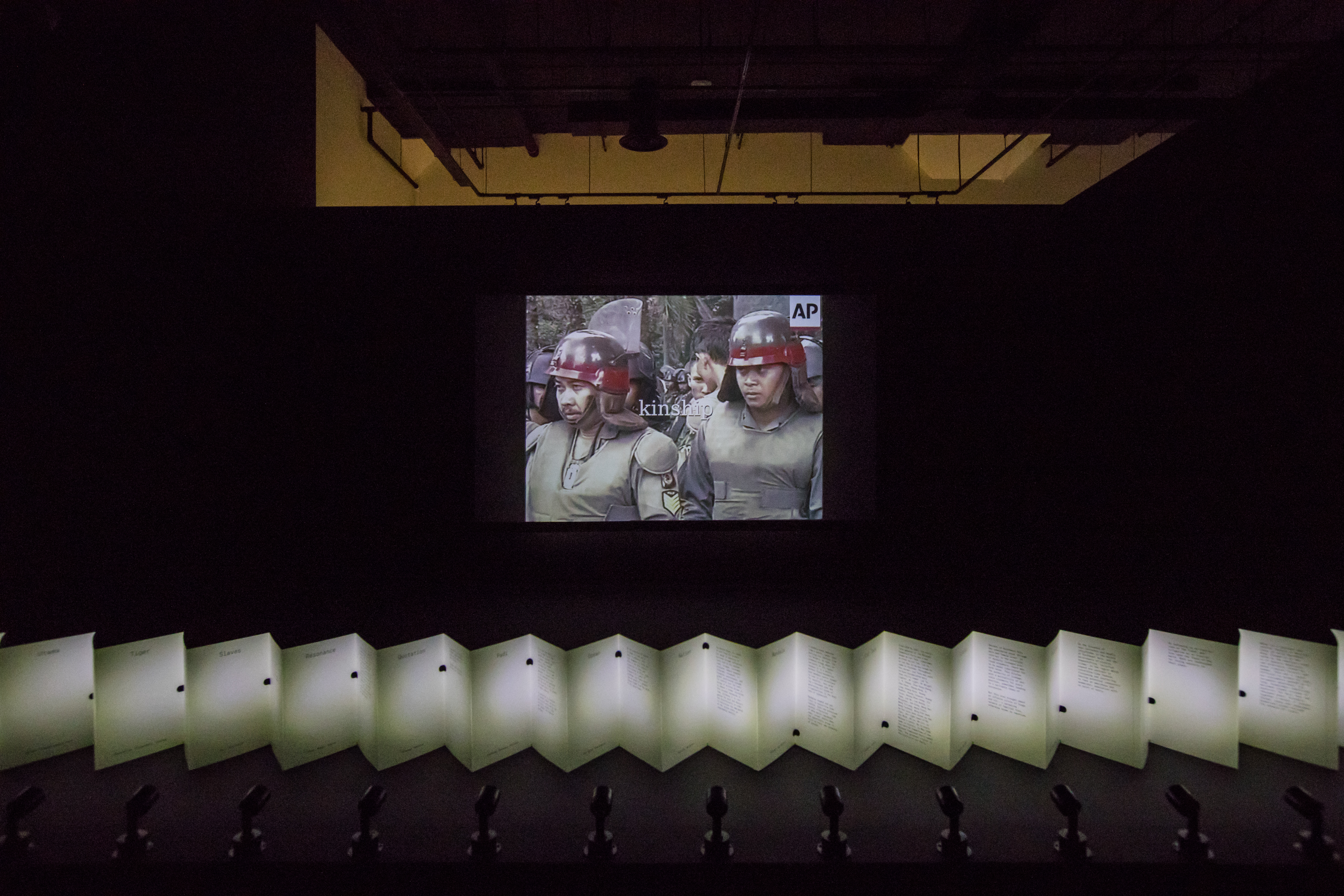
Single channel HD video, algorithmic editing system, 5 channel sound, LED Lights, 1PC
Duration: Infinite

‘Time & the Tiger’, Singapore Art Museum, Singapore, 2023
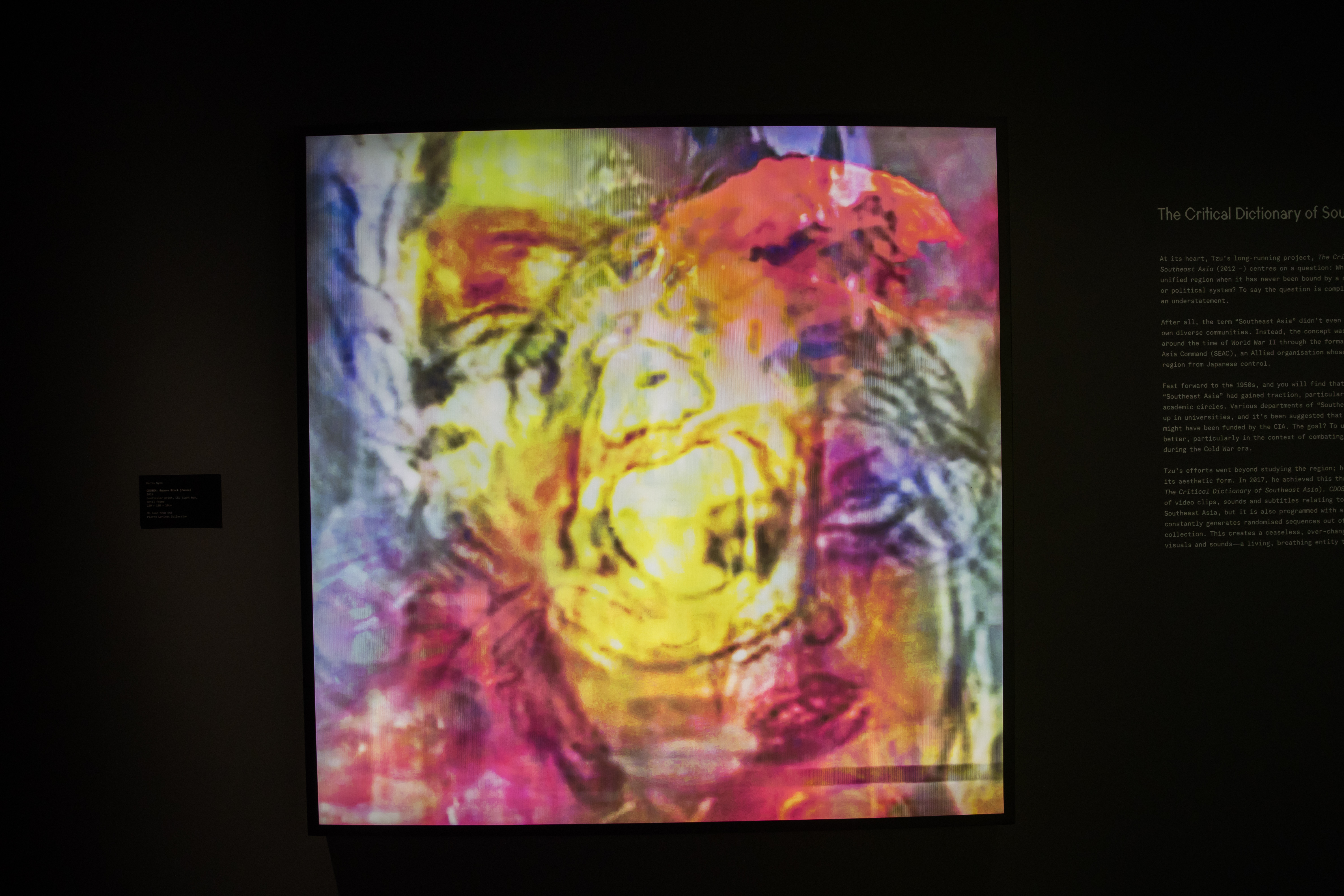
Lenticular print, LED light box, metal frame
180 x 180 x 10 cm
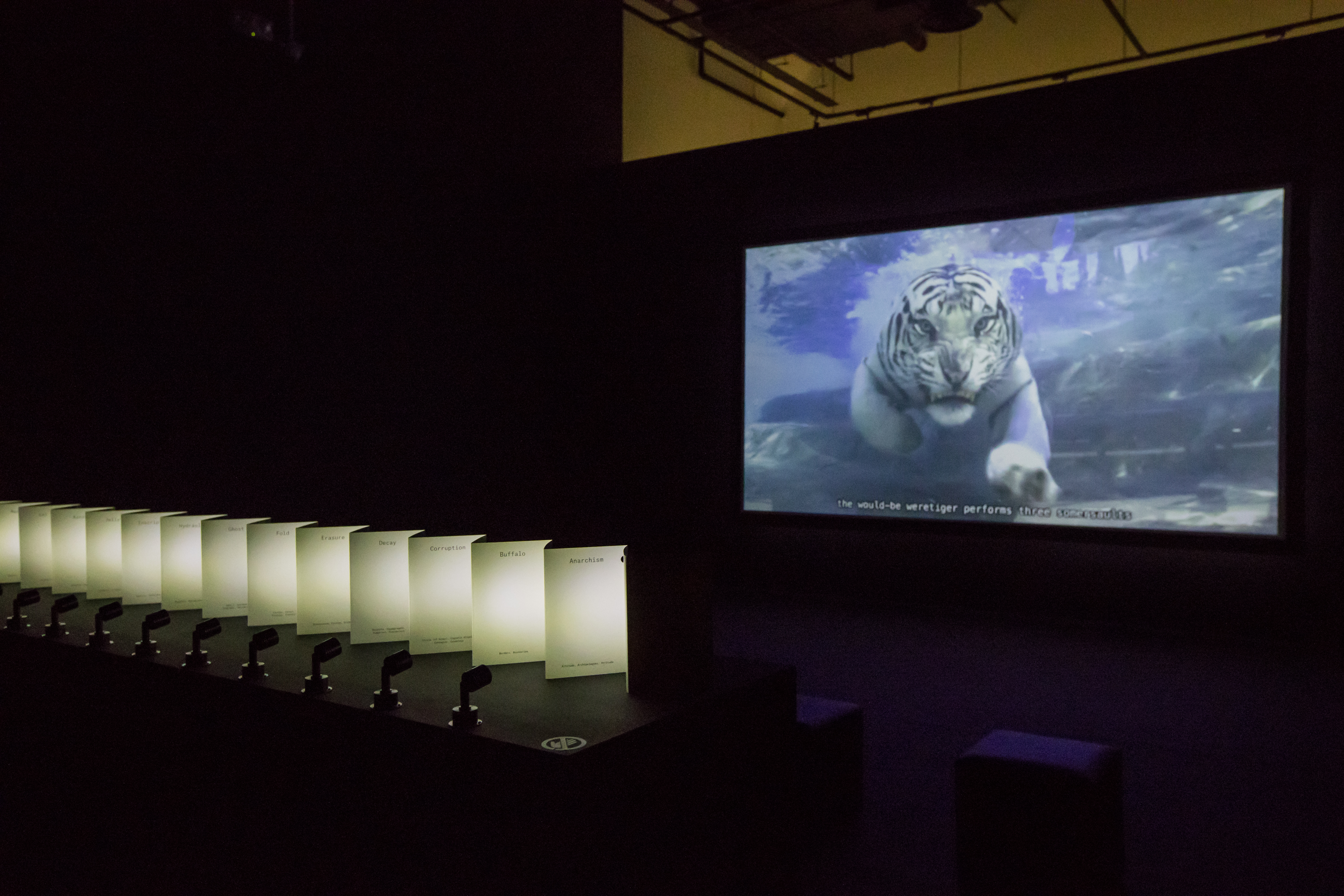
Single channel HD video, algorithmic editing system, 5 channel sound, LED Lights, 1PC
Duration: Infinite
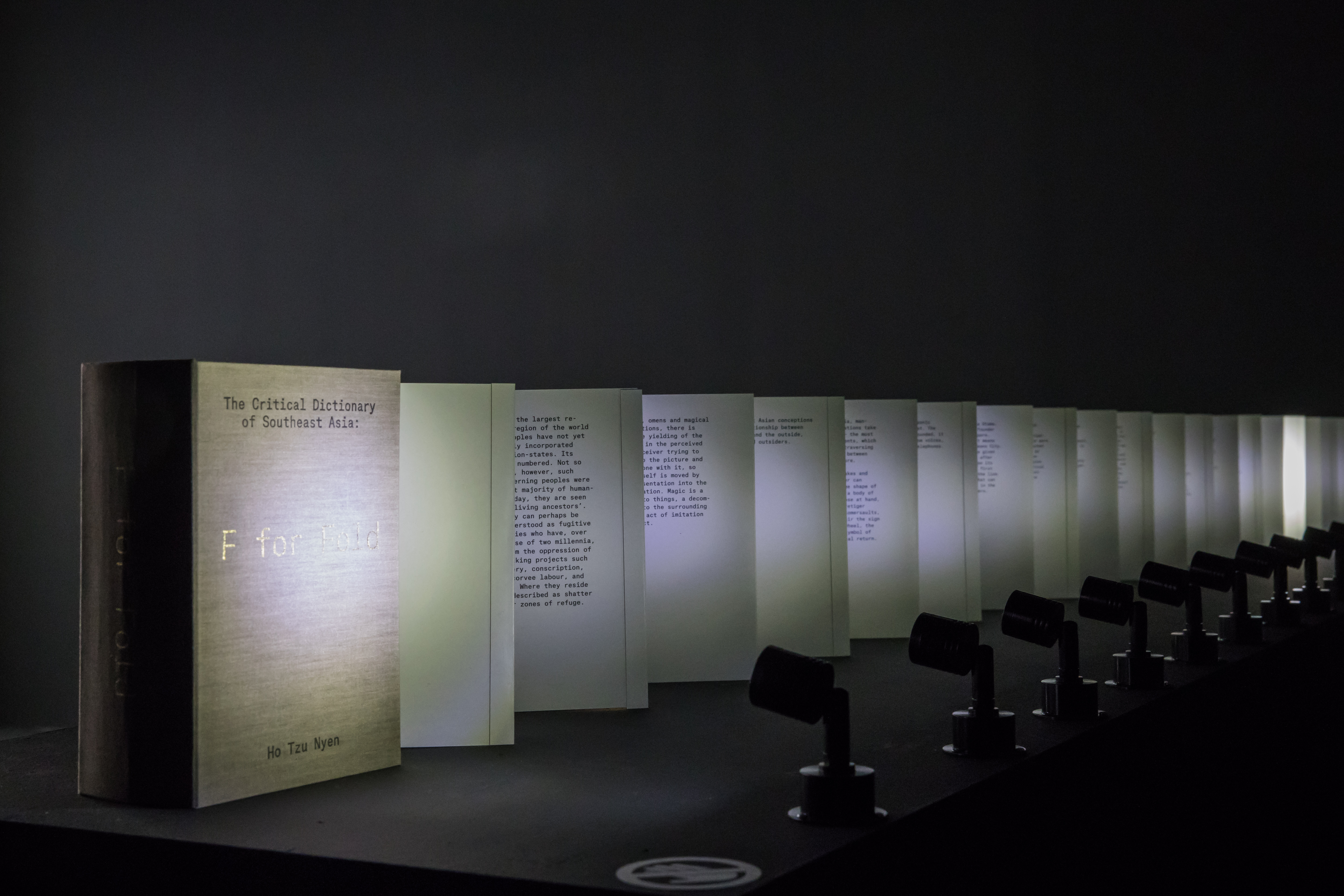
Closed book dims: 7.5 x 12.4 x 18.5 cm
Open book dims: size variable
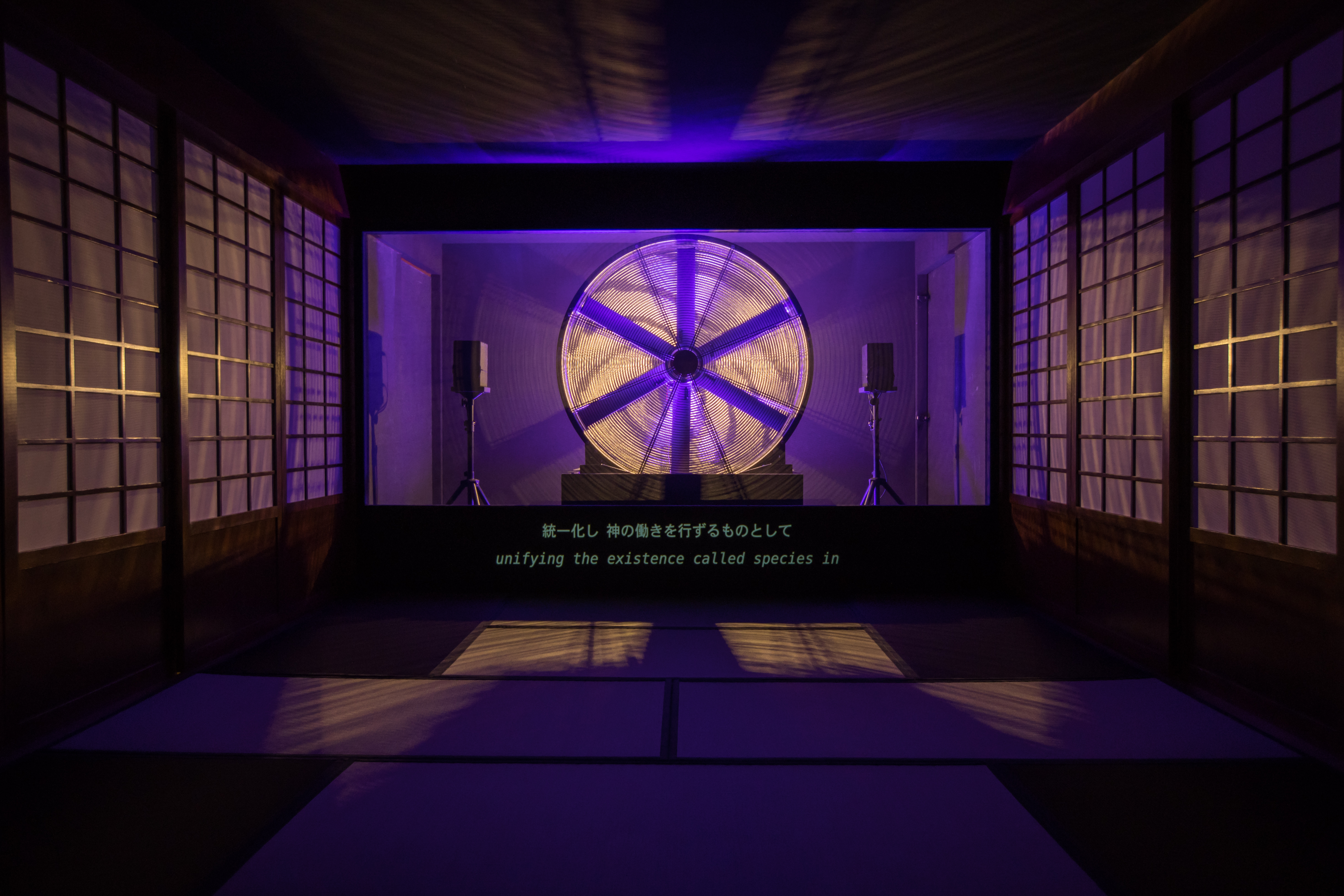
Site specific installation at the Kiraku-Tei, Toyota City, 6 channel video projection, 24 channel sound, automated fans, lights, transducers and show control system
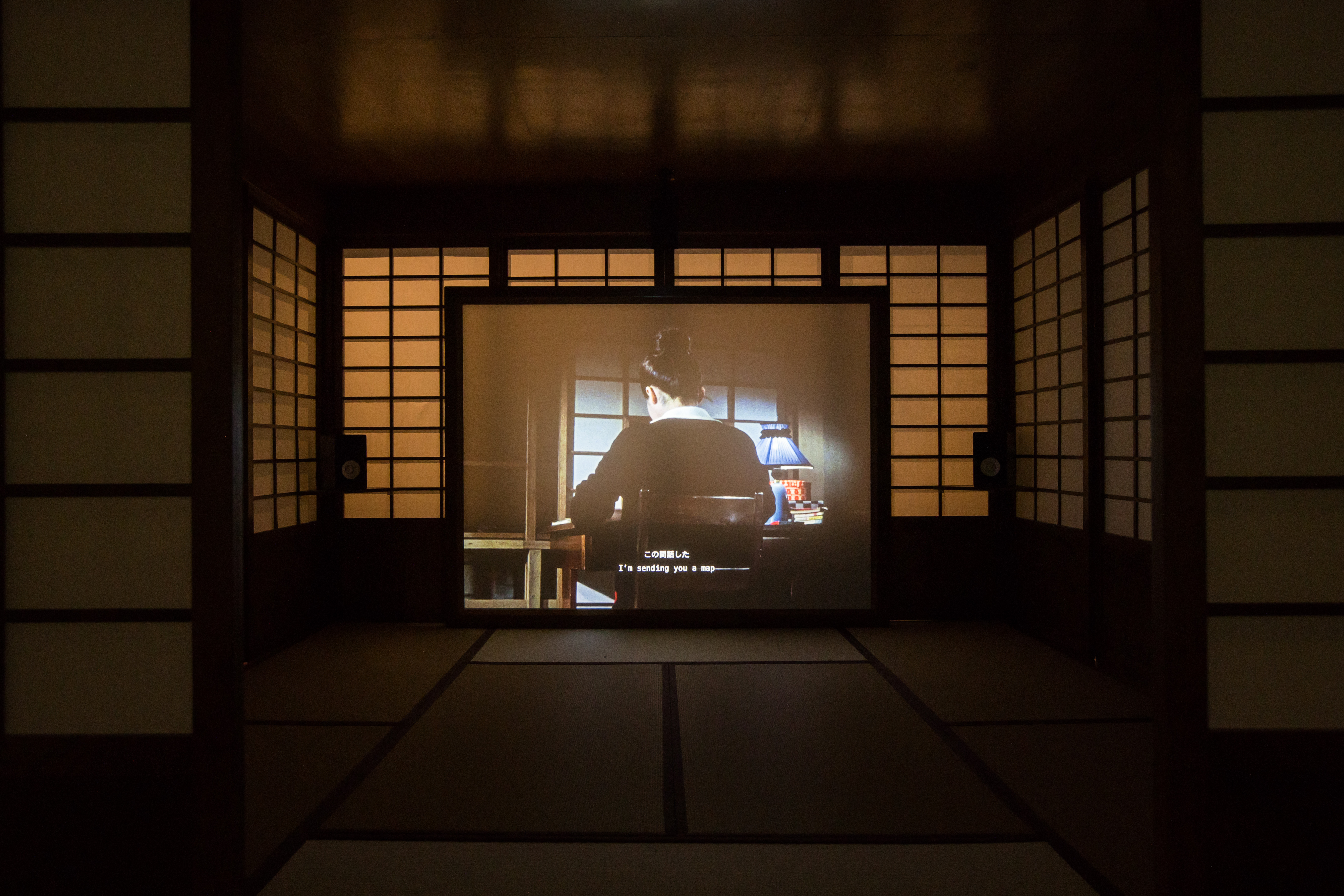
Site specific installation at the Kiraku-Tei, Toyota City, 6 channel video projection, 24 channel sound, automated fans, lights, transducers and show control system
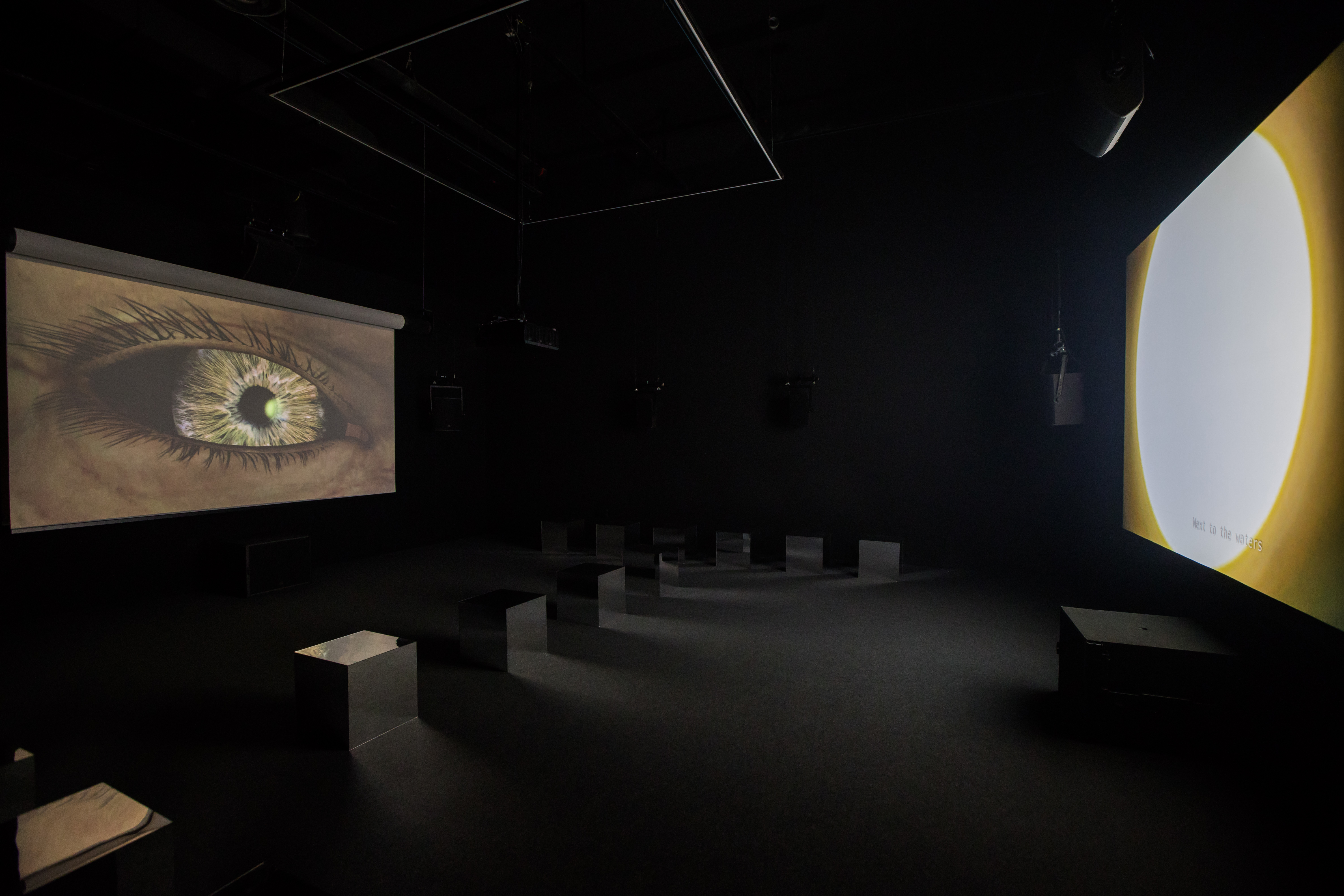
2-channel video, 10-channel sound, shadow puppets, lights, smoke machine, automated screen, show control system
33 min 33 sec
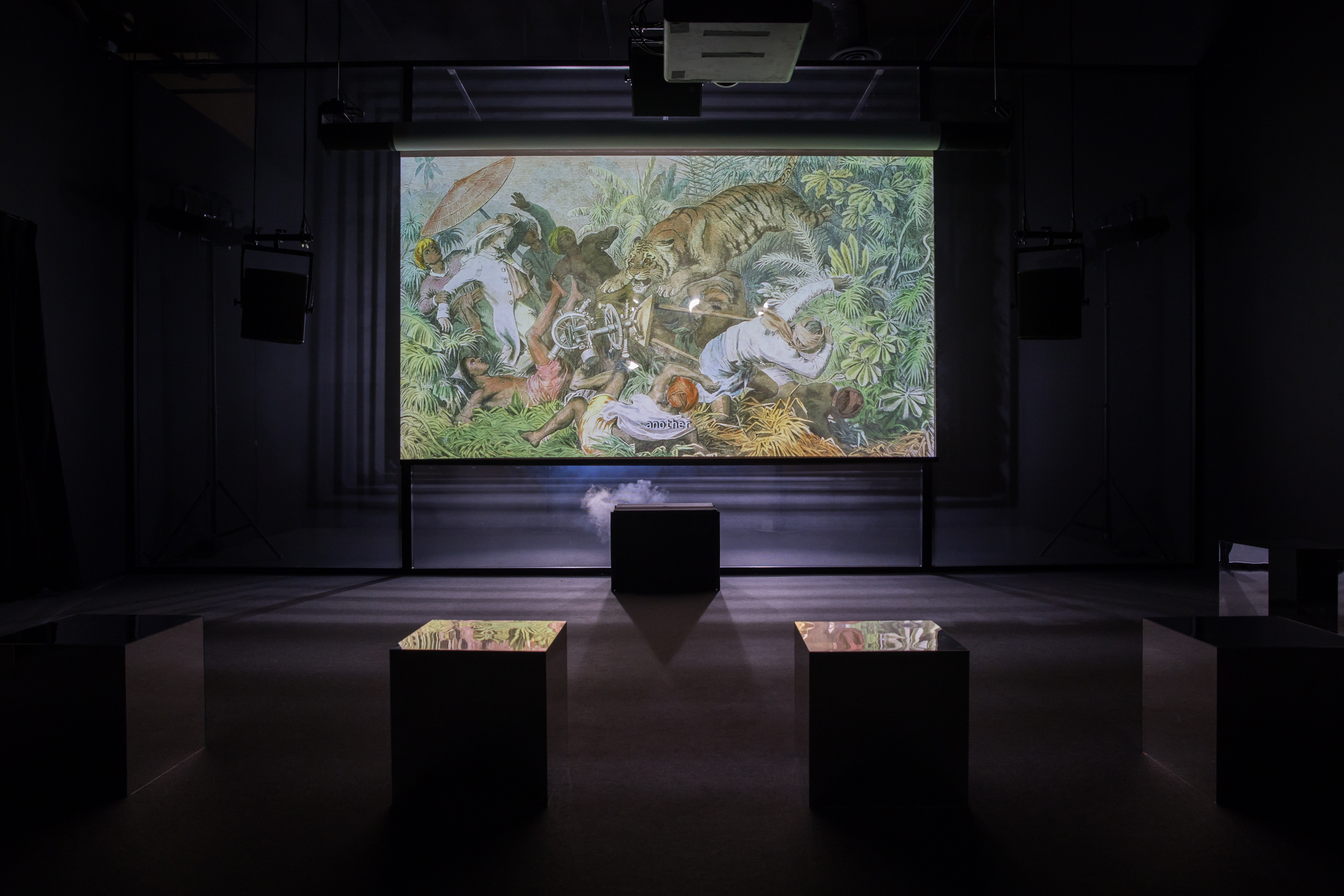
2-channel video, 10-channel sound, shadow puppets, lights, smoke machine, automated screen, show control system
33 min 33 sec
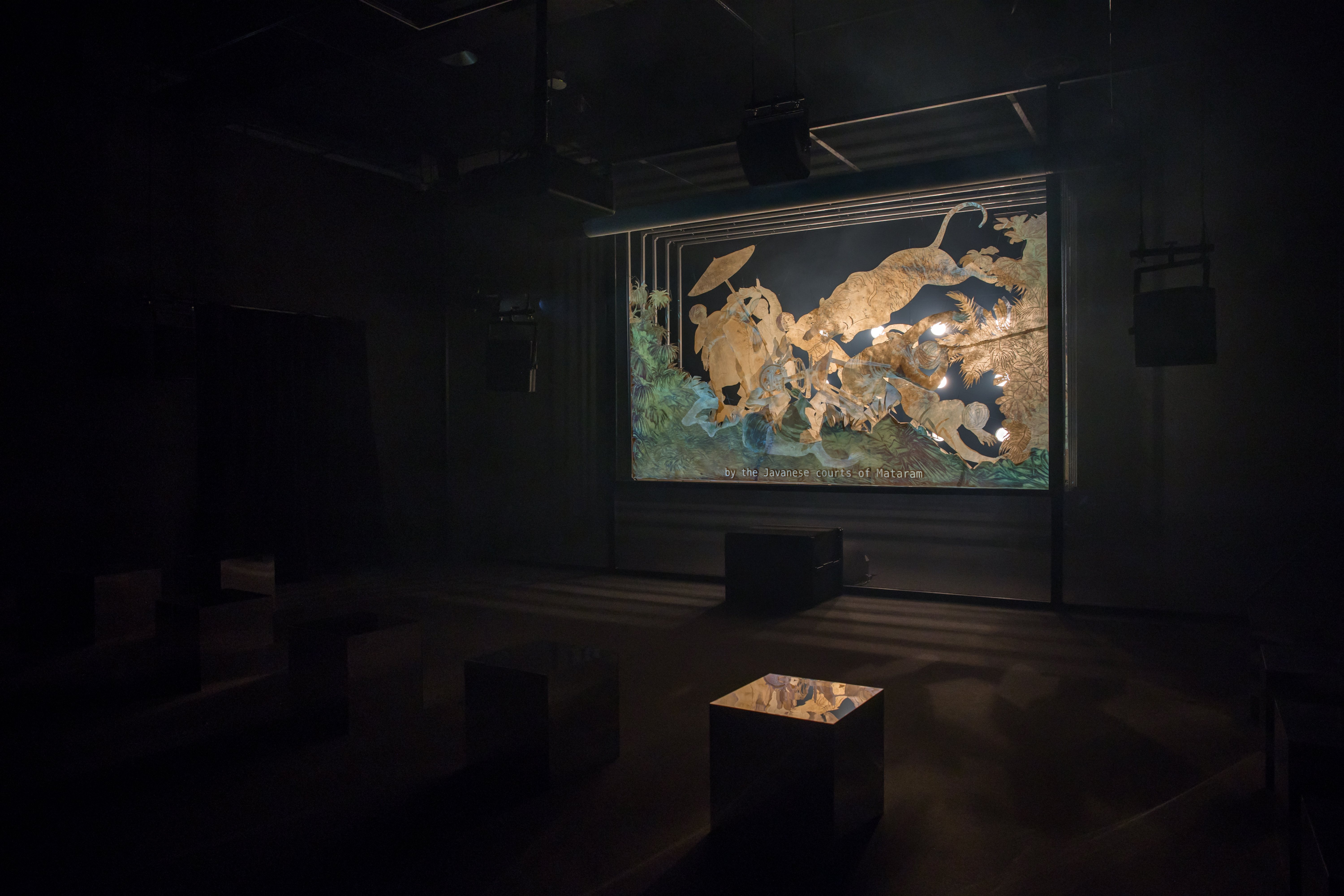
2-channel video, 10-channel sound, shadow puppets, lights, smoke machine, automated screen, show control system
33 min 33 sec
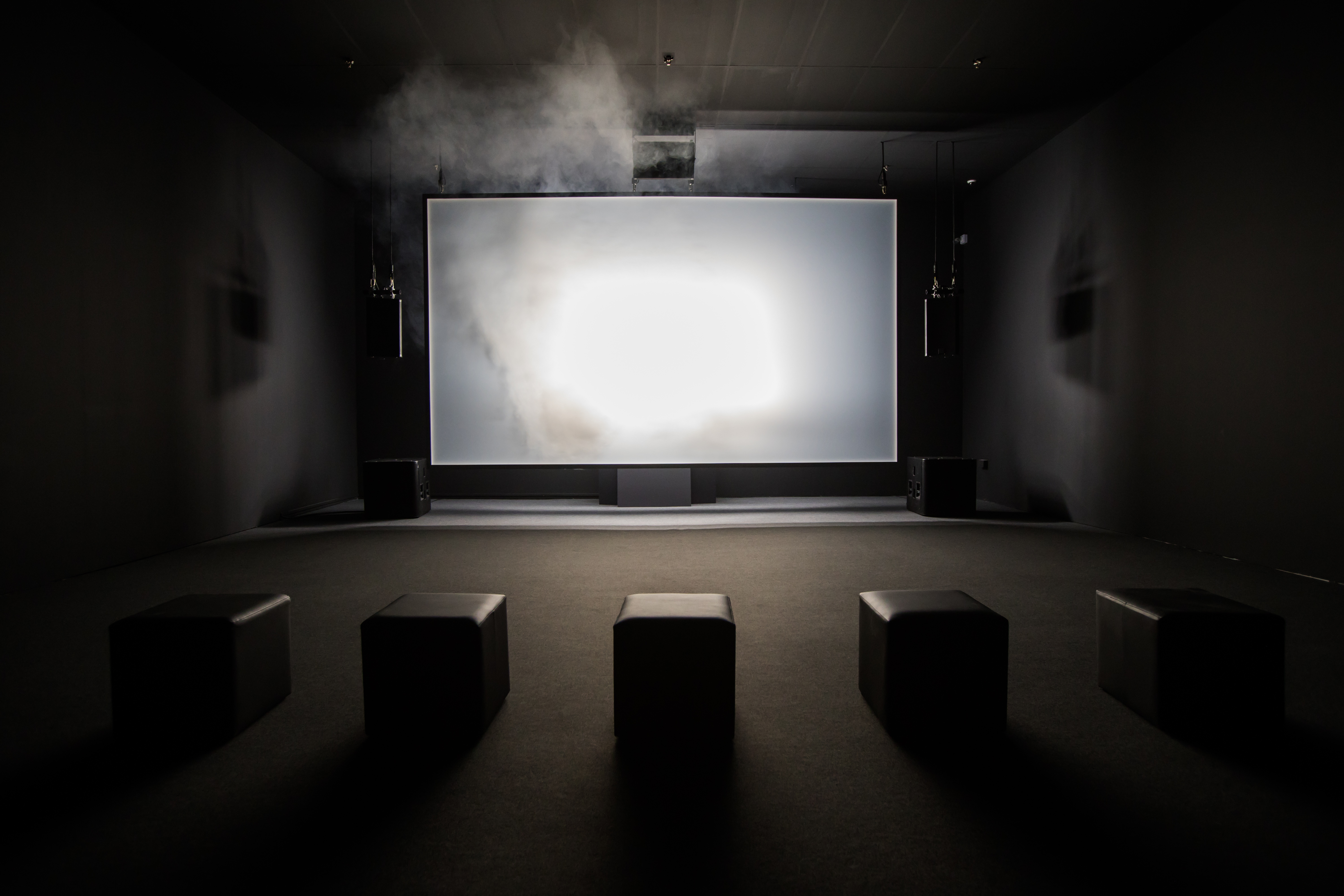
Single channel HD video, stereo sound
28 min
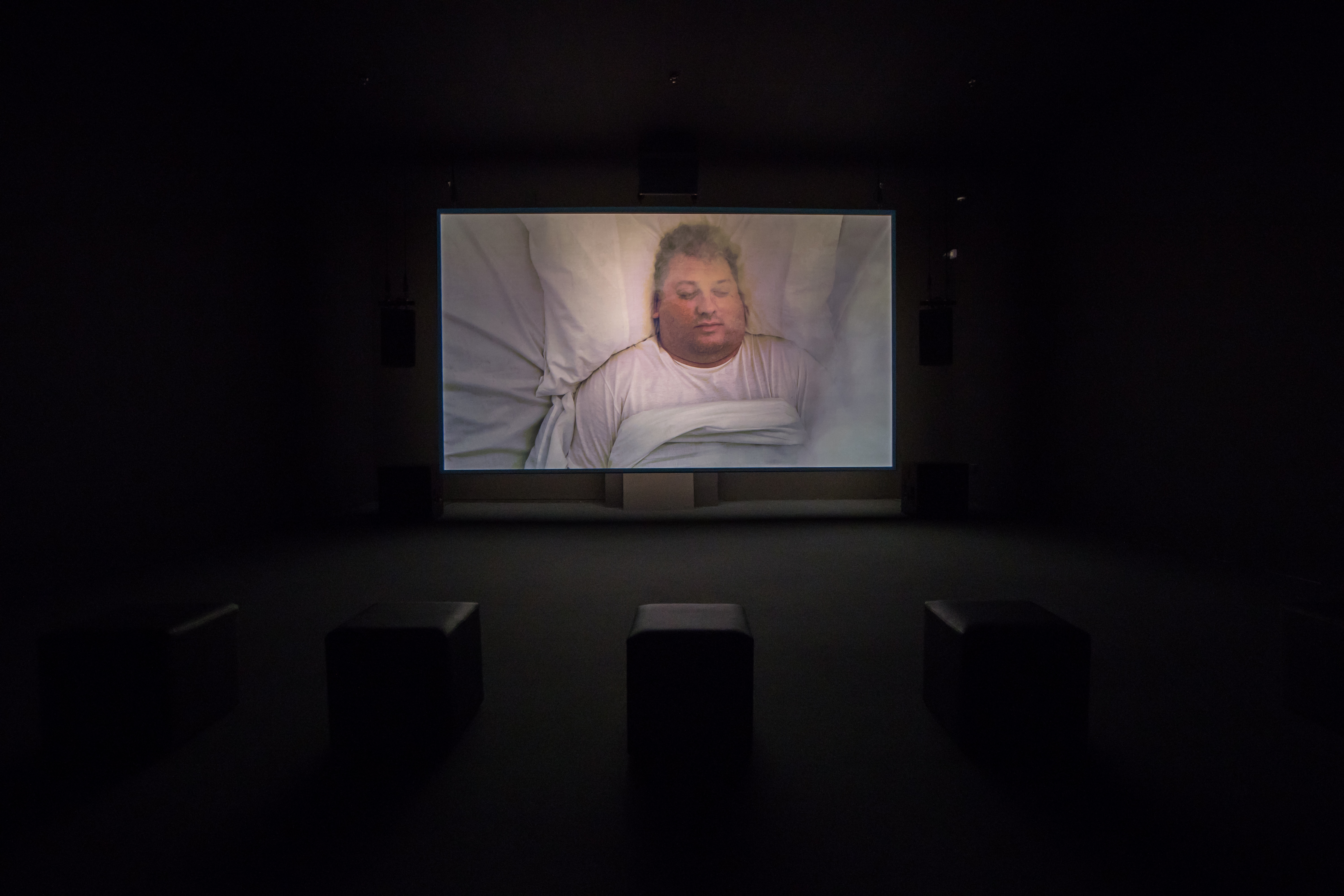
Single channel HD video, stereo sound
28 min
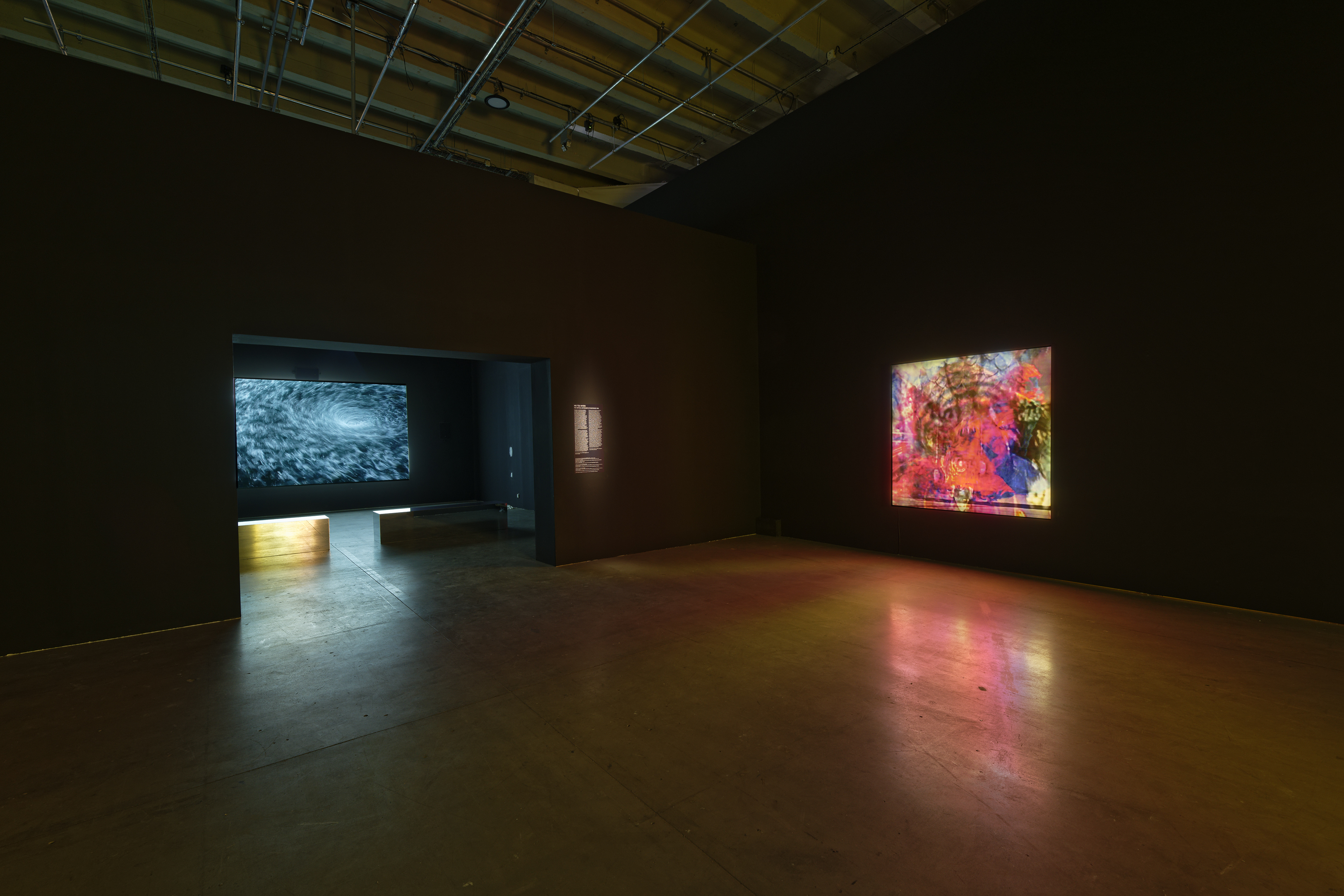
Courtesy of Palais de Tokyo
Photo credits: Aurélien Mole
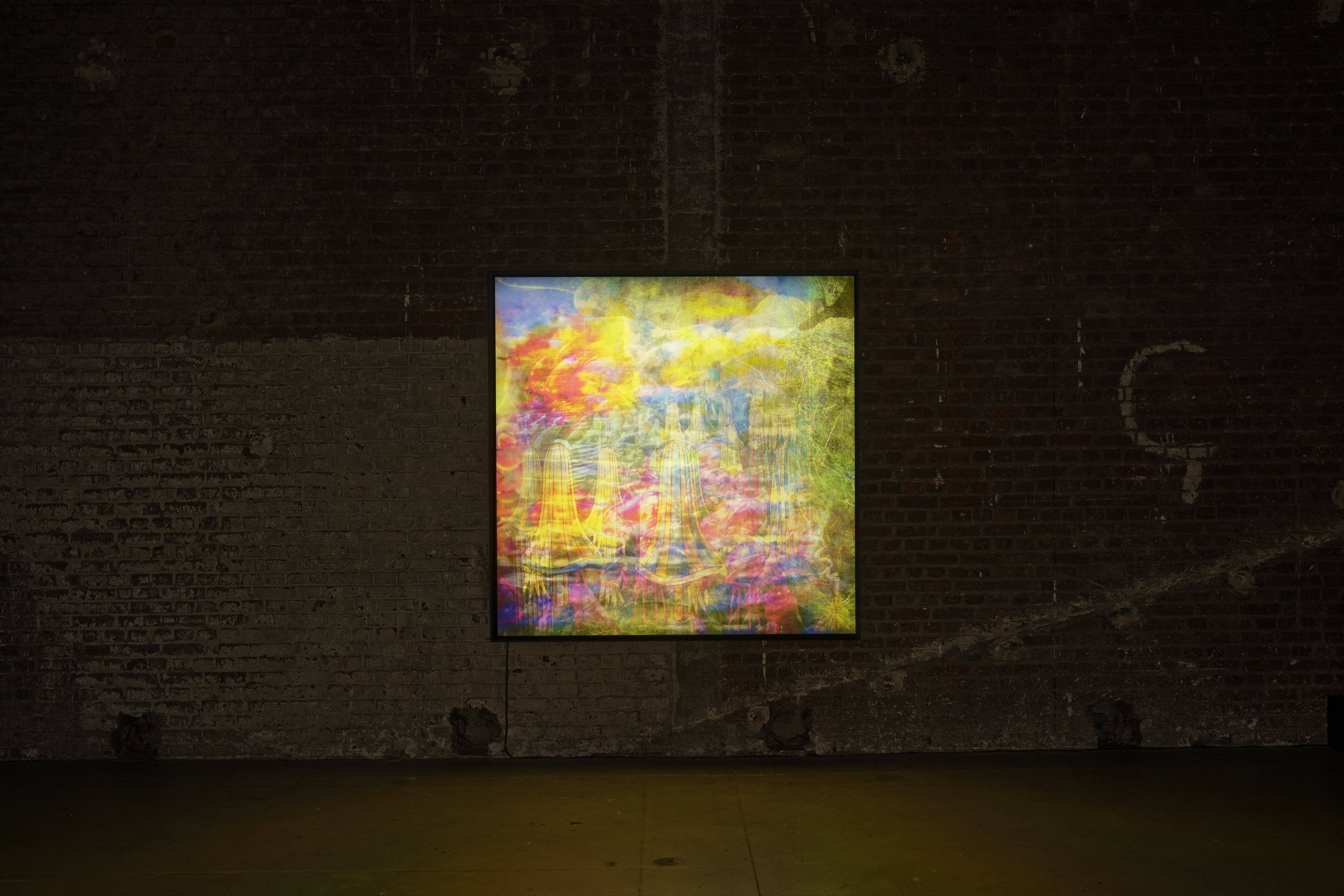
Courtesy of Palais de Tokyo
Photo credits: Aurélien Mole
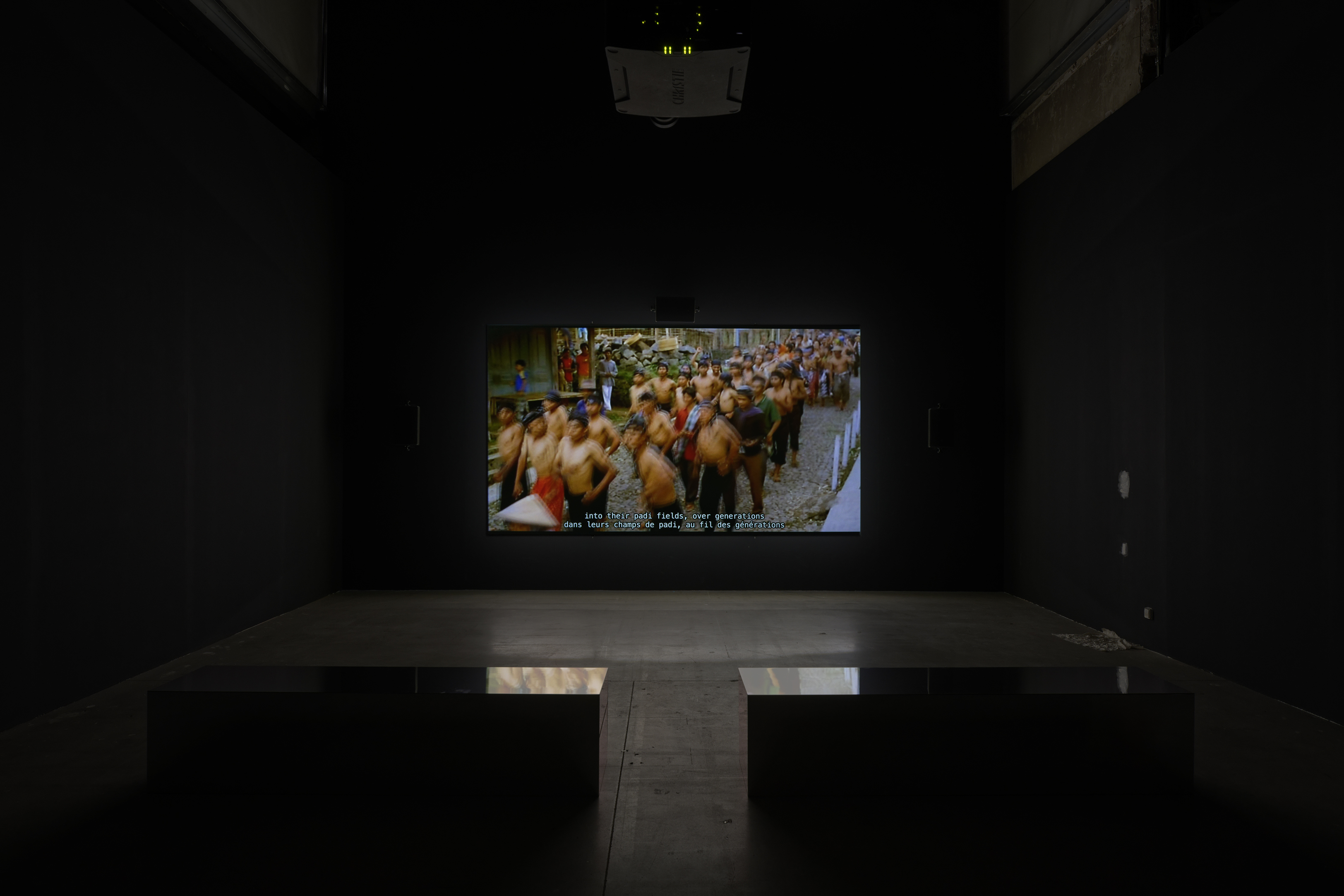
Courtesy of Palais de Tokyo
Photo credits: Aurélien Mole

Courtesy of Palais de Tokyo
Photo credits: Aurélien Mole
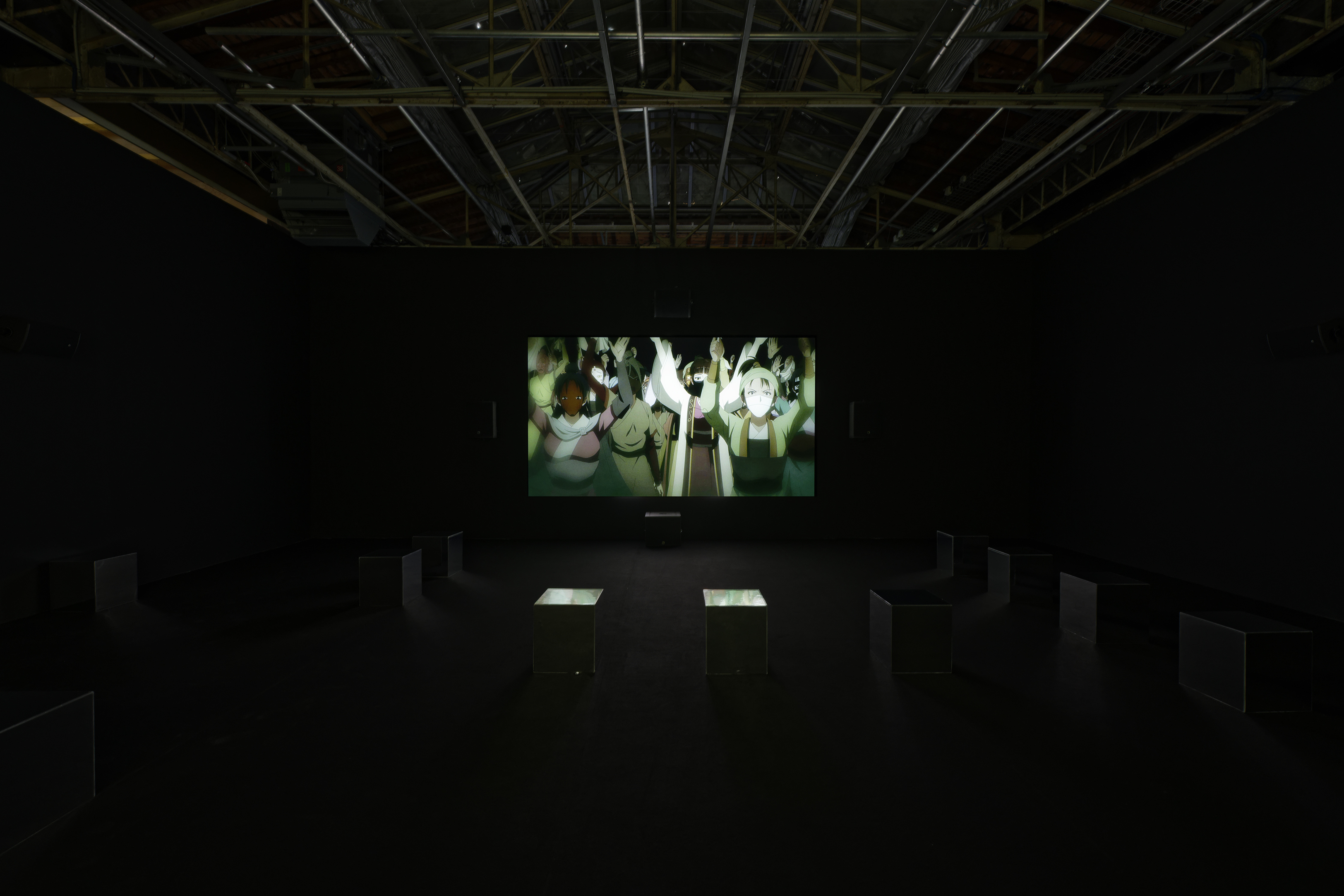
Courtesy of Palais de Tokyo
Photo credits: Aurélien Mole
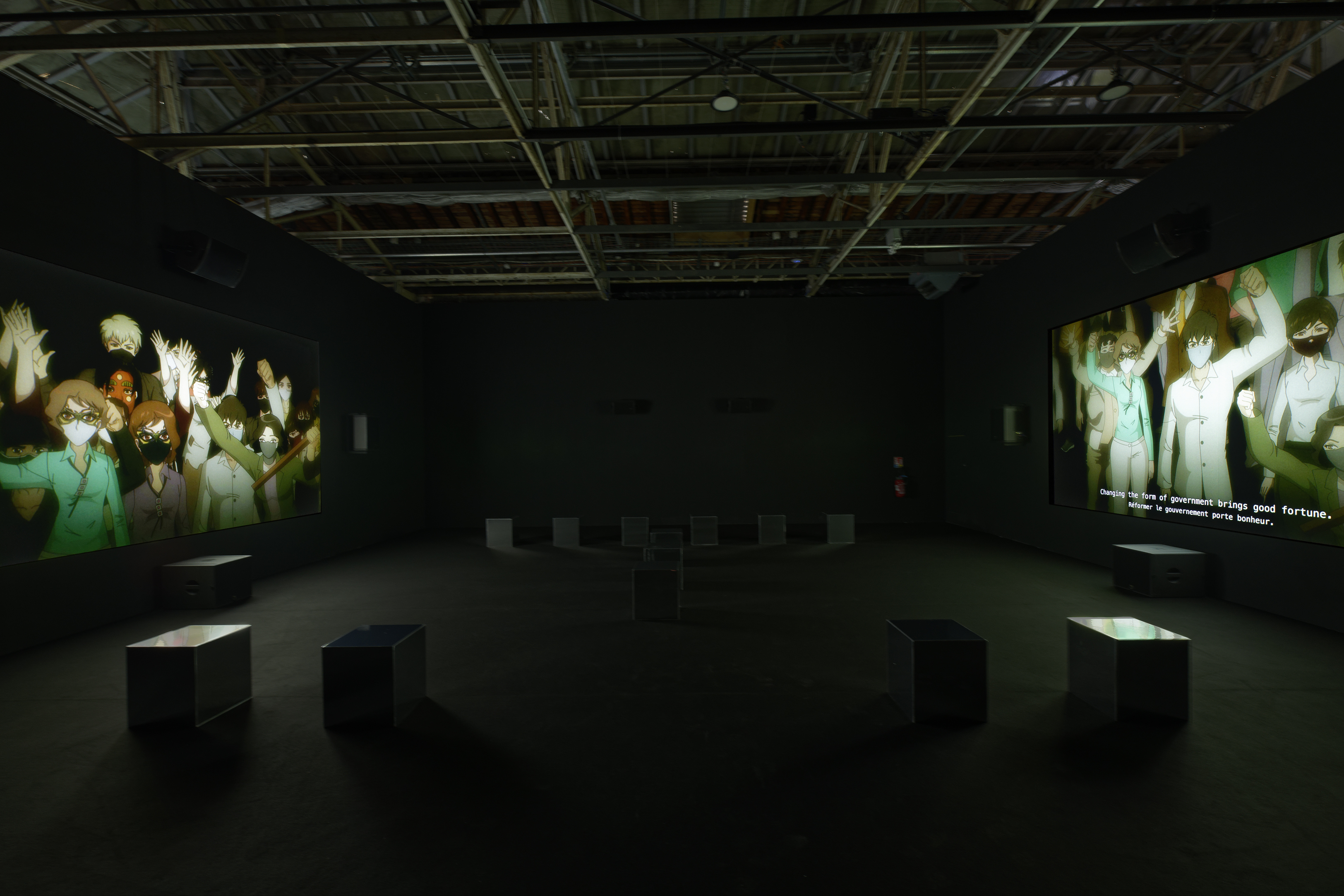
Courtesy of Palais de Tokyo
Photo credits: Aurélien Mole
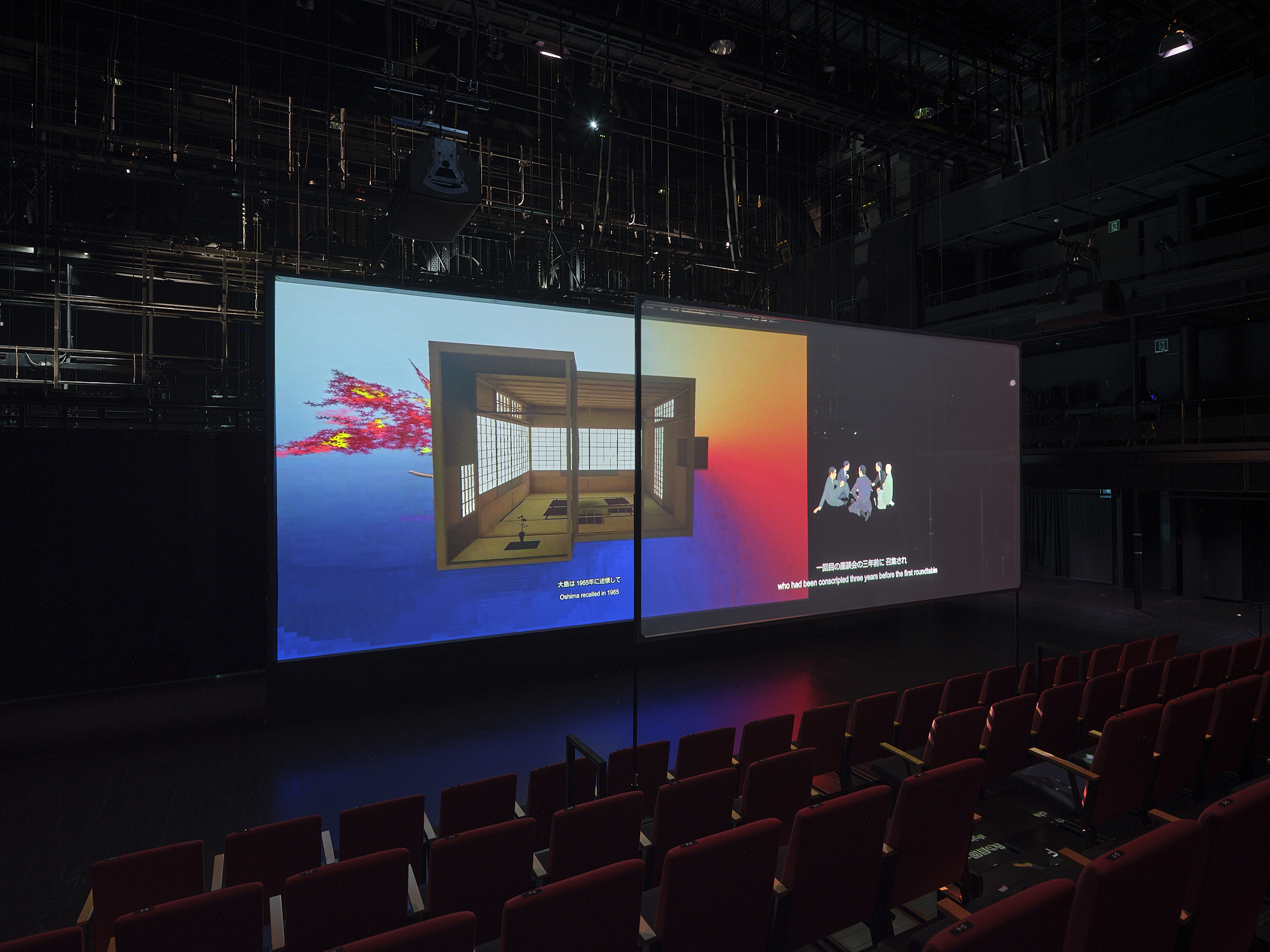
Synchronized 6 channel video, 6 channel sound, VR
Duration unlimited
Installation view, Yamaguchi Center for Arts and Media [YCAM], 2021
Courtesy of YCAM, Photo: Ichiro Mishima
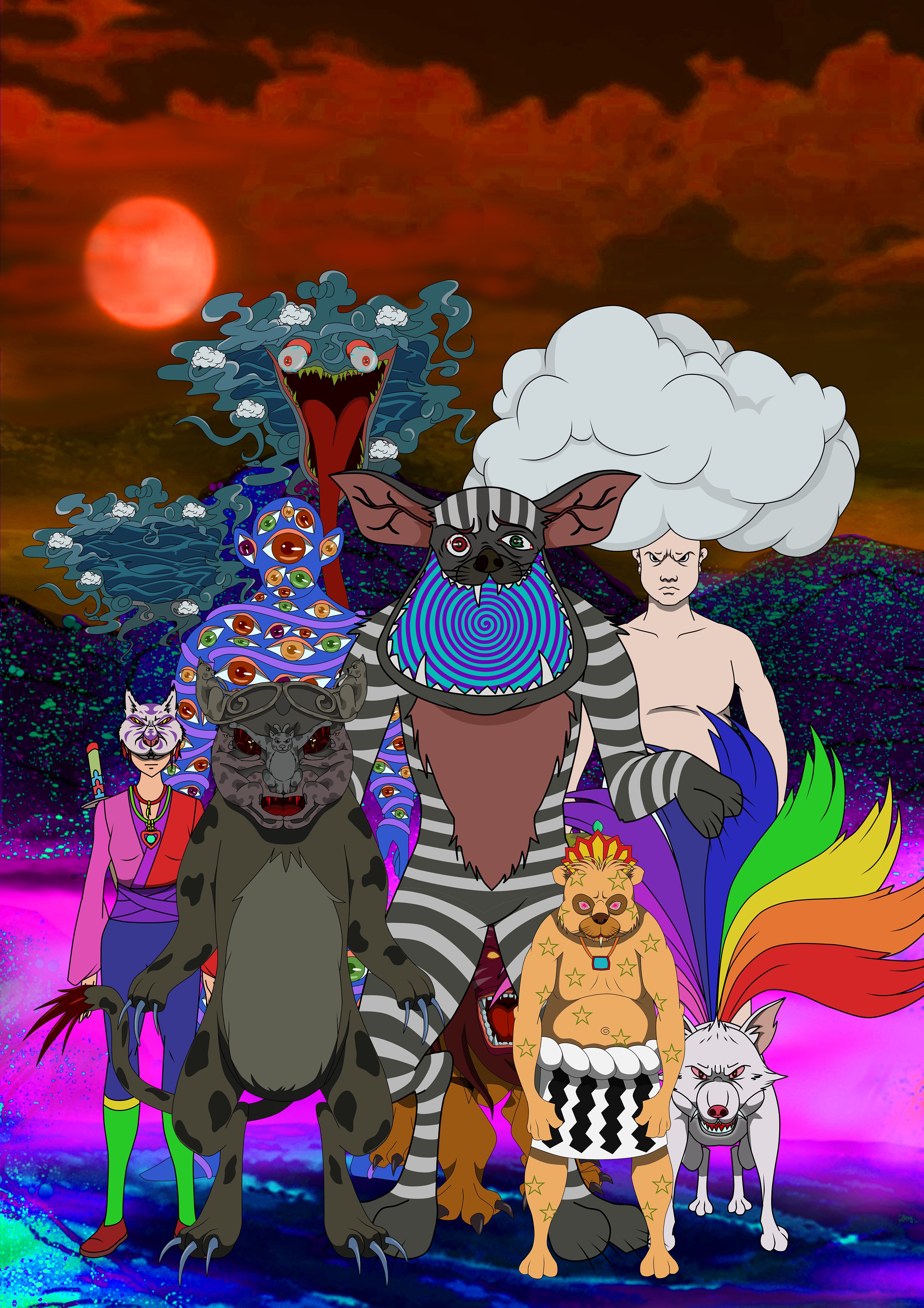



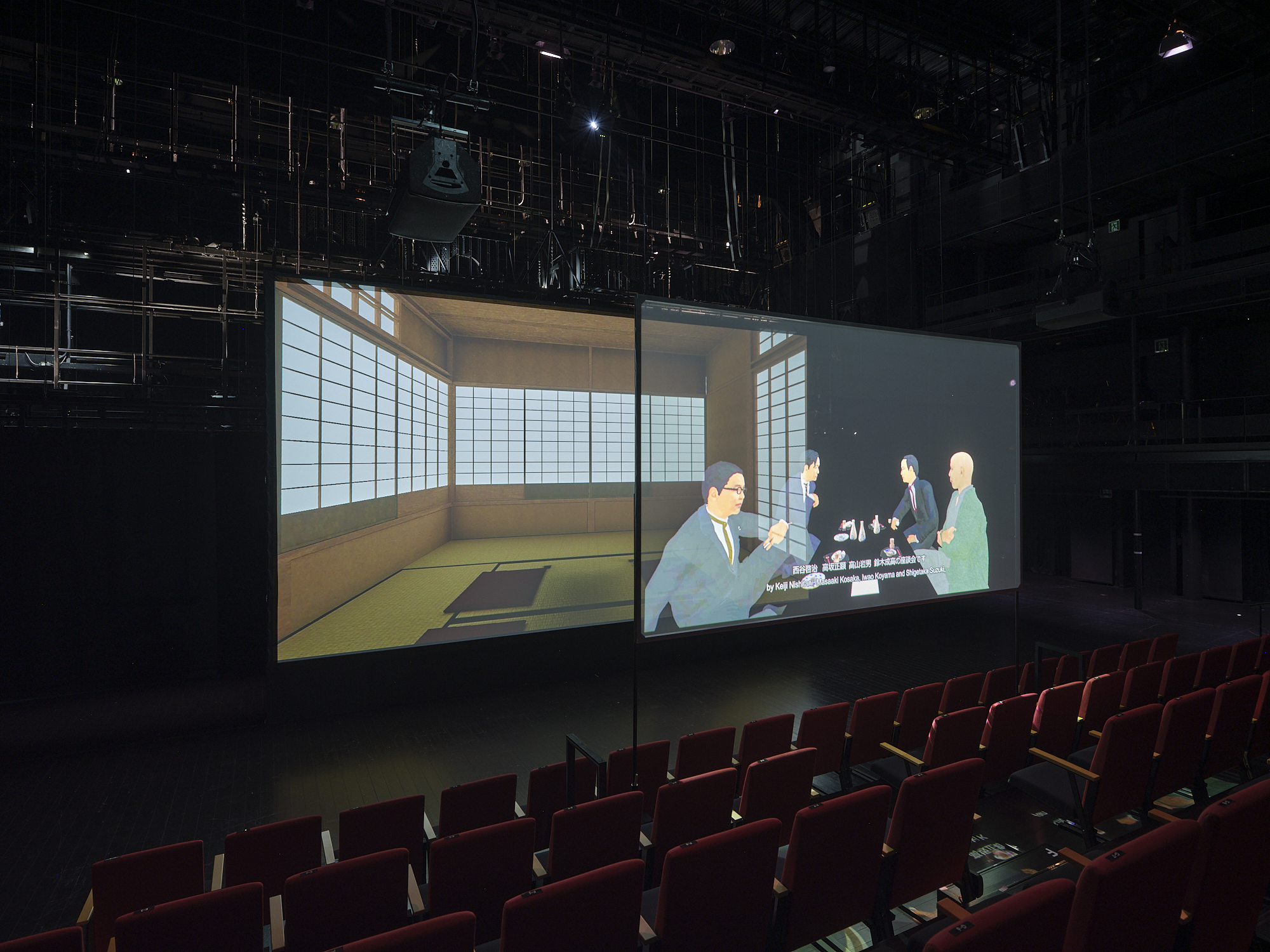
Synchronized 6 channel video, 6 channel sound, VR
Duration unlimited
Installation view, Yamaguchi Center for Arts and Media [YCAM], 2021
Courtesy of YCAM, Photo: Ichiro Mishima
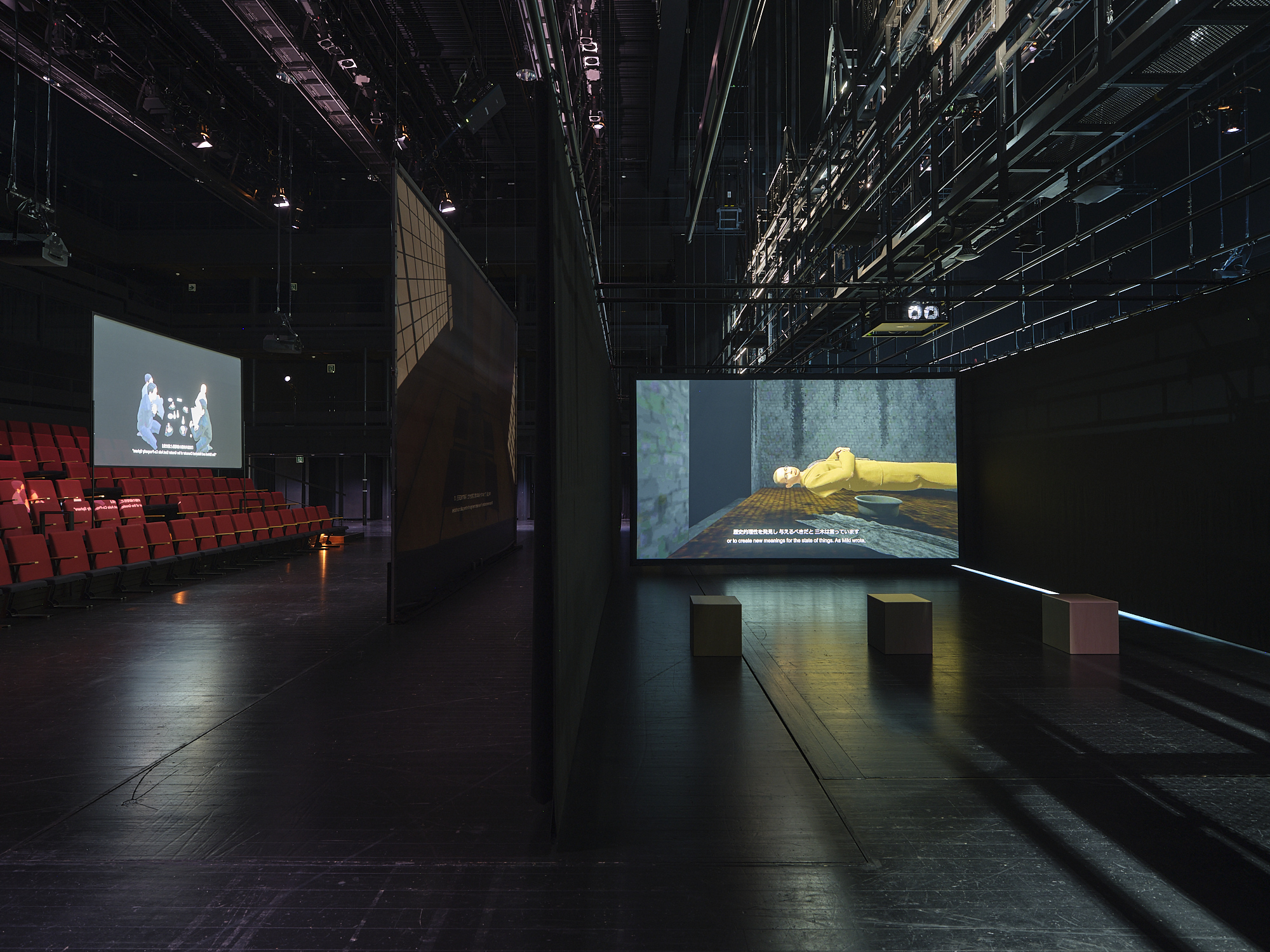
Synchronized 6 channel video, 6 channel sound, VR
Duration unlimited
Installation view, Yamaguchi Center for Arts and Media [YCAM], 2021
Courtesy of YCAM, Photo: Ichiro Mishima
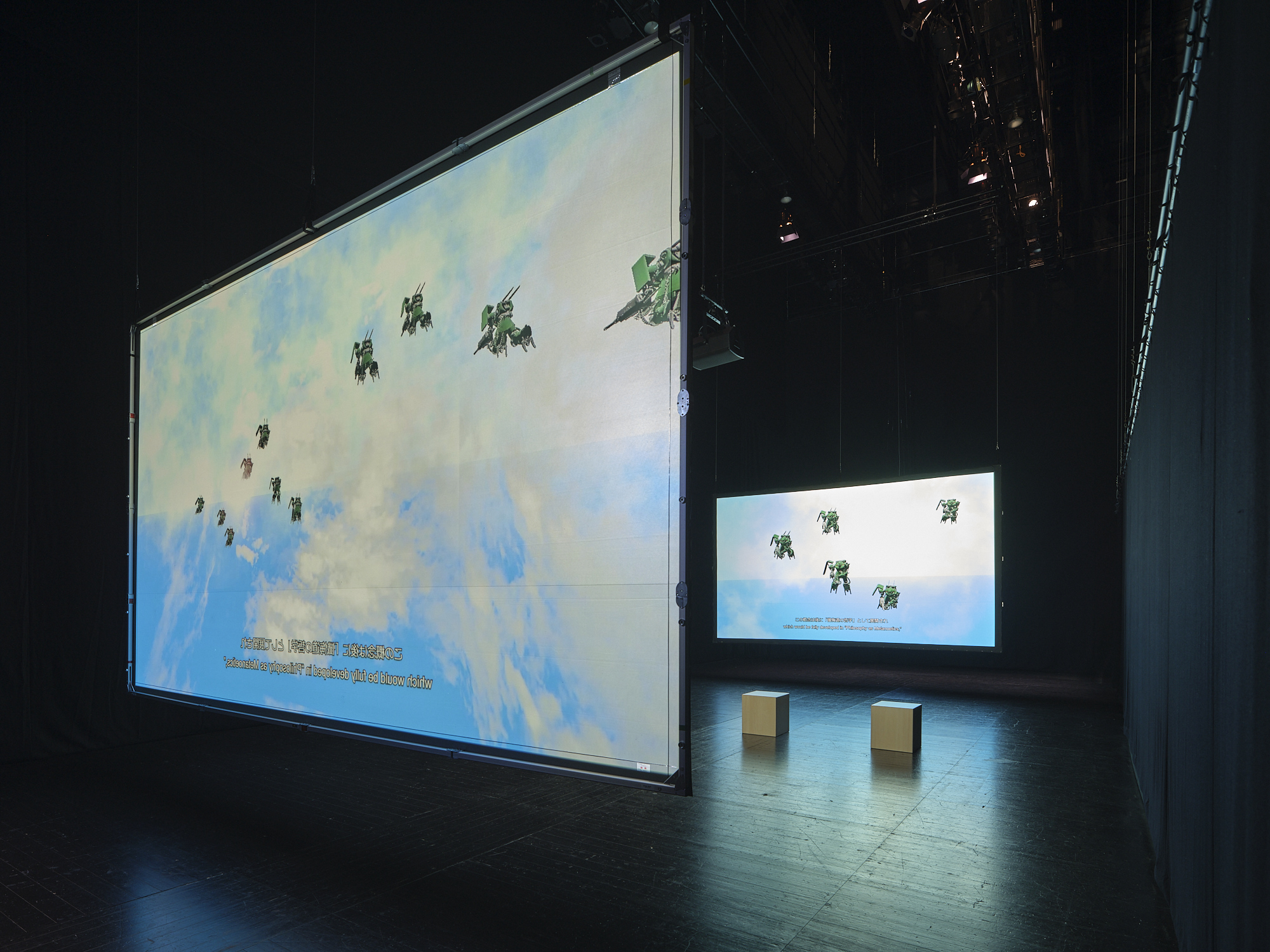
Synchronized 6 channel video, 6 channel sound, VR
Duration unlimited
Installation view, Yamaguchi Center for Arts and Media [YCAM], 2021
Courtesy of YCAM, Photo: Ichiro Mishima
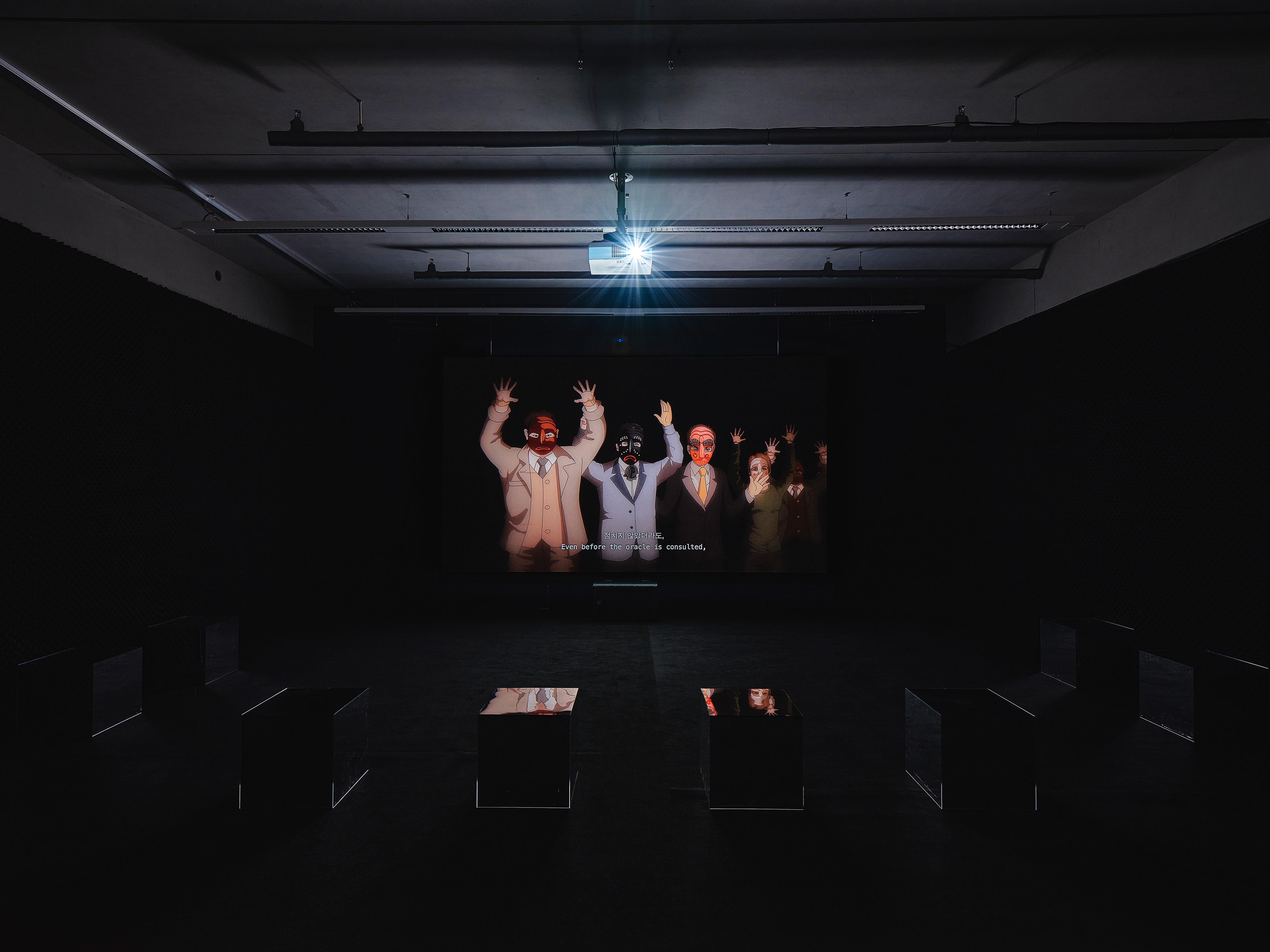
Synchronized double channel HD projection, 6 channel sound, 30 min 30 seconds
Installation view, 13th Gwangju Biennale, 2021
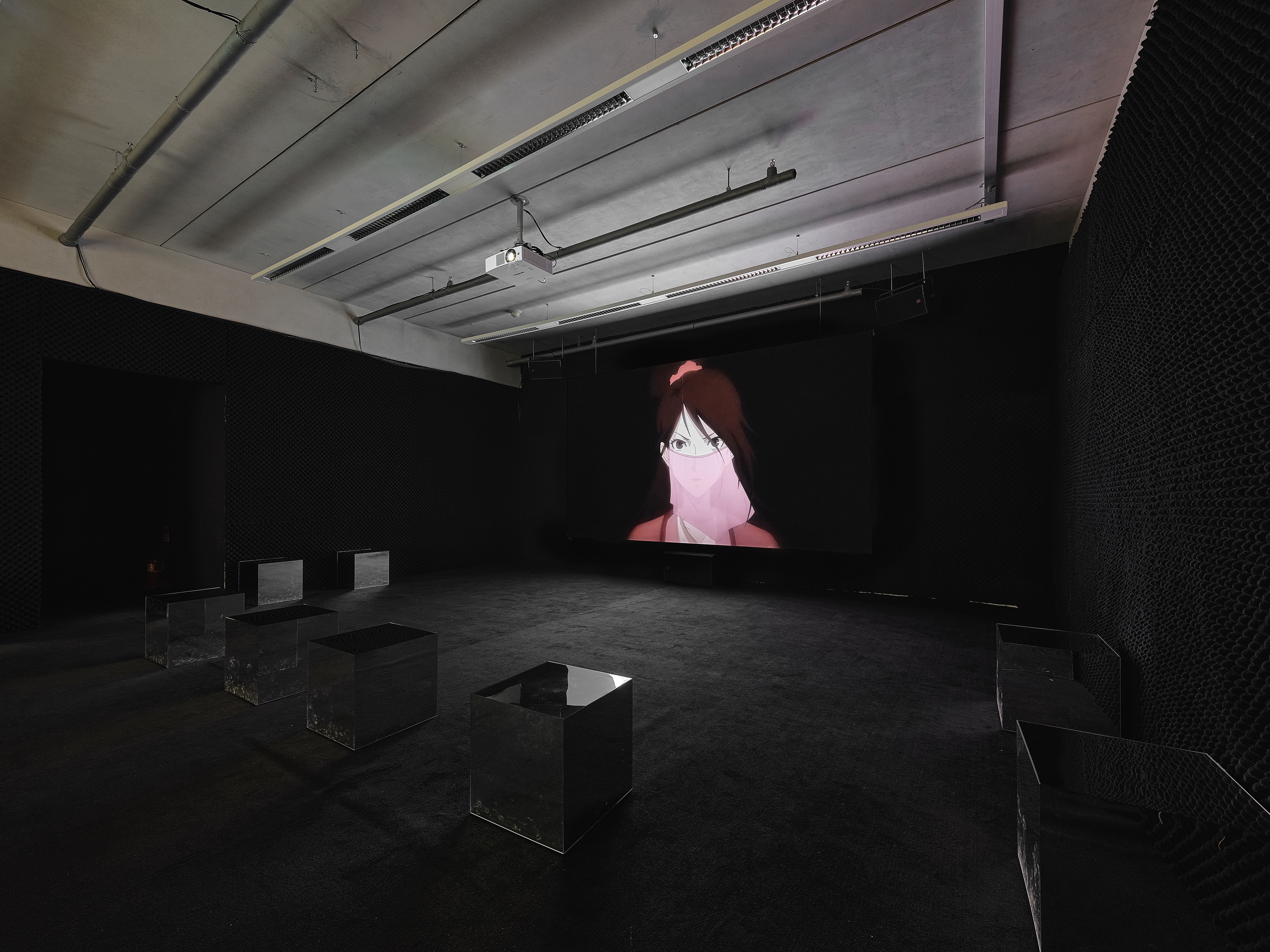
Synchronized double channel HD projection, 6 channel sound, 30 min 30 seconds
Installation view, 13th Gwangju Biennale, 2021
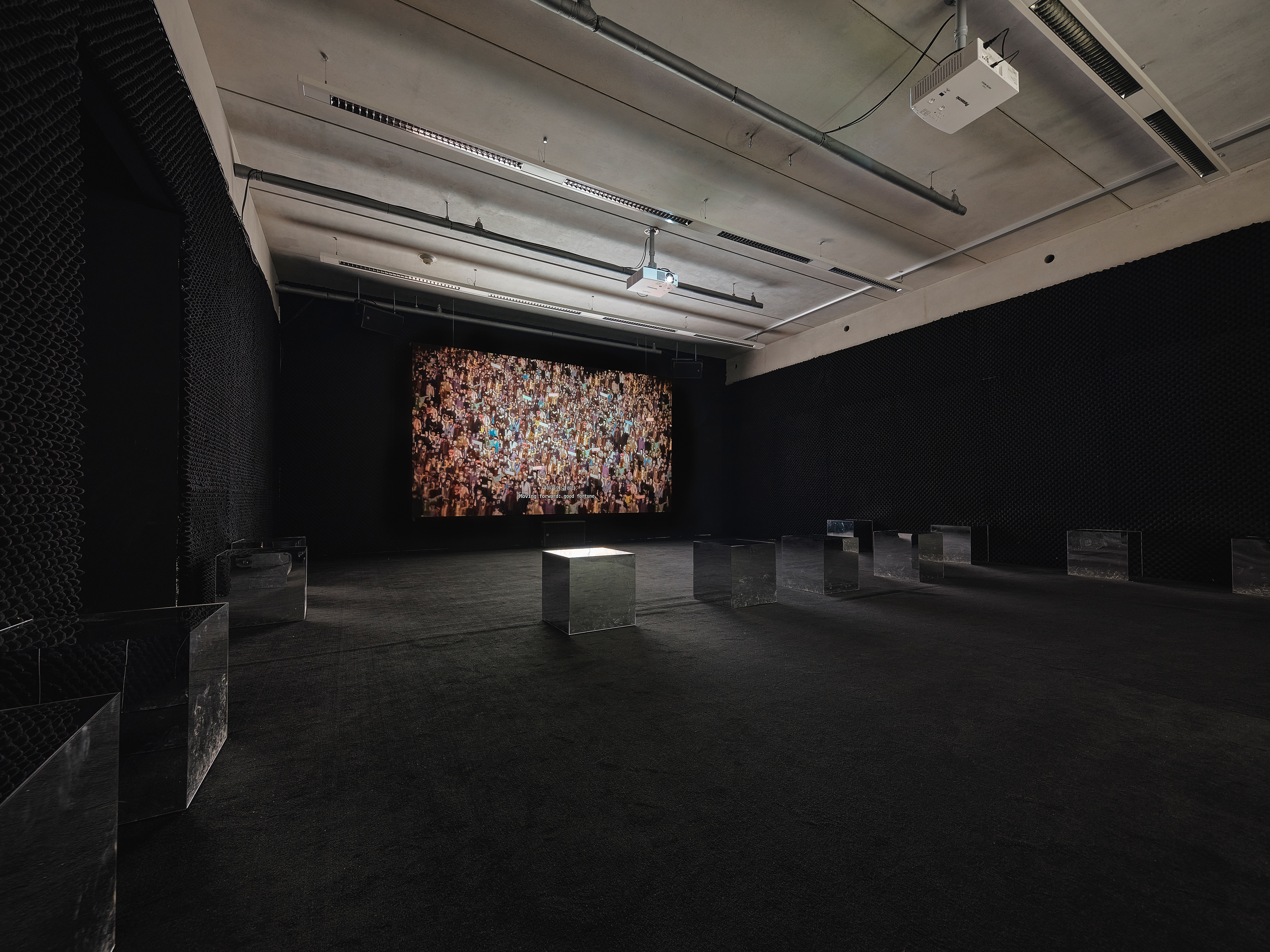
Synchronized double channel HD projection, 6 channel sound, 30 min 30 seconds
Installation view, 13th Gwangju Biennale, 2021

Synchronized double channel HD projection, 6 channel sound, 30 min 30 seconds
Commissioned by the Gwangju Biennale Foundation, supported by Hammer Museum

Synchronized double channel HD projection, 6 channel sound, 30 min 30 seconds
Commissioned by the Gwangju Biennale Foundation, supported by Hammer Museum
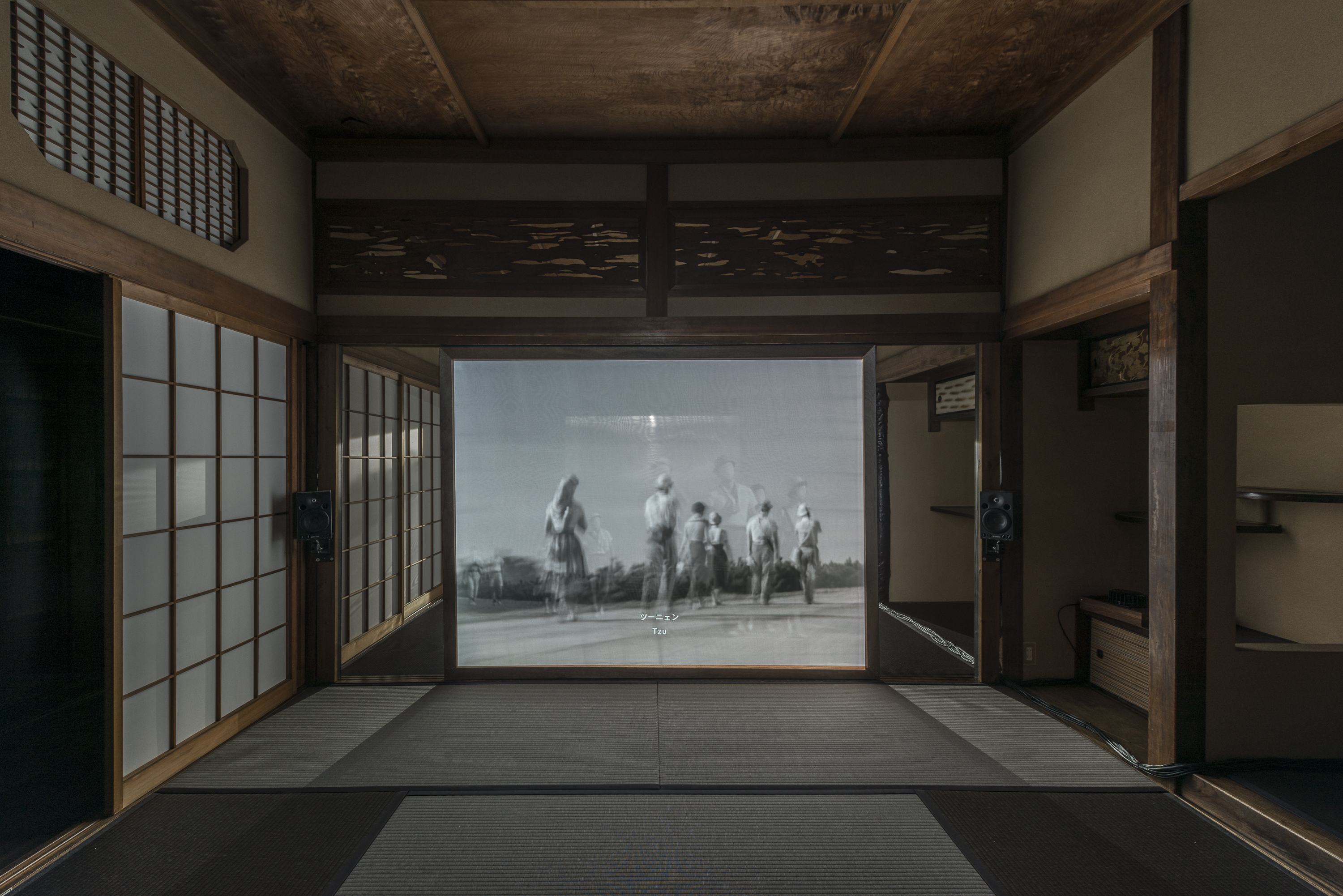
Site specific installation at the Kiraku-Tei, Toyota City, 6 channel video projection, 24 channel sound, automated fans, lights, transducers and show control system, 2019
Installation view at Aichi Triennale 2019
Photograph: Takeshi Hirabayashi
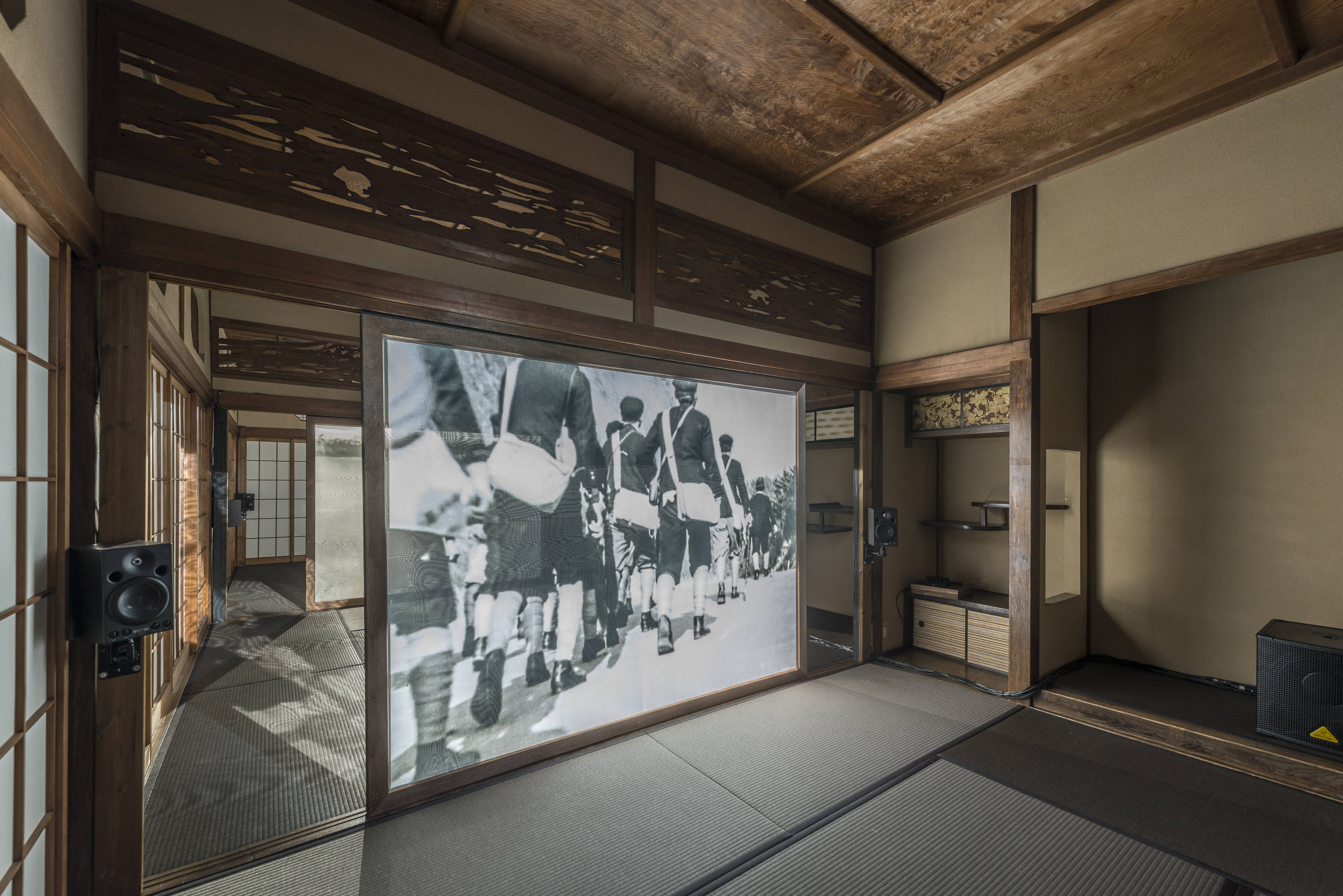
Site specific installation at the Kiraku-Tei, Toyota City, 6 channel video projection, 24 channel sound, automated fans, lights, transducers and show control system, 2019
Installation view at Aichi Triennale 2019
Photograph: Takeshi Hirabayashi
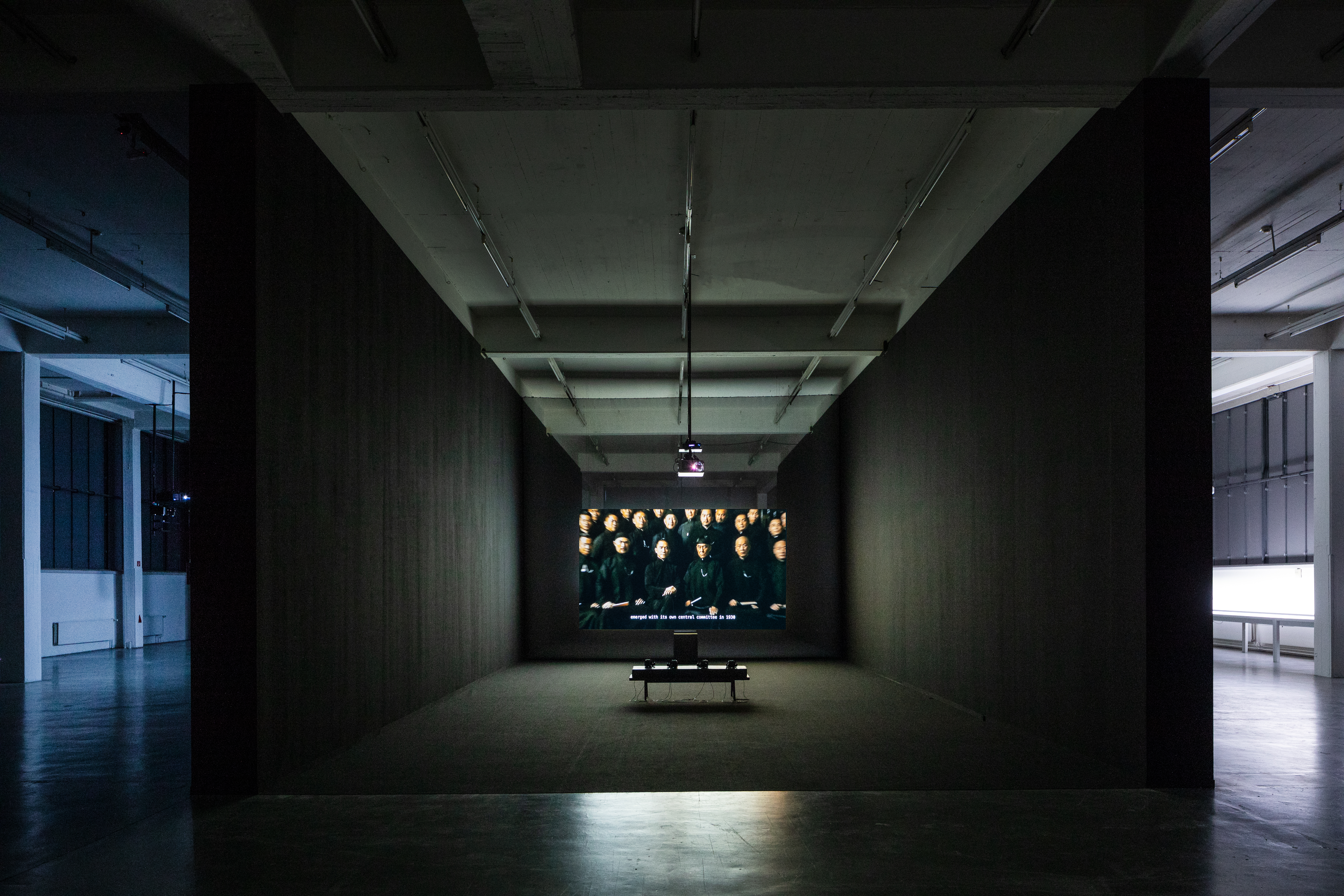
Image courtesy of Kustverein in Hamburg
Photo credit: Fred Dott

From ‘The Critical Dictionary of South East Asia’ 2012 ongoing. Installation with VR Video 360 degrees, ambisonic sound through headphones, single-channel HD video projection, 5-channel sound; dimensions variable. Installation view: Dar Al Nadwa, Calligraphy Square. Part of Sharjah Biennial 14: ‘Leaving the Echo Chamber’ 2019. Commissioned by Sharjah Art Foundation. Courtesy of the artist and Edouard Malingue Gallery (Hong Kong, Shanghai). Image courtesy of Sharjah Art Foundation.

From ‘The Critical Dictionary of South East Asia’ 2012 ongoing. Installation with VR Video 360 degrees, ambisonic sound through headphones, single-channel HD video projection, 5-channel sound; dimensions variable. Installation view: Dar Al Nadwa, Calligraphy Square. Part of Sharjah Biennial 14: ‘Leaving the Echo Chamber’ 2019. Commissioned by Sharjah Art Foundation. Courtesy of the artist and Edouard Malingue Gallery (Hong Kong, Shanghai). Image courtesy of Sharjah Art Foundation.

From ‘The Critical Dictionary of South East Asia’ 2012 ongoing. Installation with VR Video 360 degrees, ambisonic sound through headphones, single-channel HD video projection, 5-channel sound; dimensions variable. Installation view: Dar Al Nadwa, Calligraphy Square. Part of Sharjah Biennial 14: ‘Leaving the Echo Chamber’ 2019. Commissioned by Sharjah Art Foundation. Courtesy of the artist and Edouard Malingue Gallery (Hong Kong, Shanghai). Image courtesy of Sharjah Art Foundation.
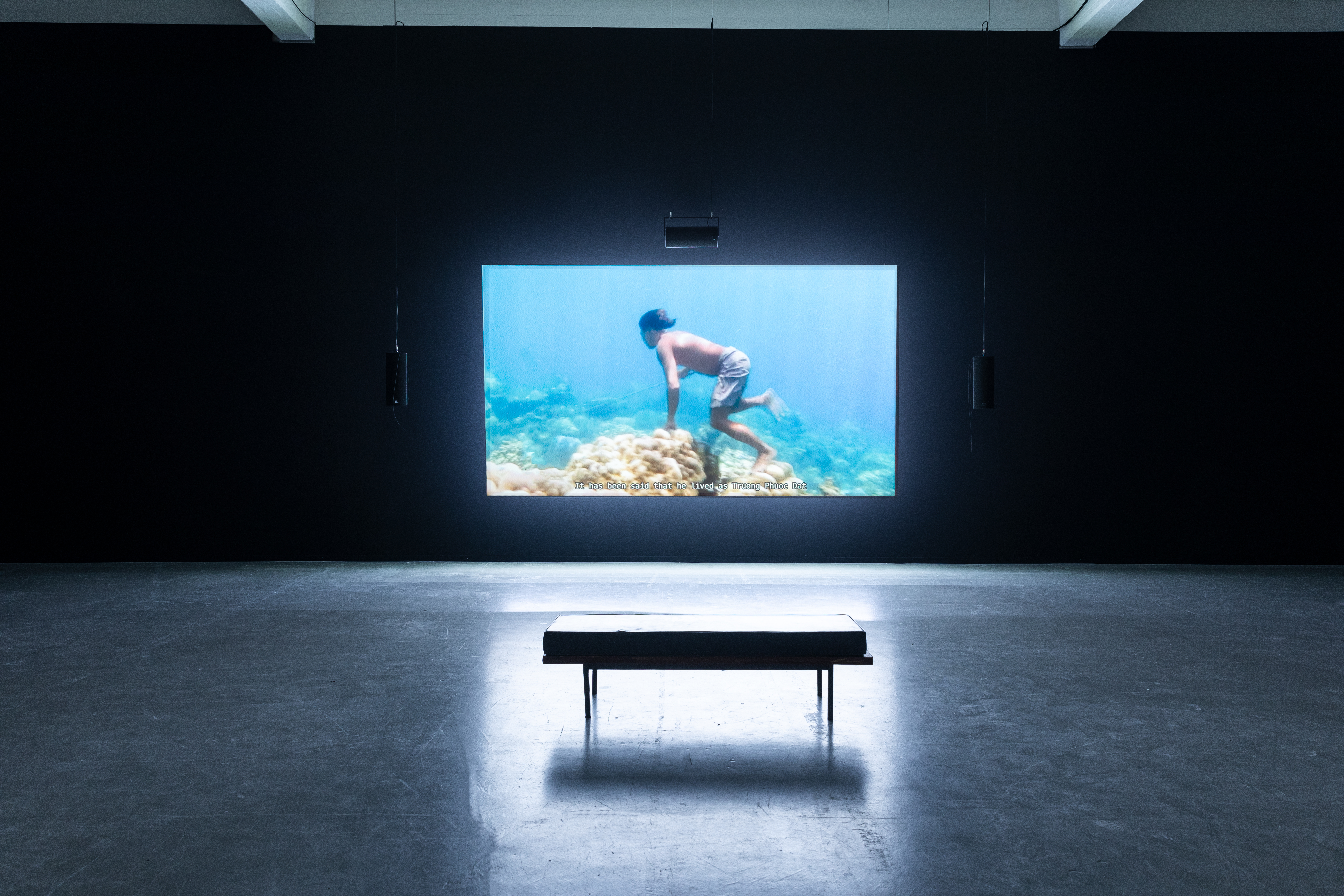
Image courtesy of Kustverein in Hamburg
Photo credit: Fred Dott
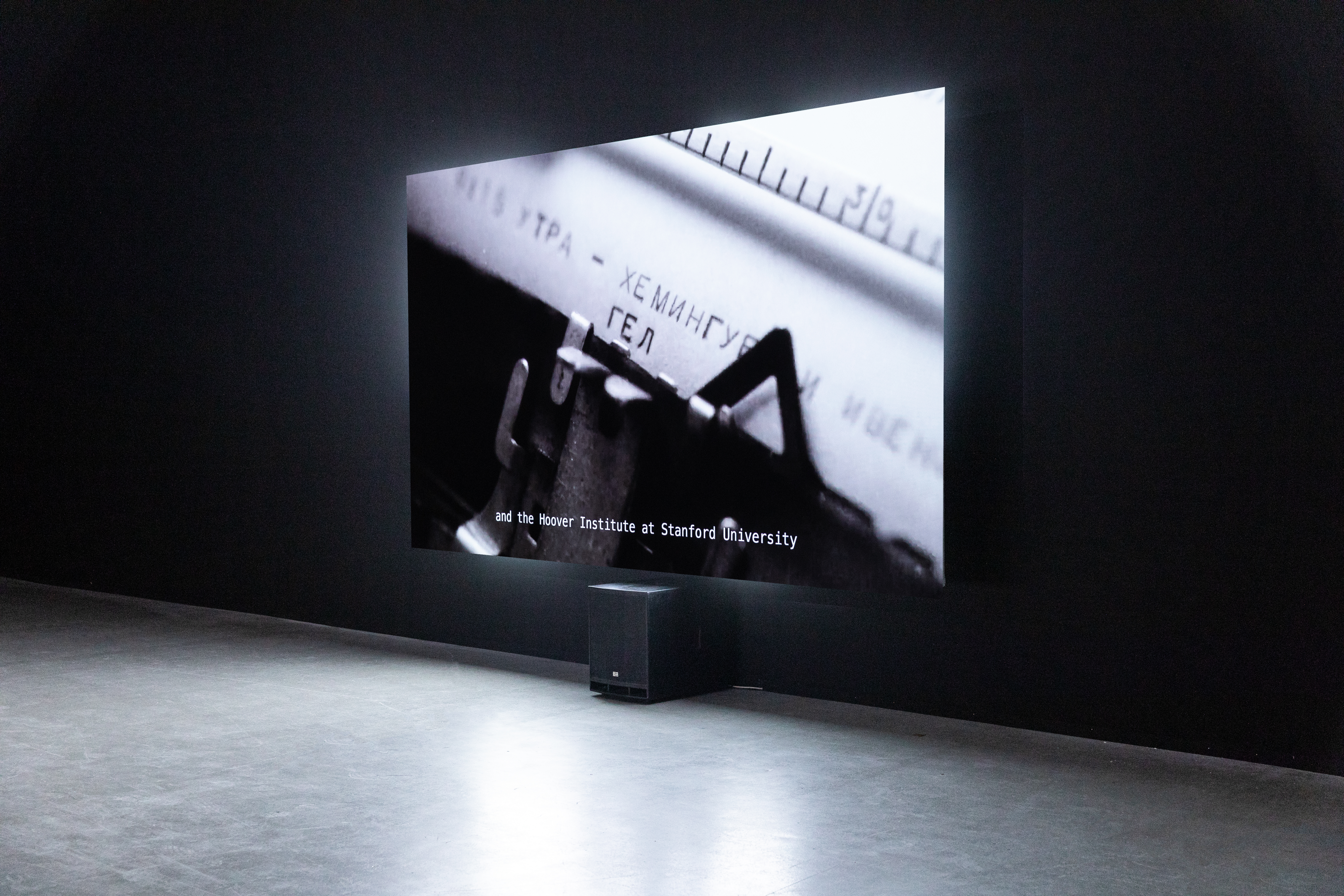
Image courtesy of Kustverein in Hamburg
Photo credit: Fred Dott
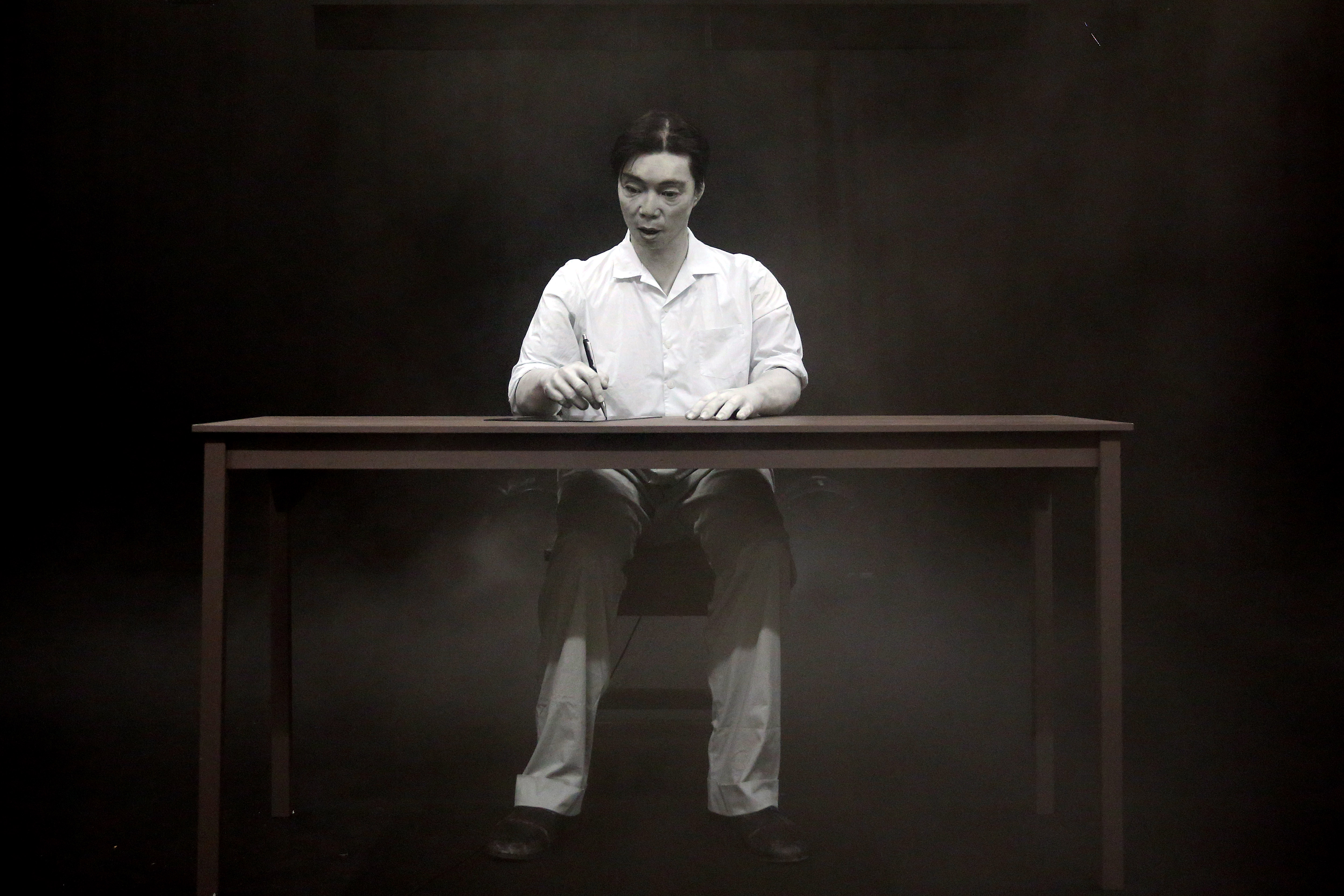
Image courtesy of Anja Beutler and Kampnagel
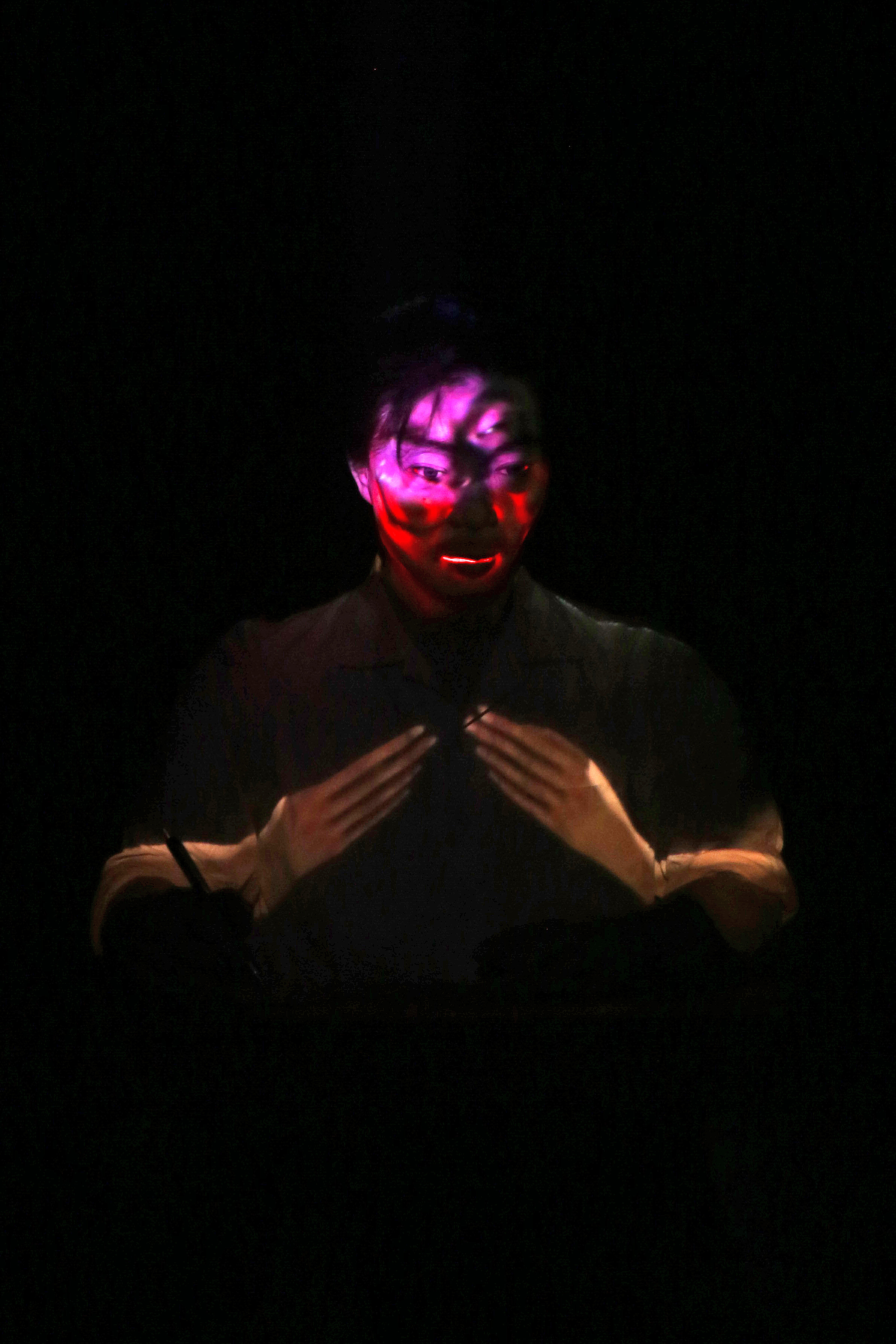
Image courtesy of Anja Beutler and Kampnagel
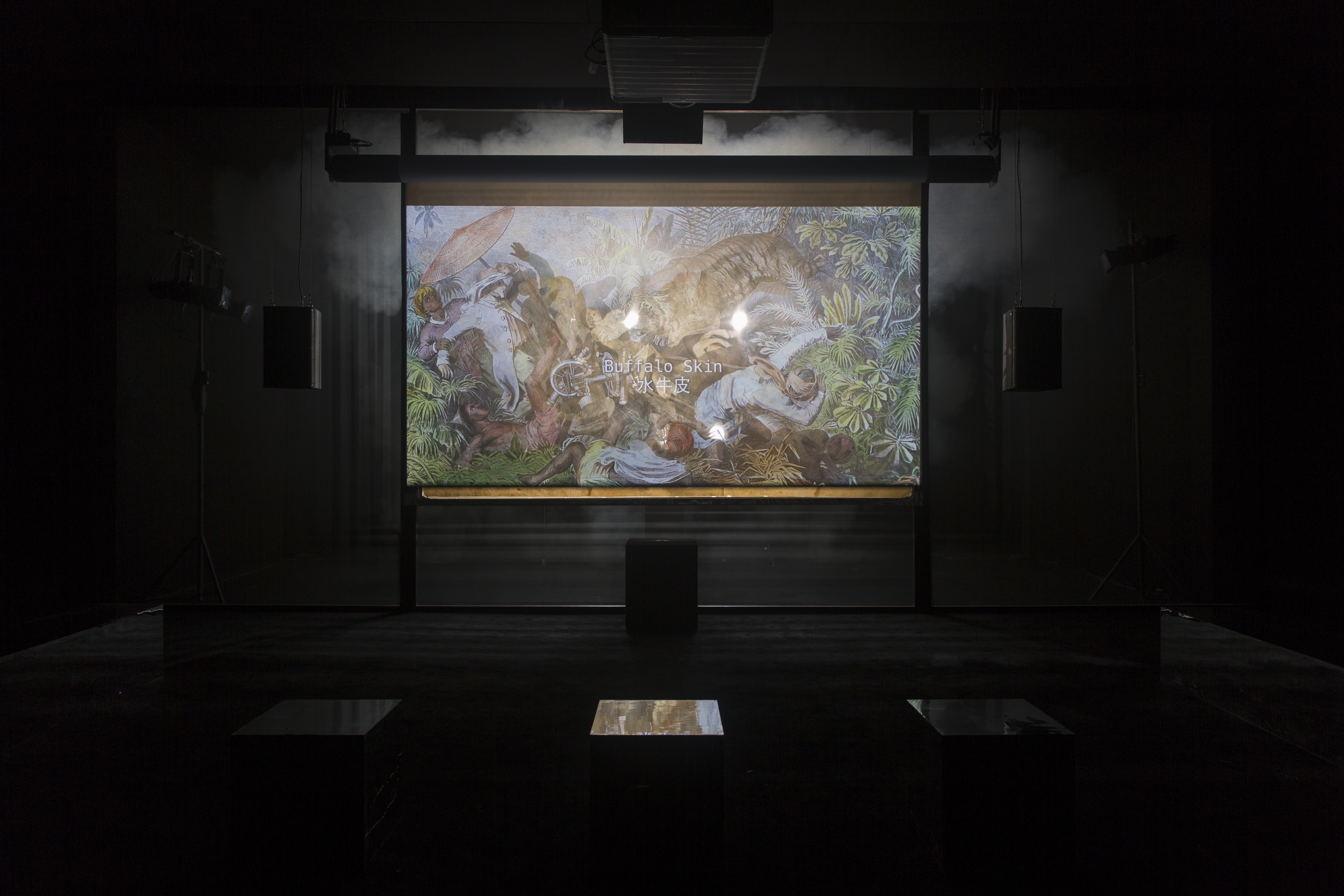
Image courtesy of McaM and the artist
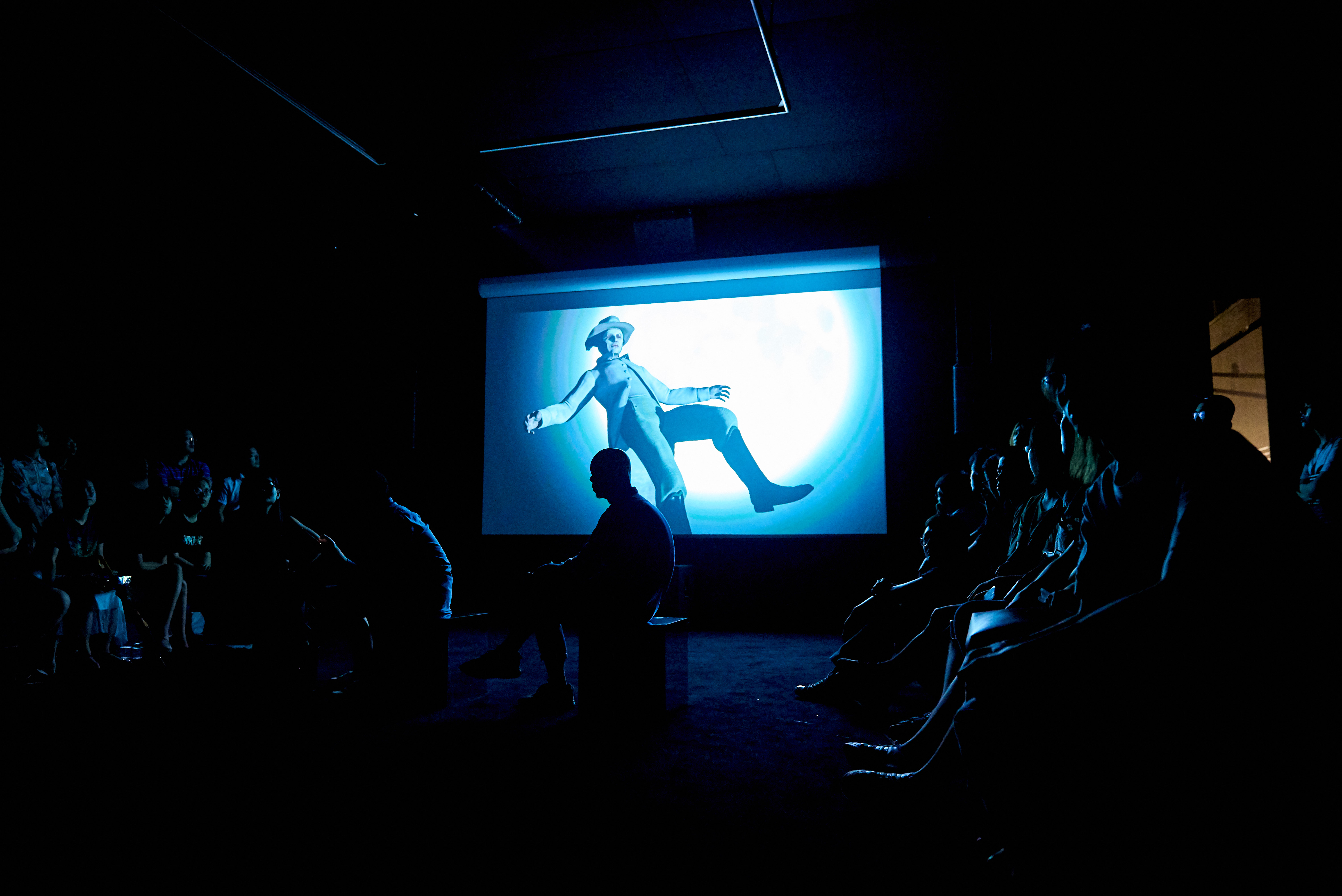
Image courtesy of McaM and the artist
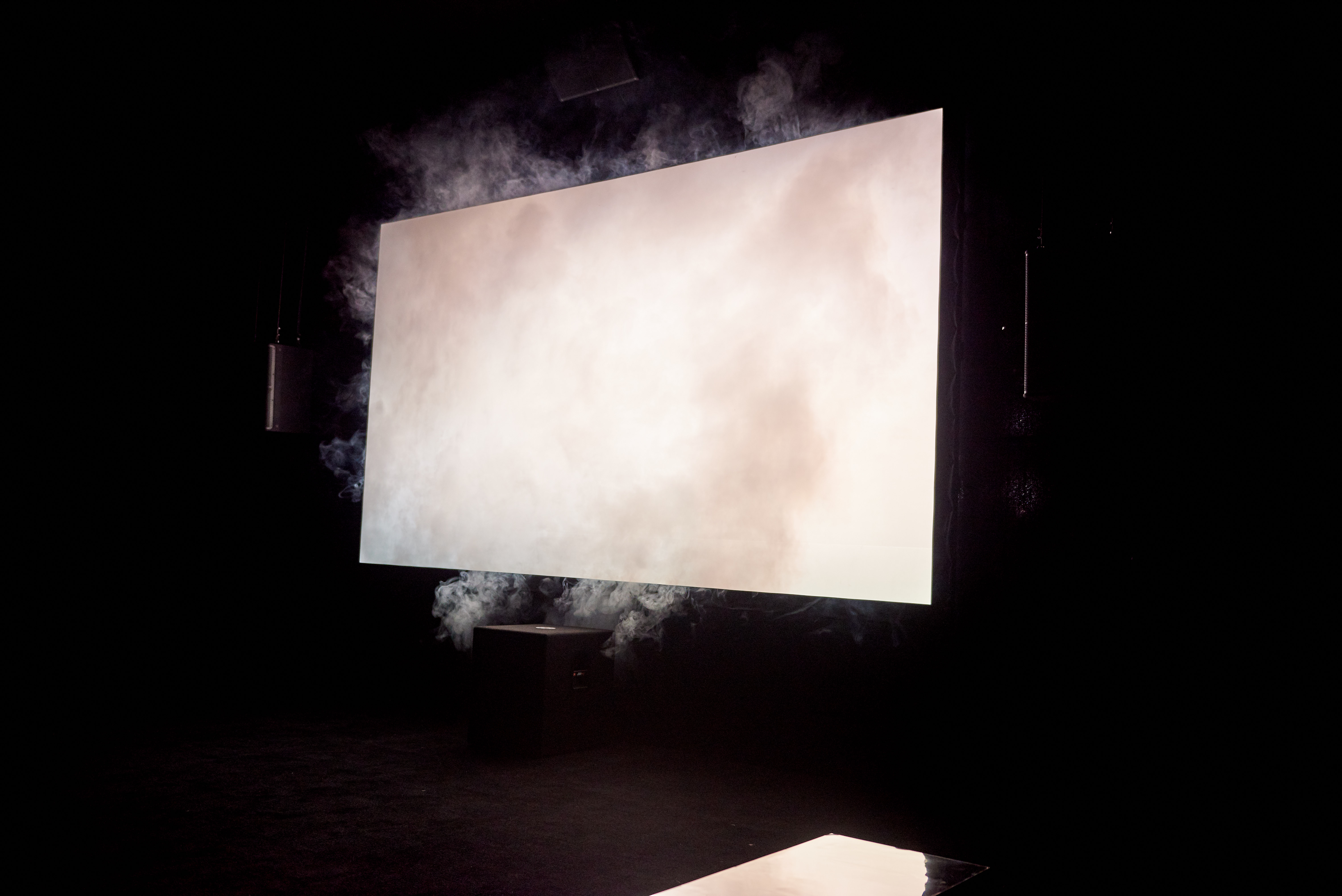
Image courtesy of McaM and the artist
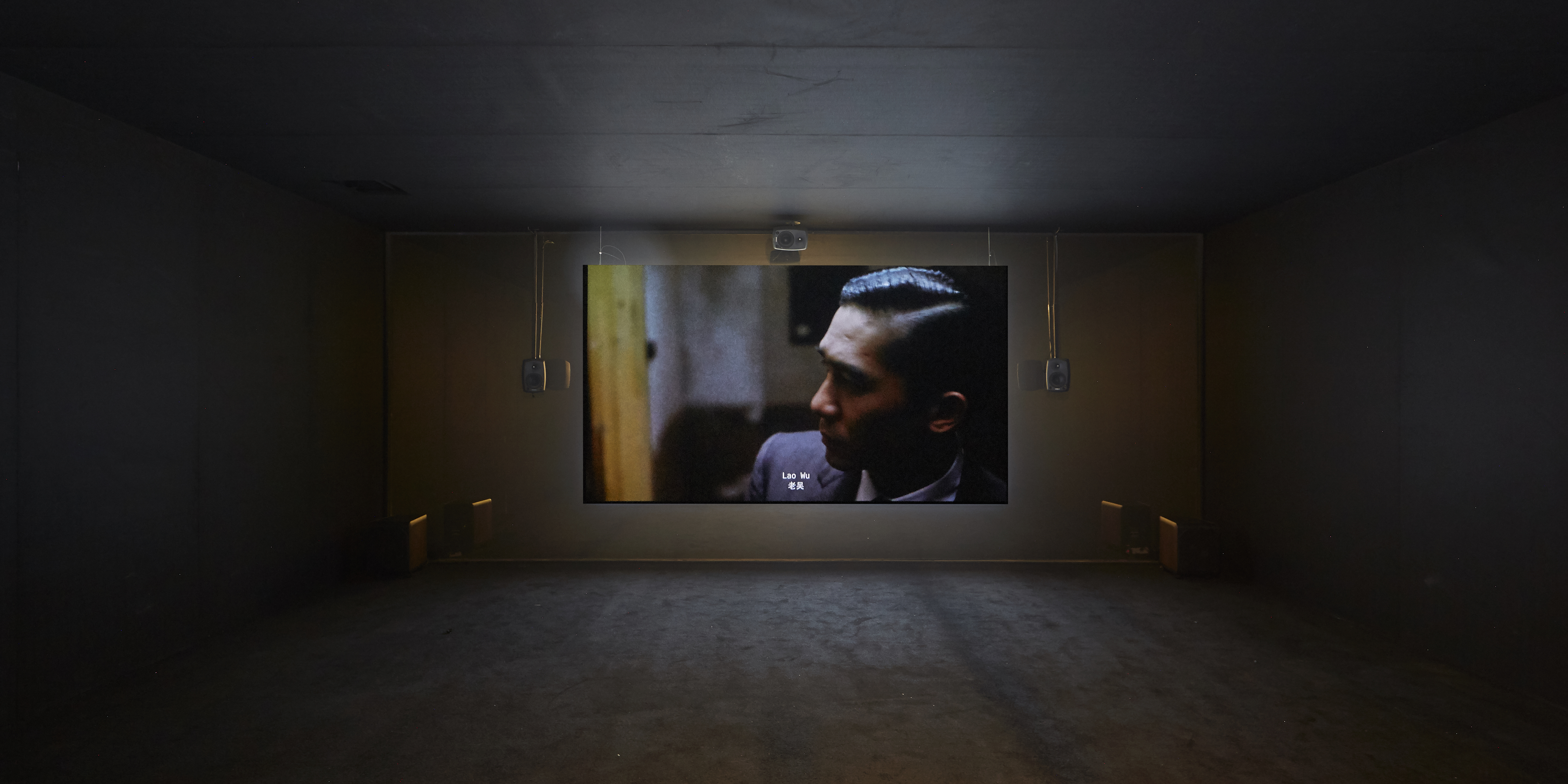
Image courtesy of McaM and the artist
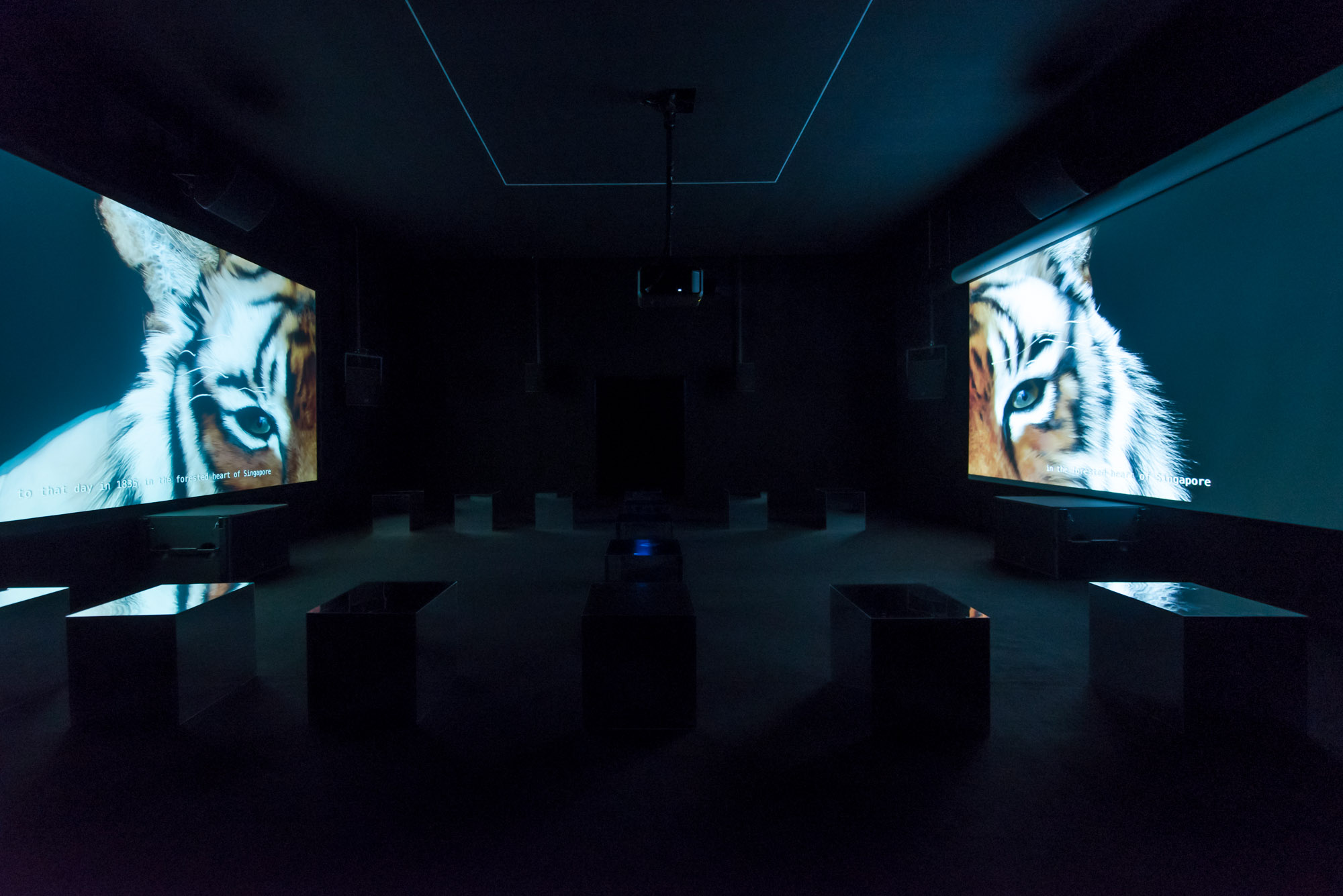
2017
Installation view at ‘Light to Night Festival 2018: Colour Sensations’,
National Gallery Singapore, 2018
Image courtesy of National Gallery Singapore
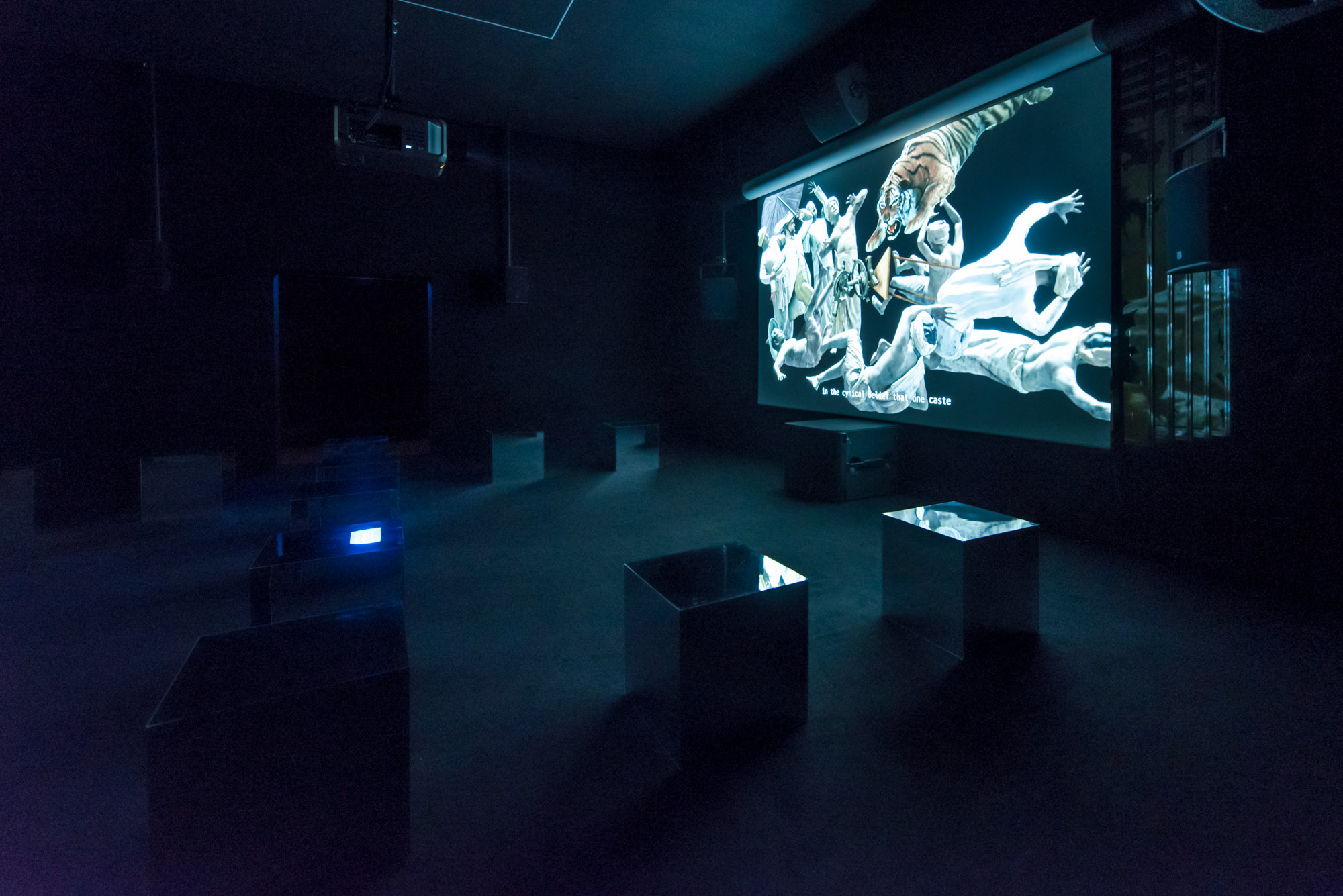
2017
Installation view at ‘Light to Night Festival 2018: Colour Sensations’,
National Gallery Singapore, 2018
Image courtesy of National Gallery Singapore
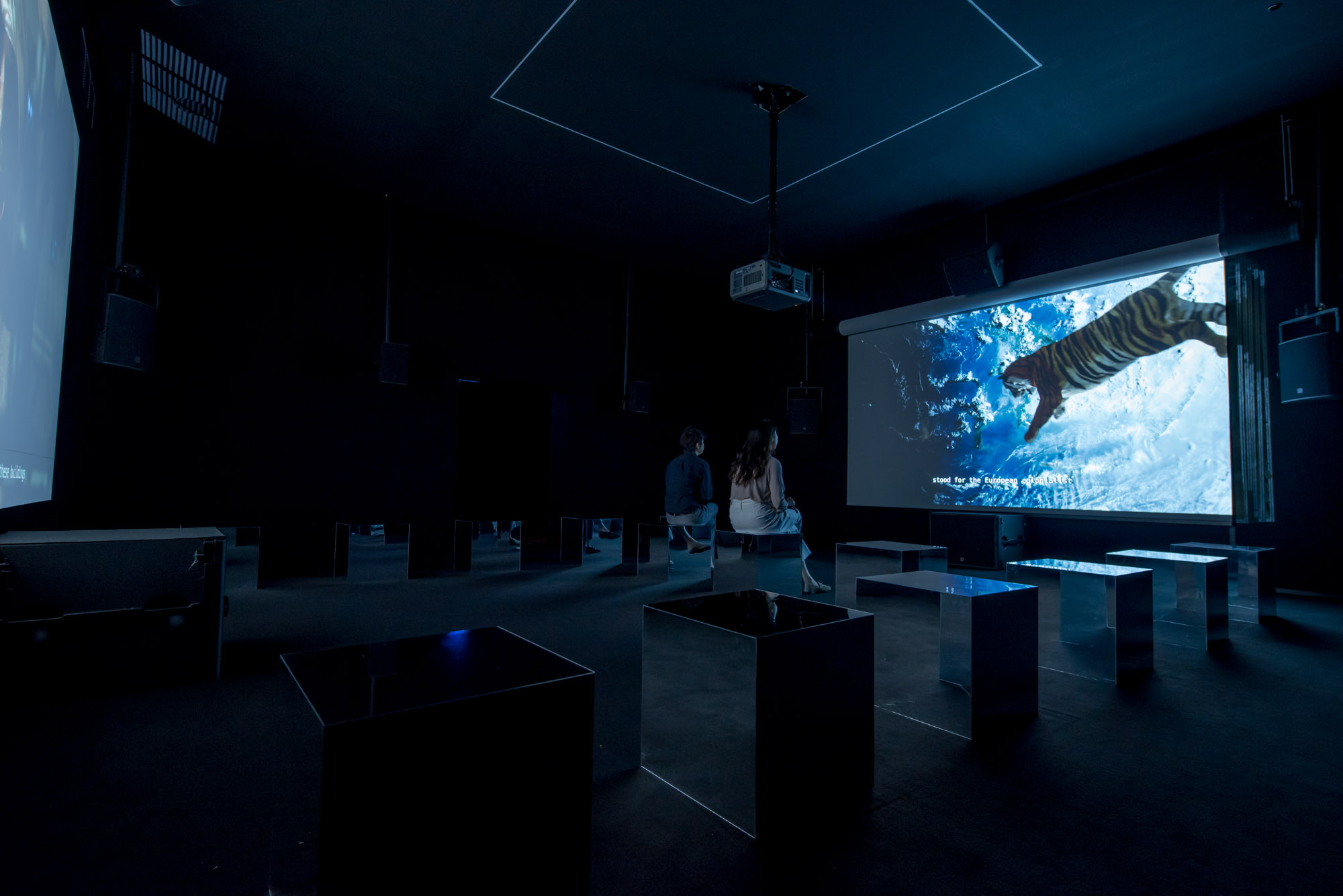
2017
Installation view at ‘Light to Night Festival 2018: Colour Sensations’,
National Gallery Singapore, 2018
Image courtesy of National Gallery Singapore
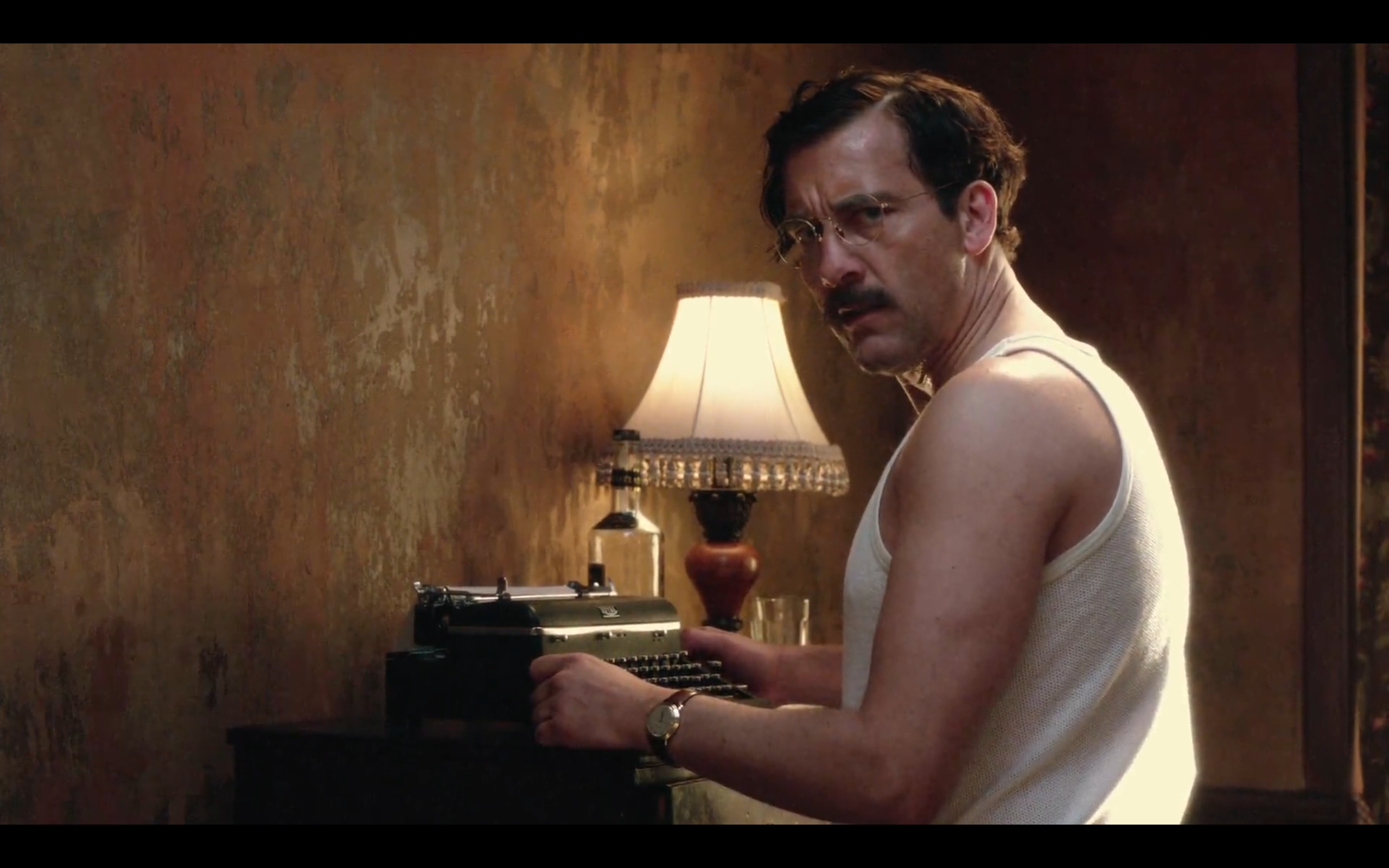
2015, single channel HD projection, surround sound, 16 mins 51 sec
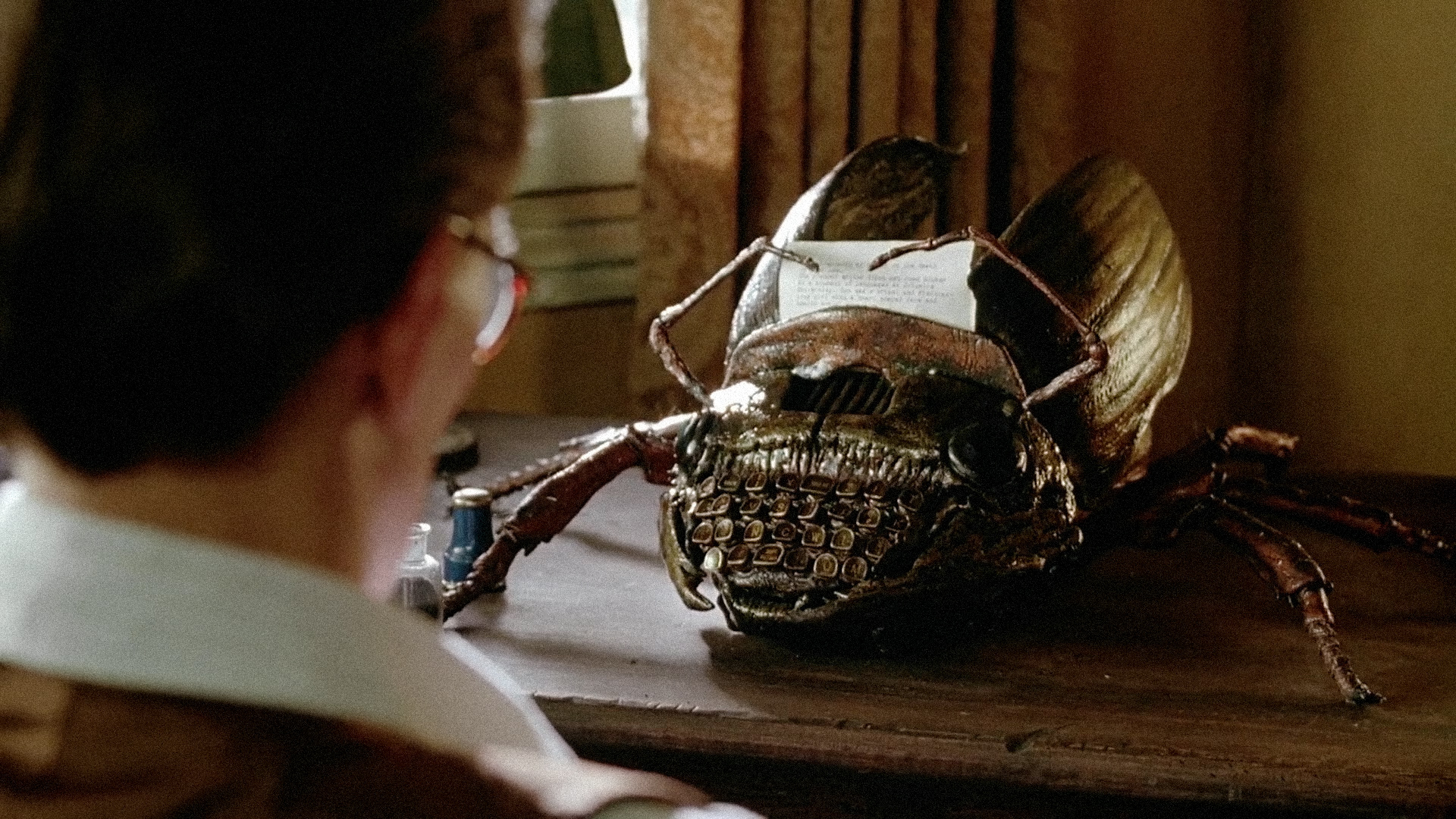
2015, single channel HD projection, surround sound, 16 mins 51 sec
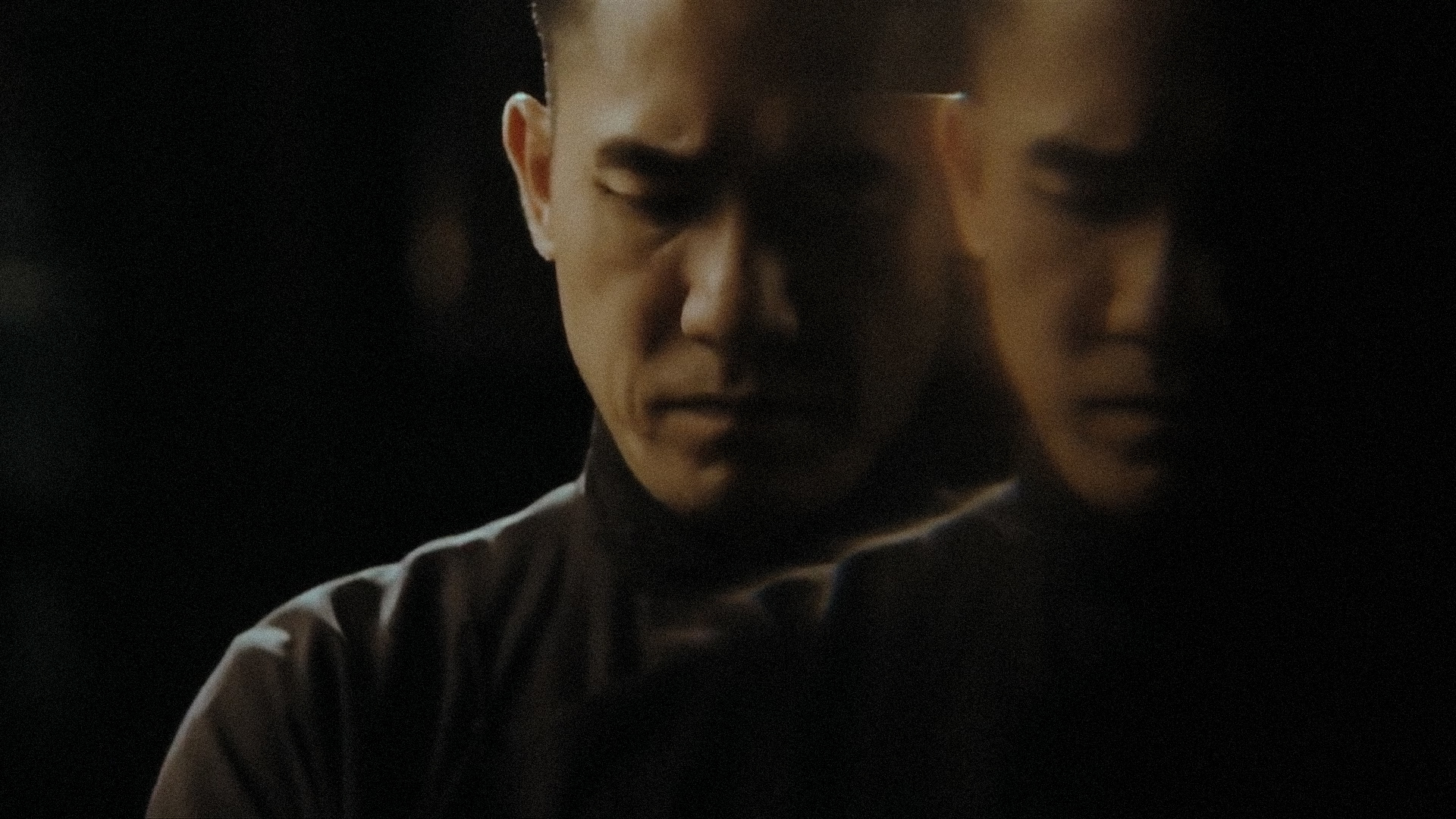
2015, synchronized double channel HD projections, double 5.1 systems, 21 mins 51 sec
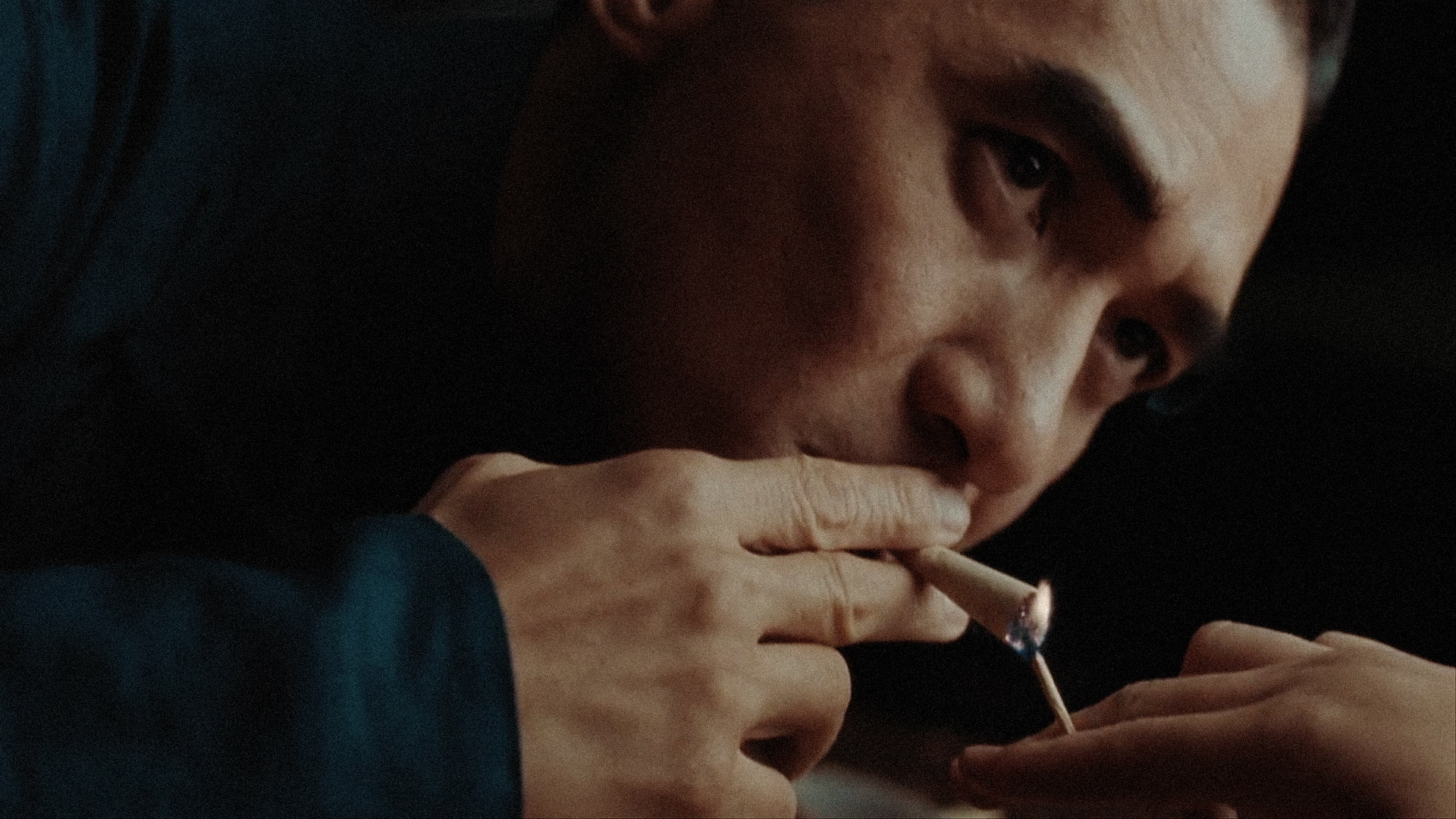
2015, synchronized double channel HD projections, double 5.1 systems, 21 mins 51 sec
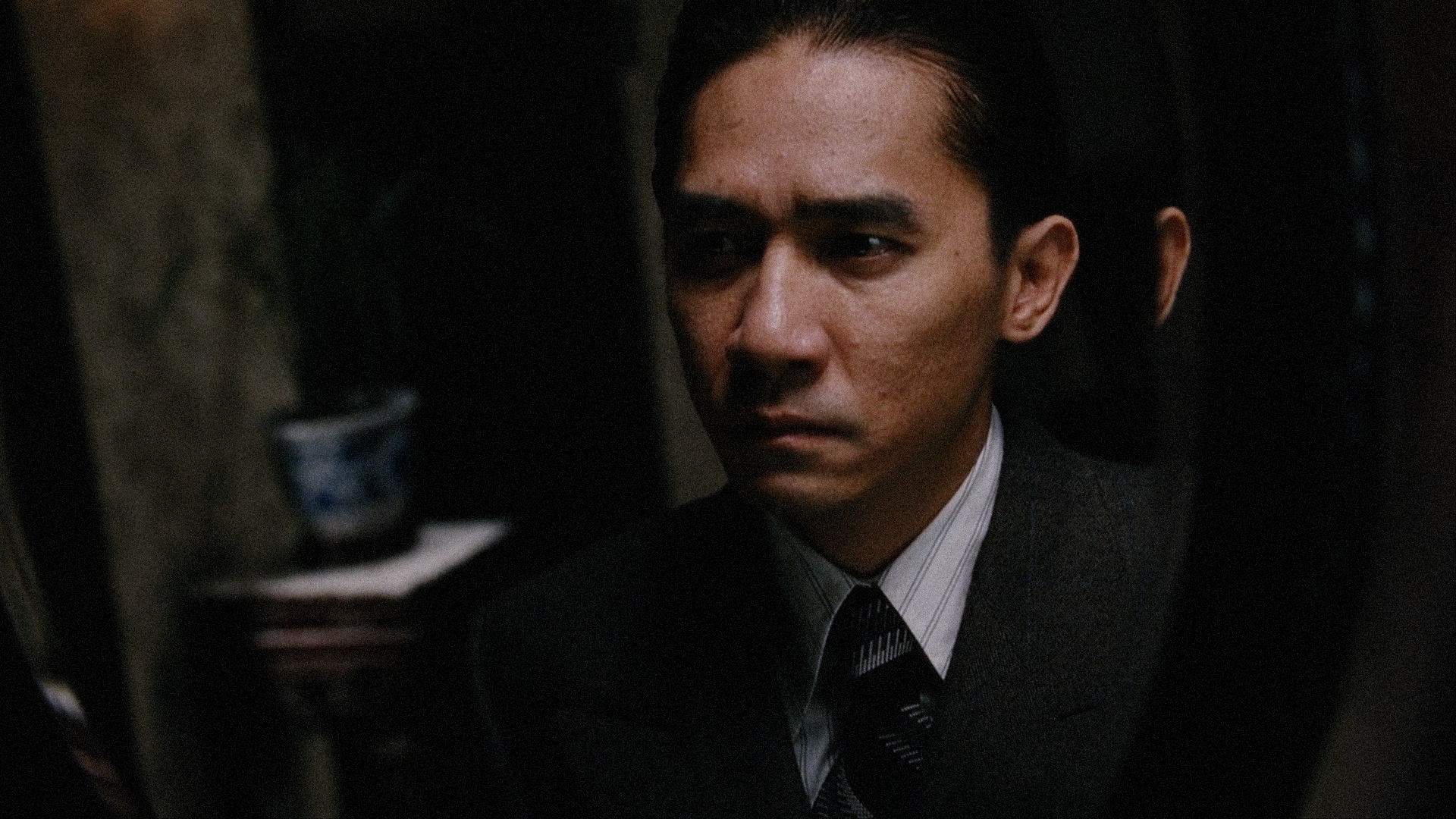
2015, synchronized double channel HD projections, double 5.1 systems, 21 mins 51 sec
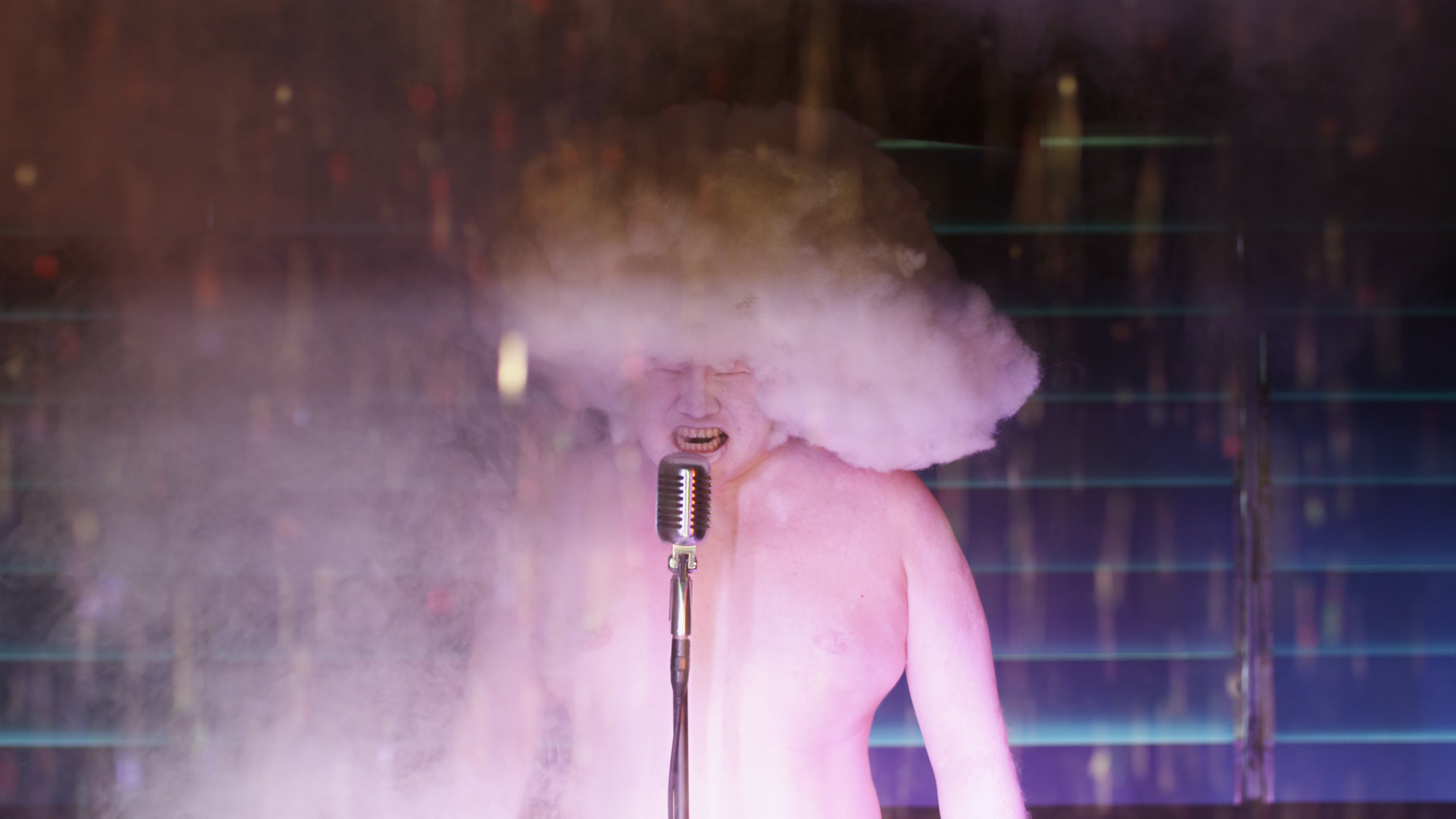
2011, single channel HD video, stereo sound, 28 min 16 sec
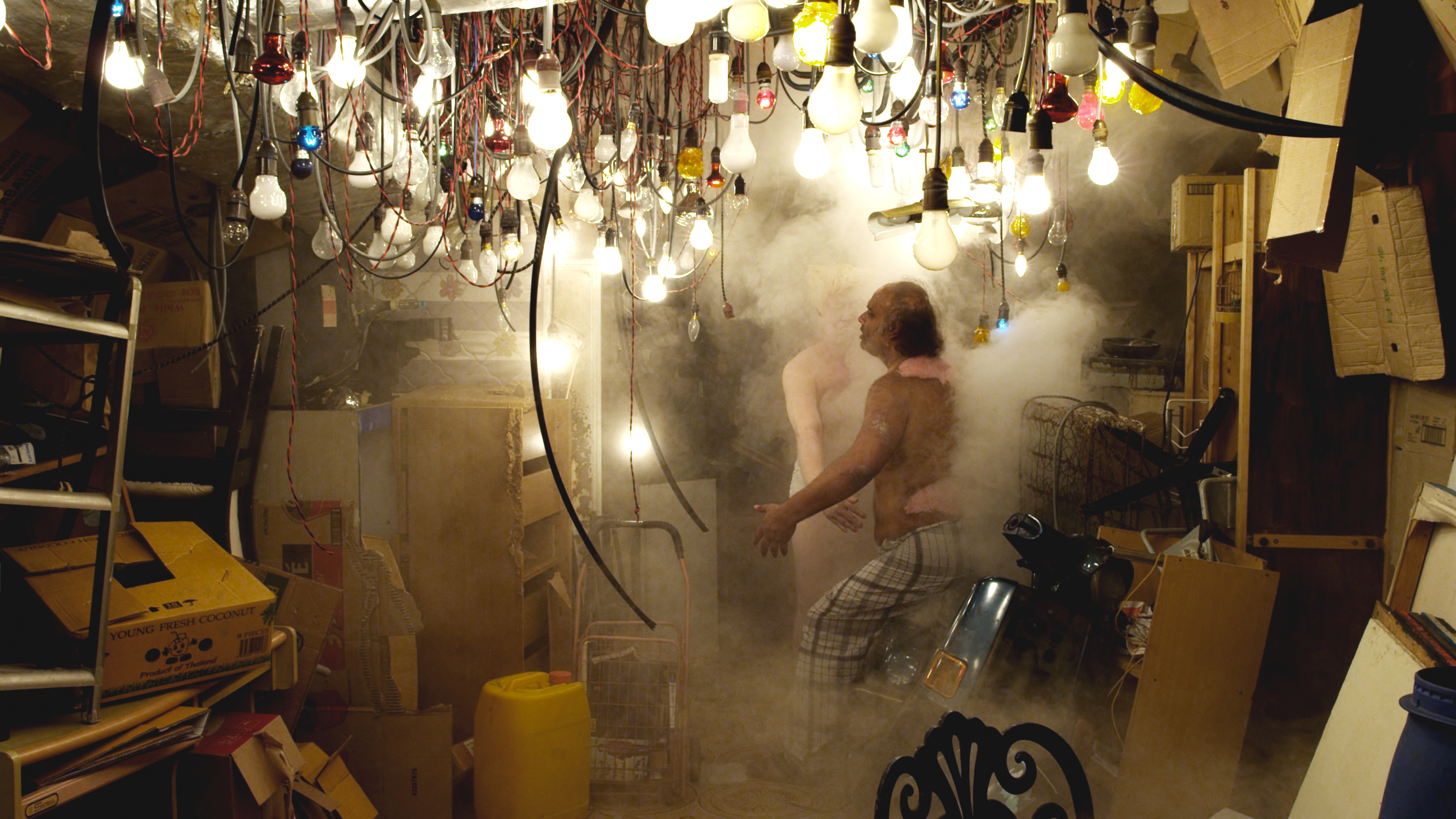
2011, single channel HD video, stereo sound, 28 min 16 sec
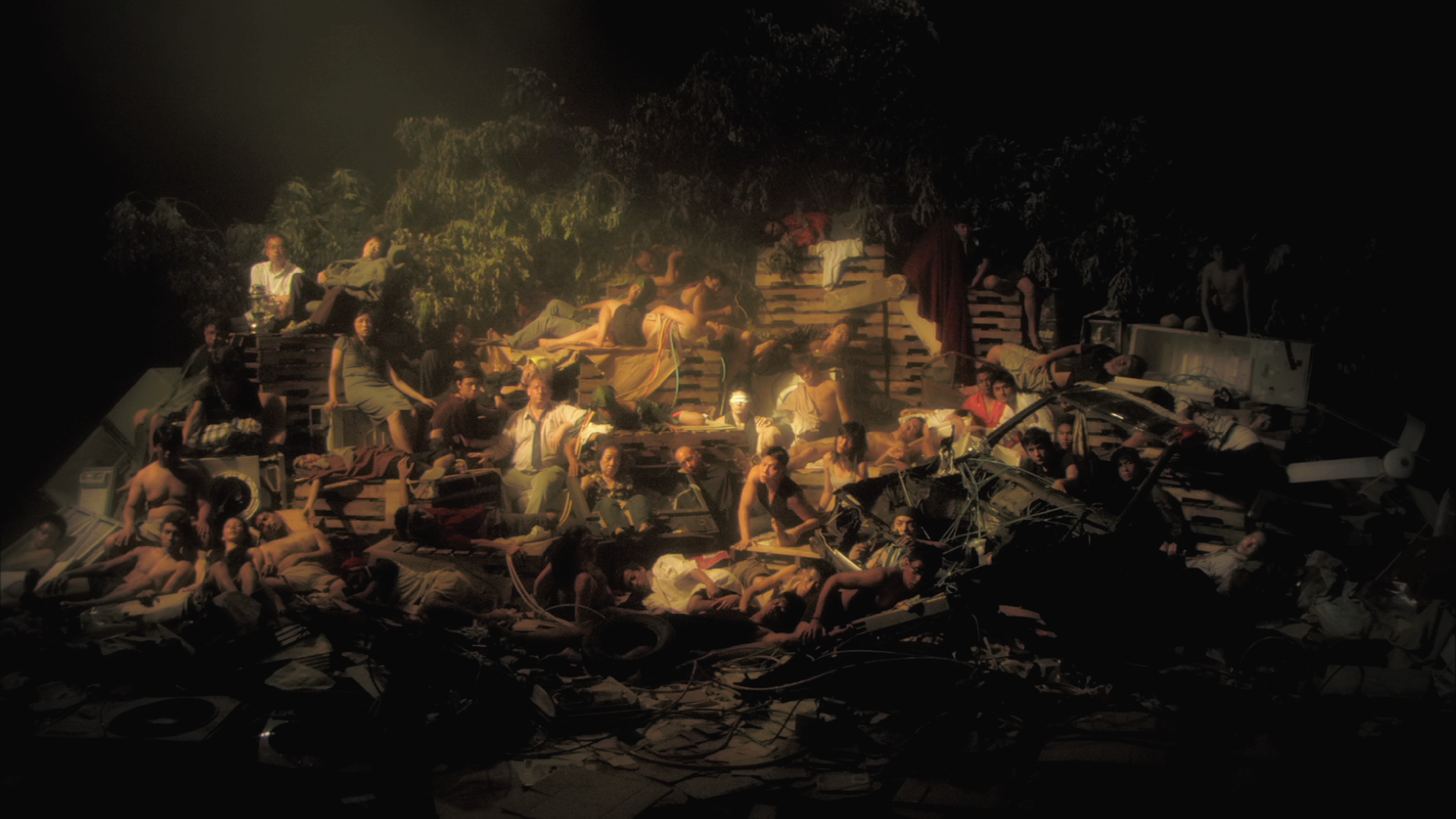
2011, single channel HD video, 5.1 surround sound, 42 mins
soundtrack by Black to Comm
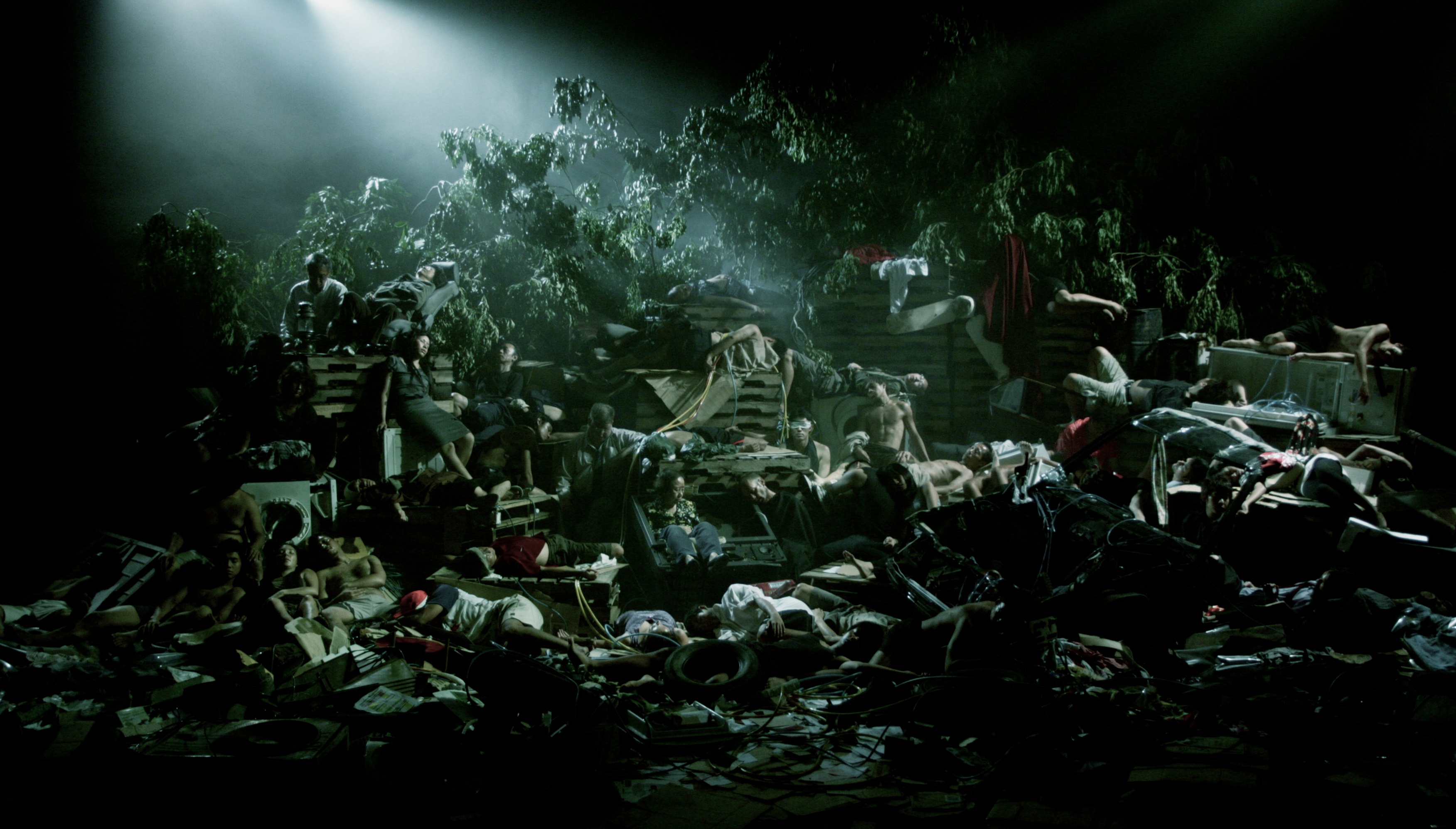
2011, single channel HD video, 5.1 surround sound, 42 mins
soundtrack by Black to Comm
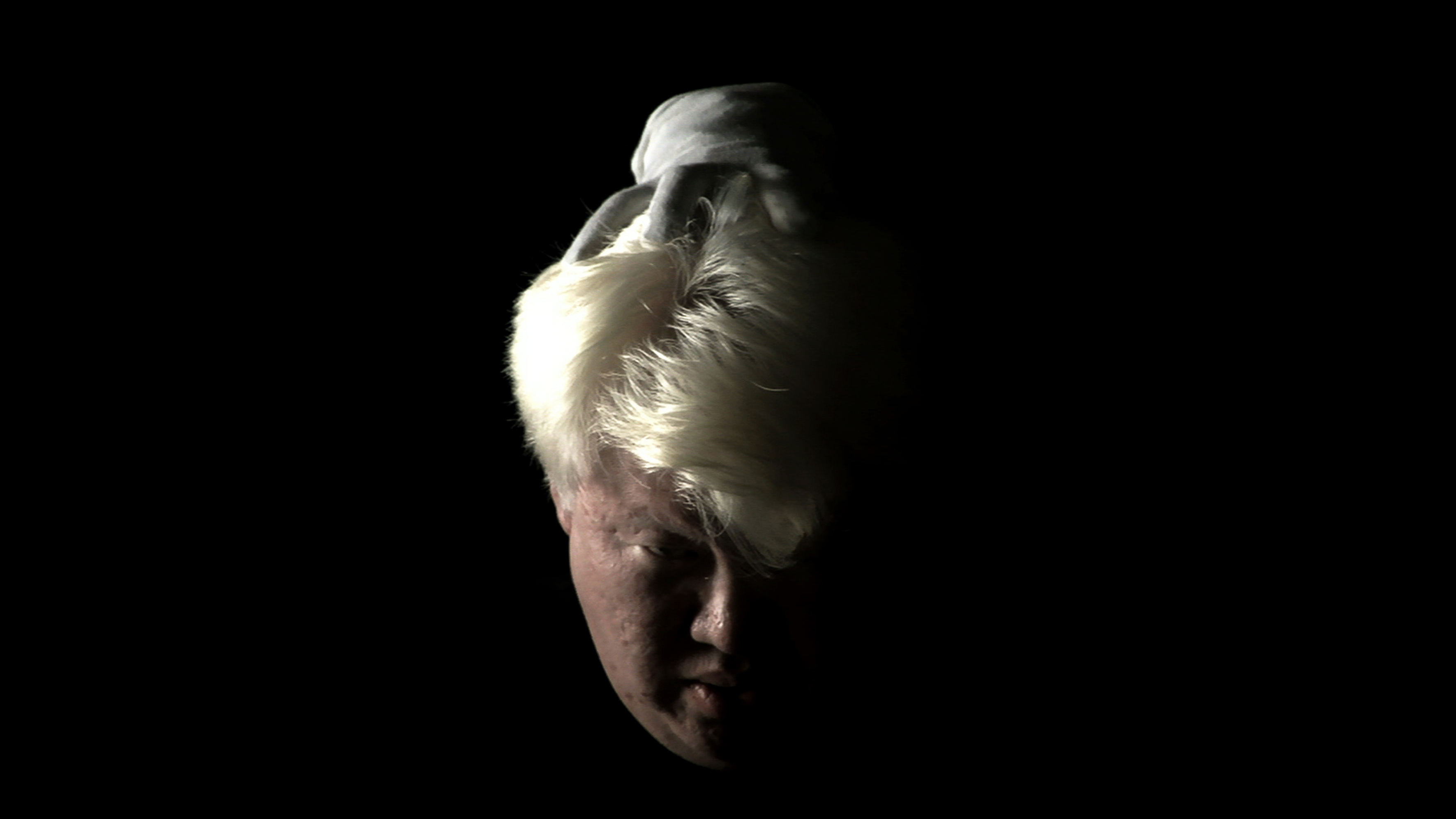
2009 to 2013, single channel HD video, stereo sound, 1 min 49 sec
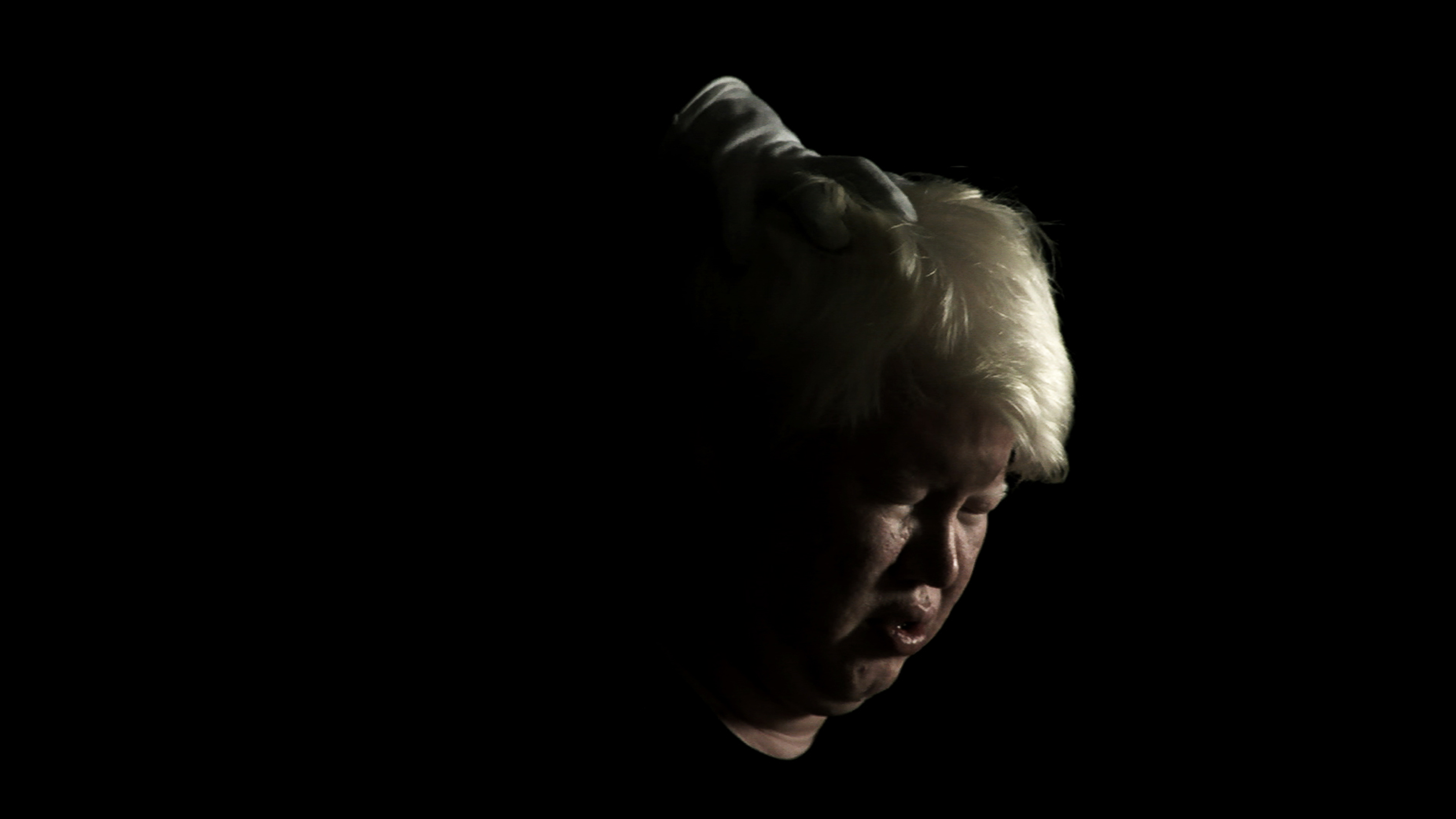
2009 to 2013, single channel HD video, stereo sound, 1 min 49 sec

2009 to 2013, single channel HD video, stereo sound, 1 min 49 sec
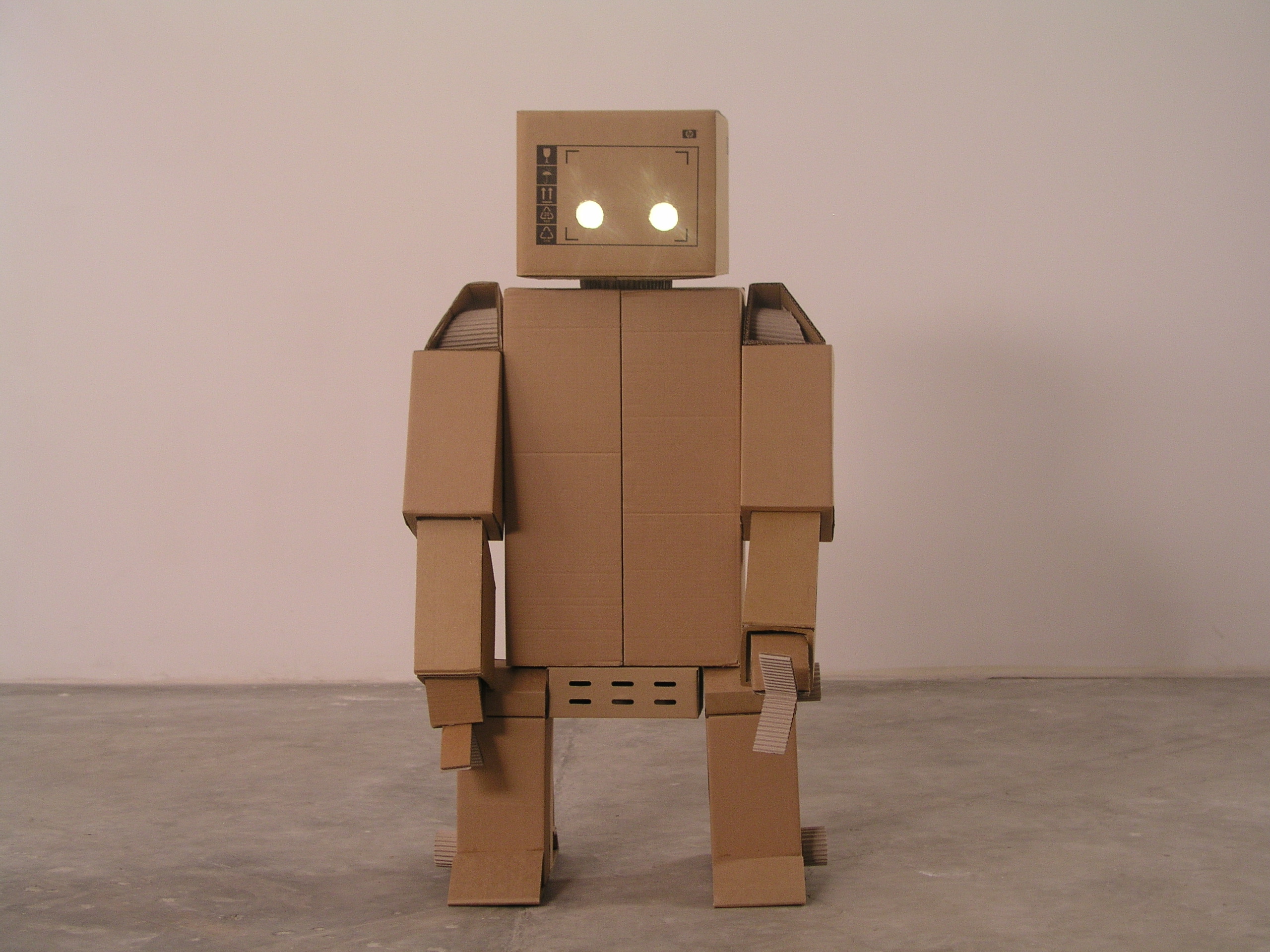
2009, single channel HD video, 6 mins 43 sec
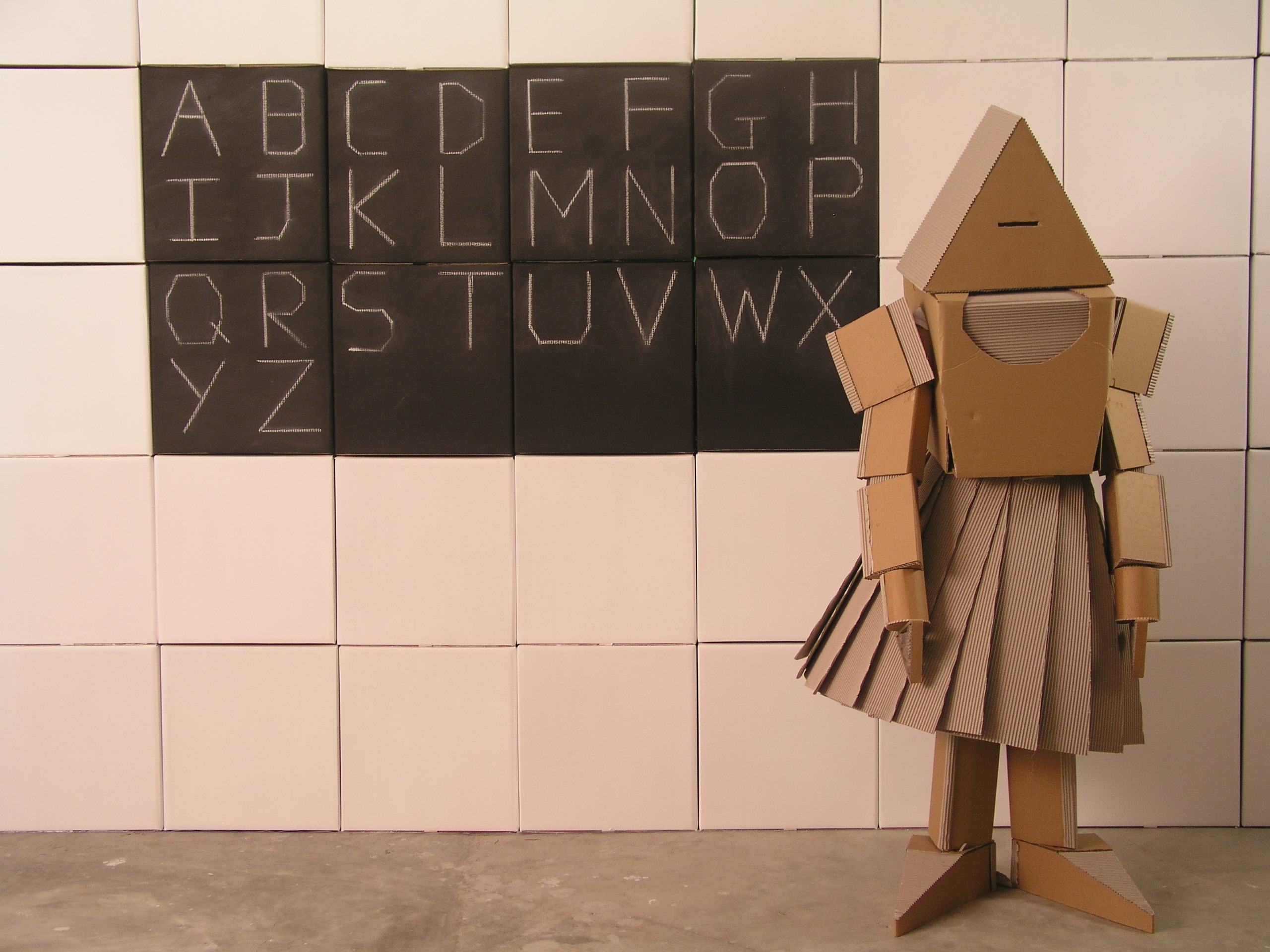
2009, single channel HD video, 6 mins 43 sec

2009, single channel HD video, stereo sound, 4 min 20 sec
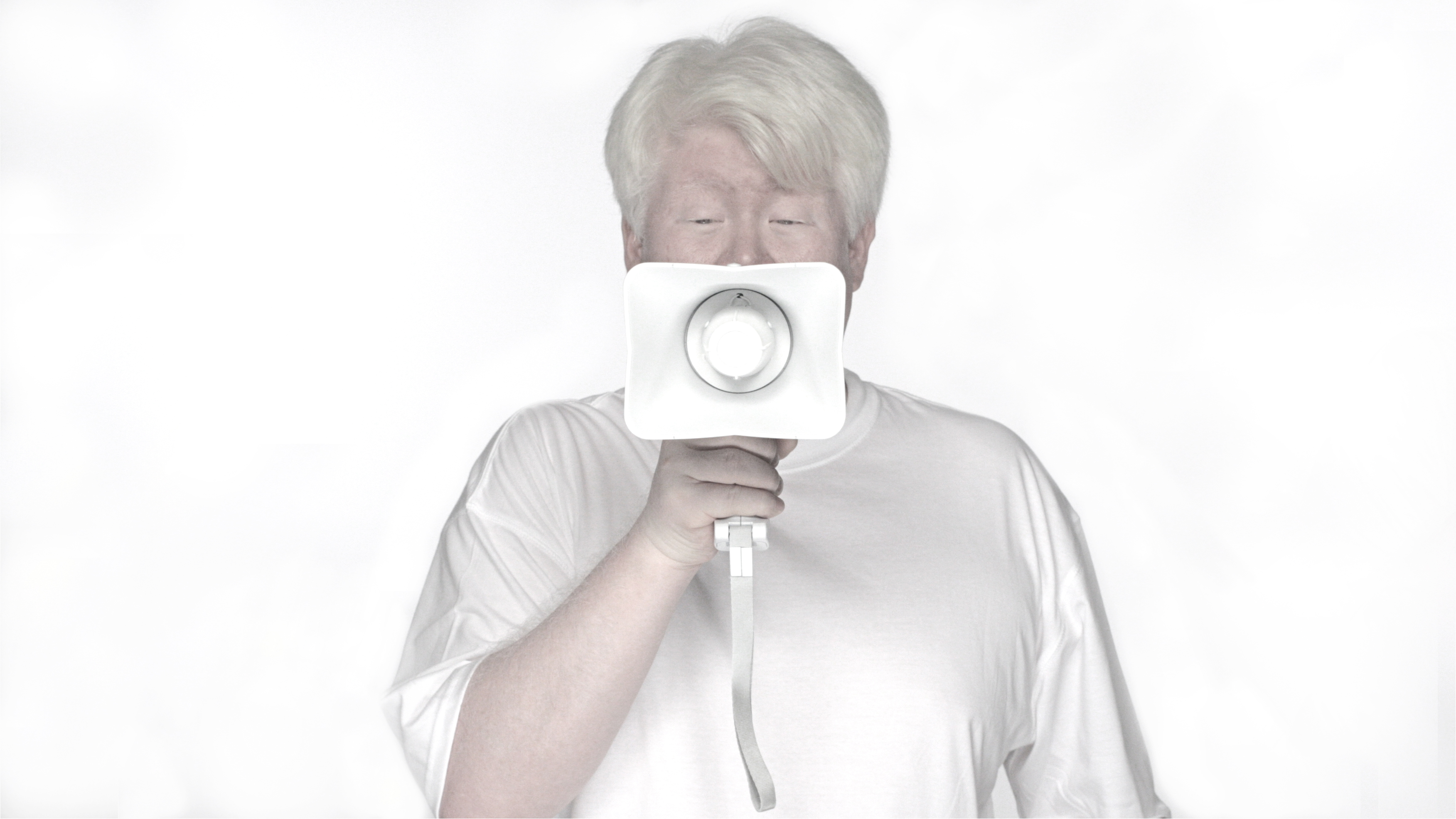
2009, single channel HD video, stereo sound, 4 min 20 sec
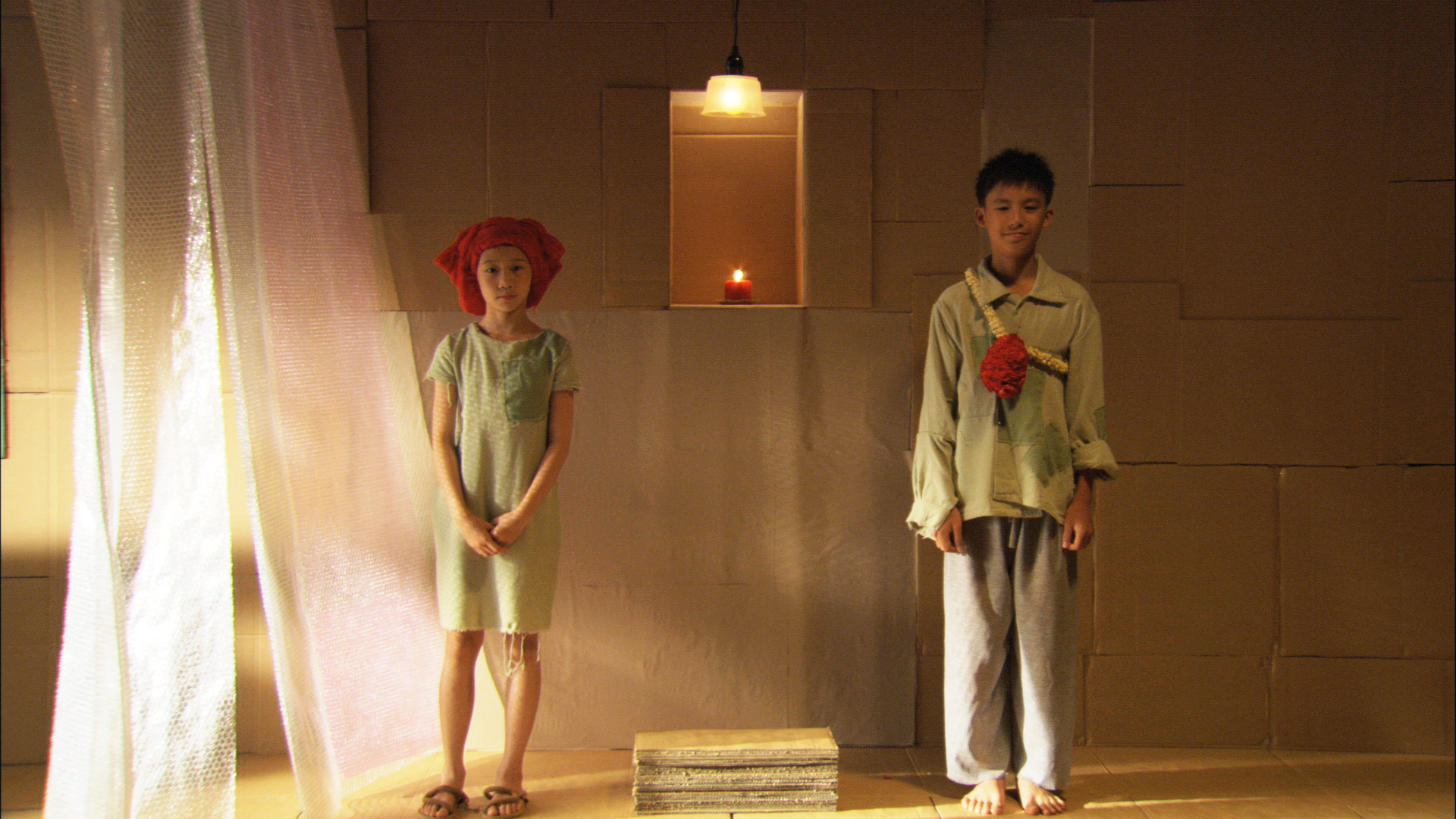
2007, single channel HD video, 12 mins 30 sec
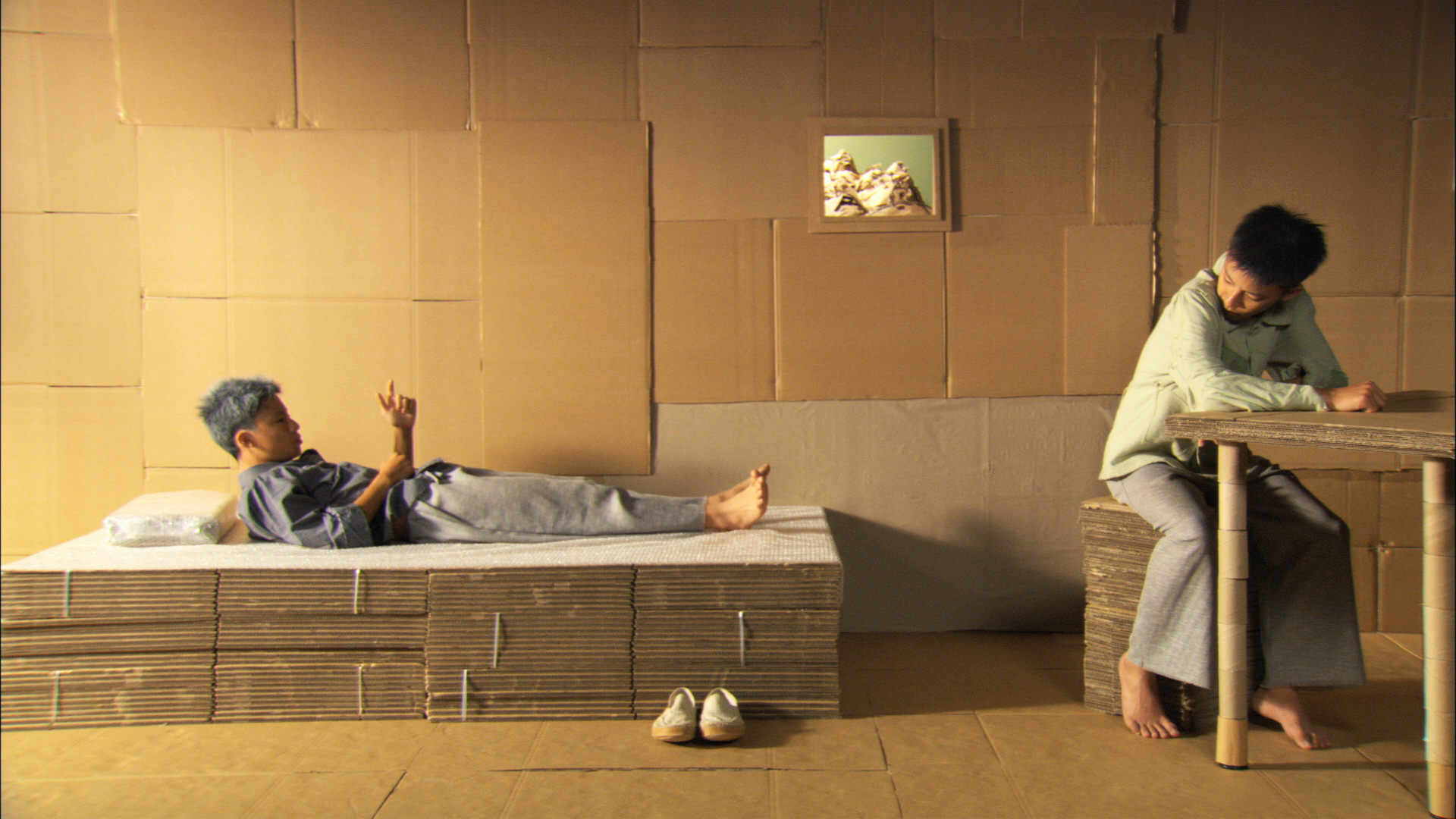
2007, single channel HD video, 12 mins 30 sec
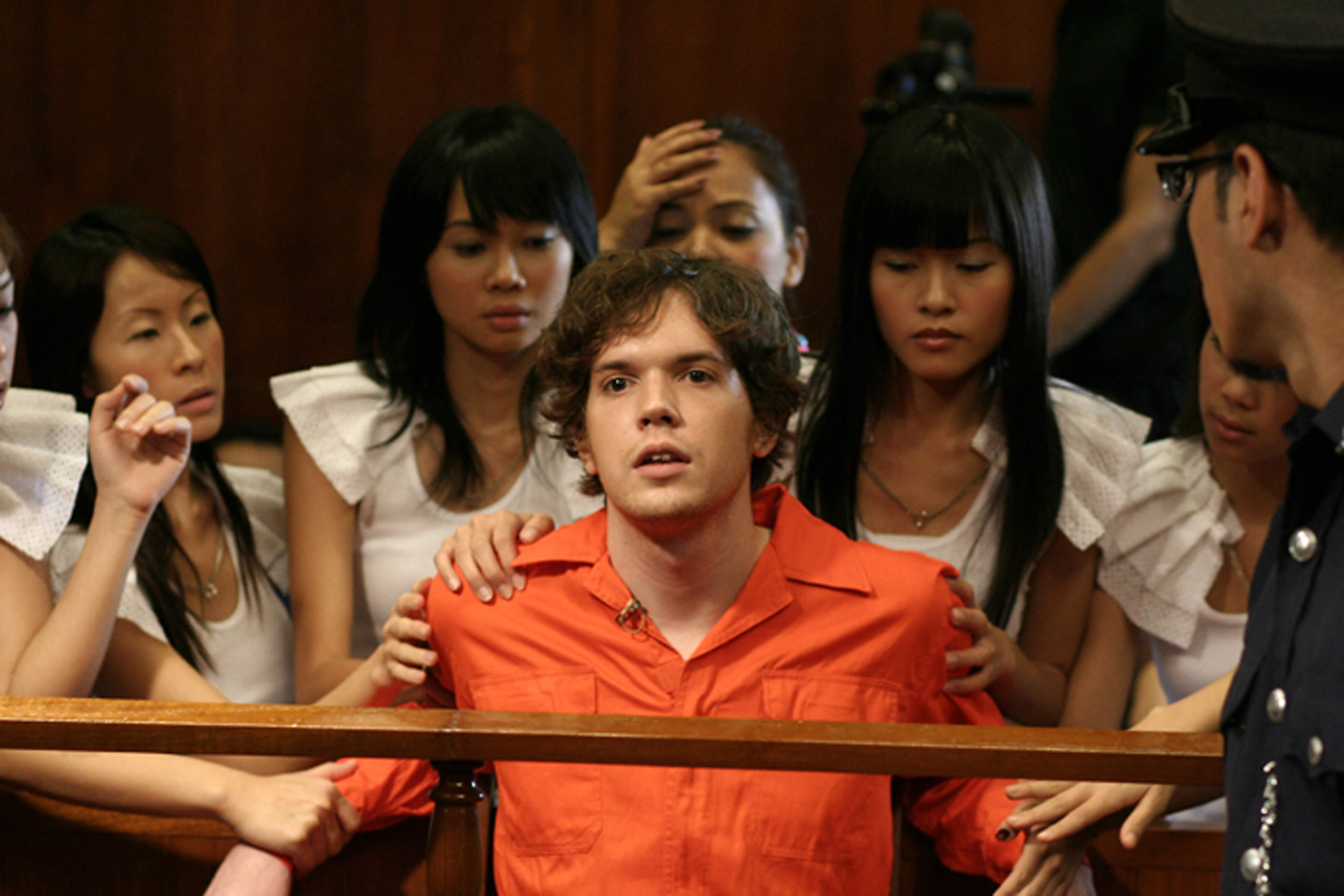
2006, single channel video, 6 mins 20 sec
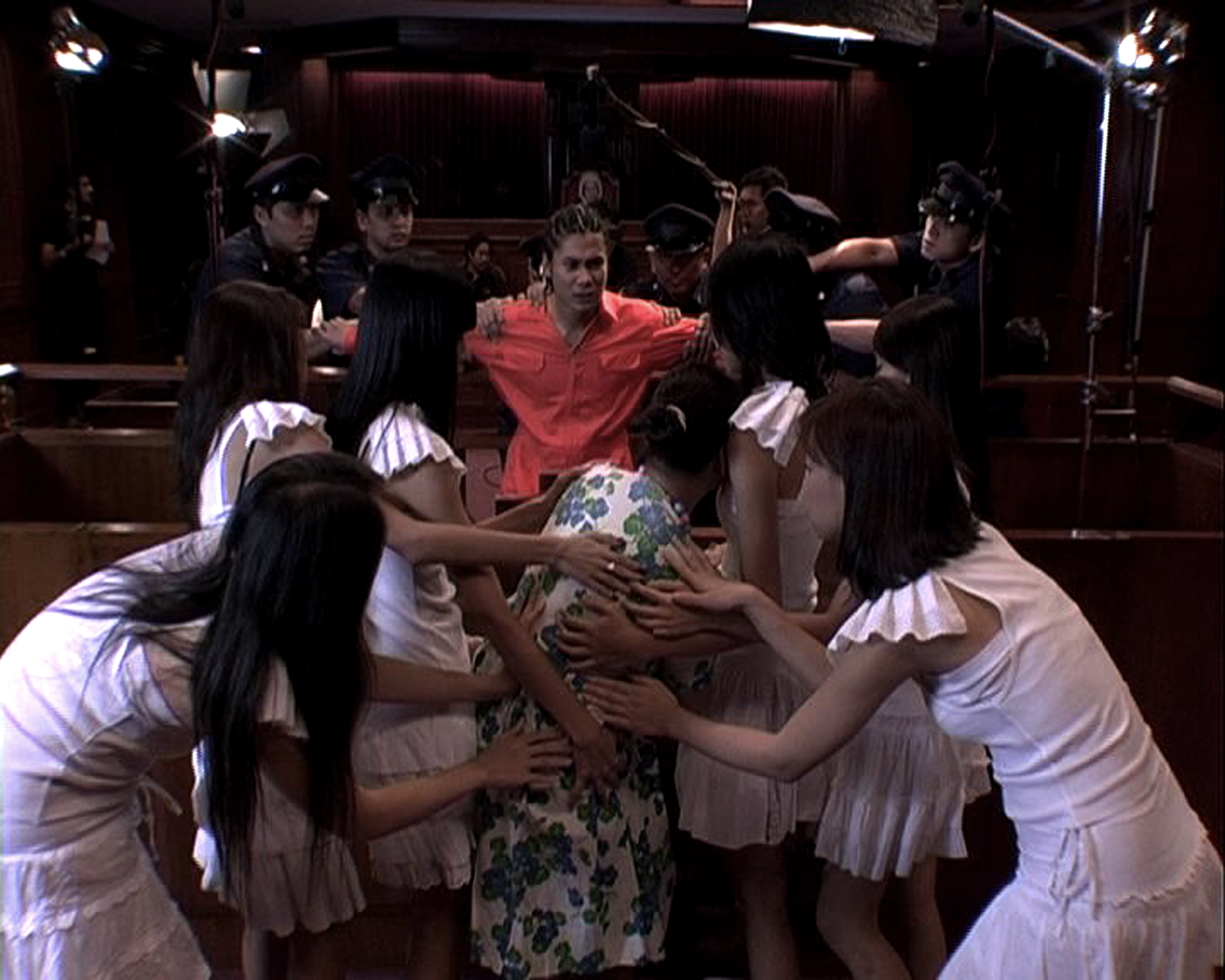
2006, single channel video, 6 mins 20 sec
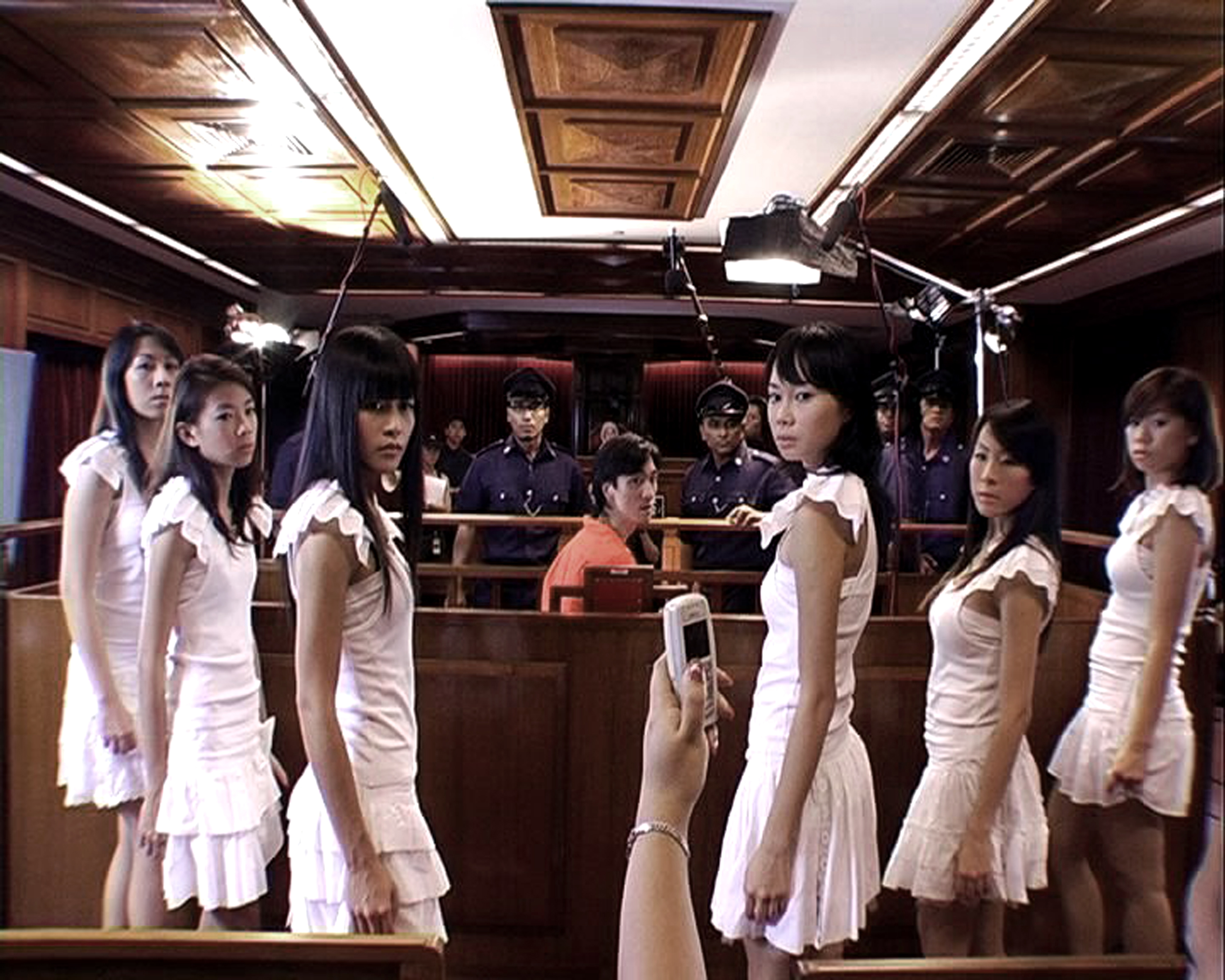
2006, single channel video, 6 mins 20 sec
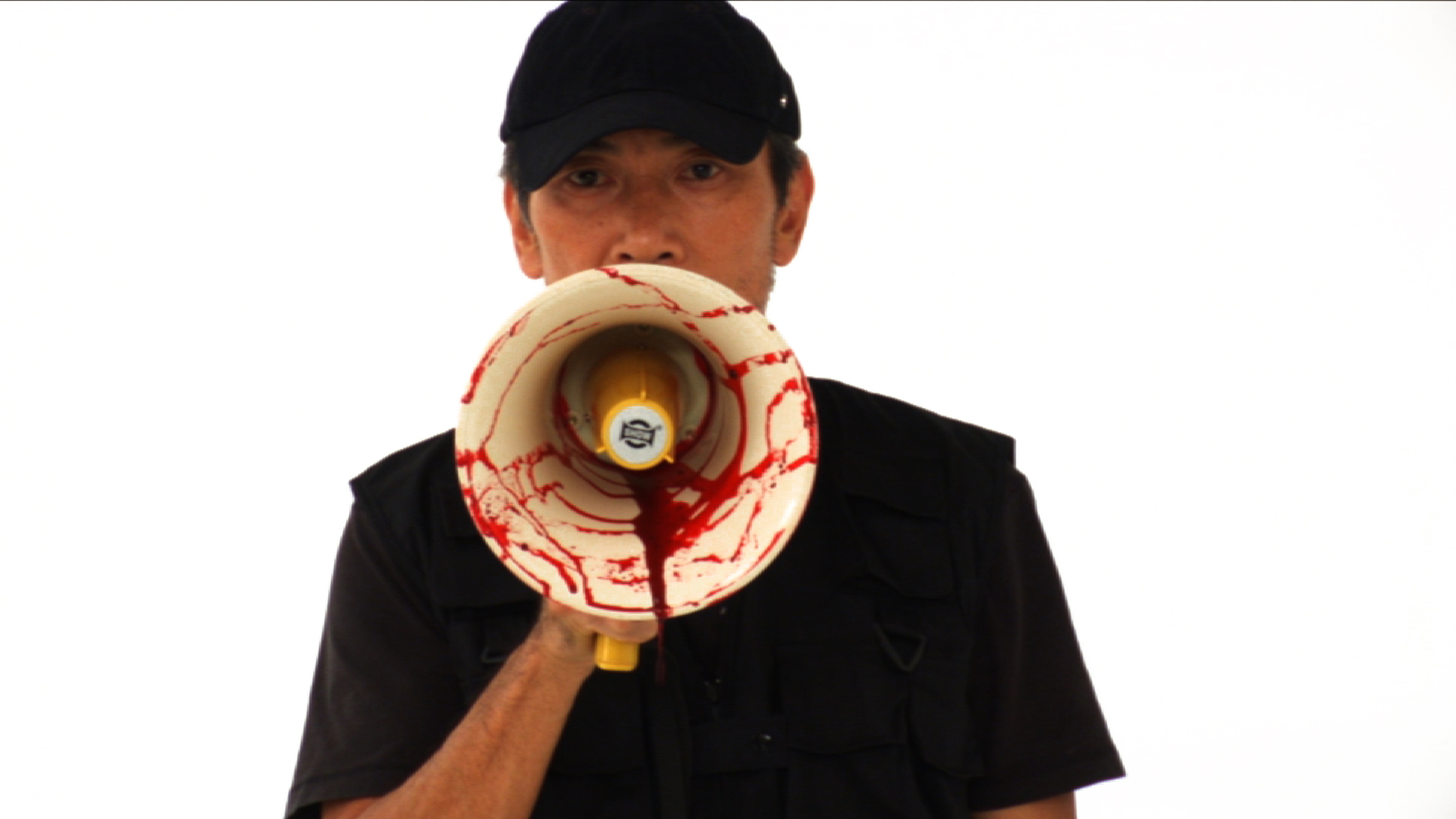
2005, single channel HD video, 23 mins
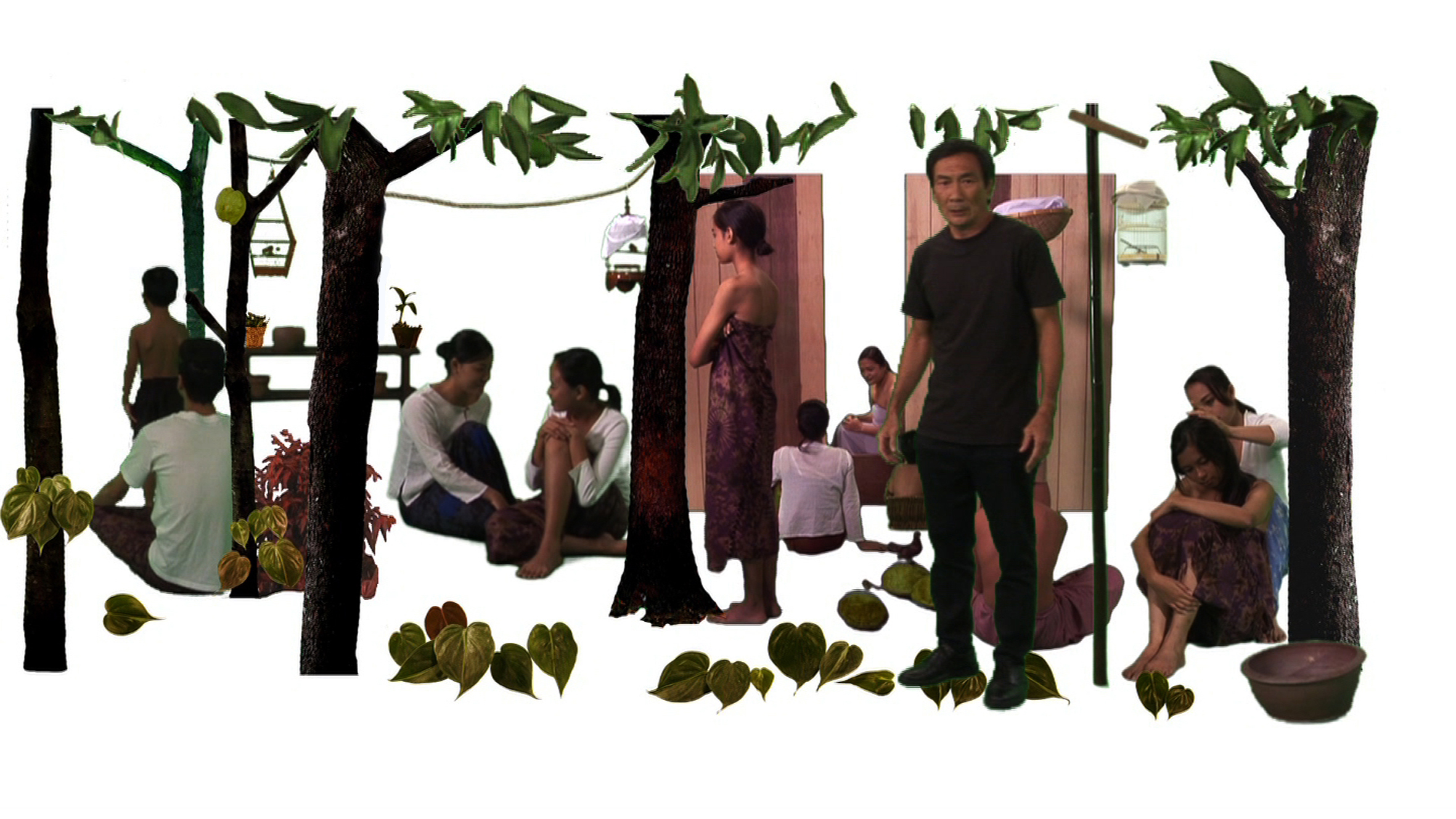
2005, single channel HD video, 23 mins
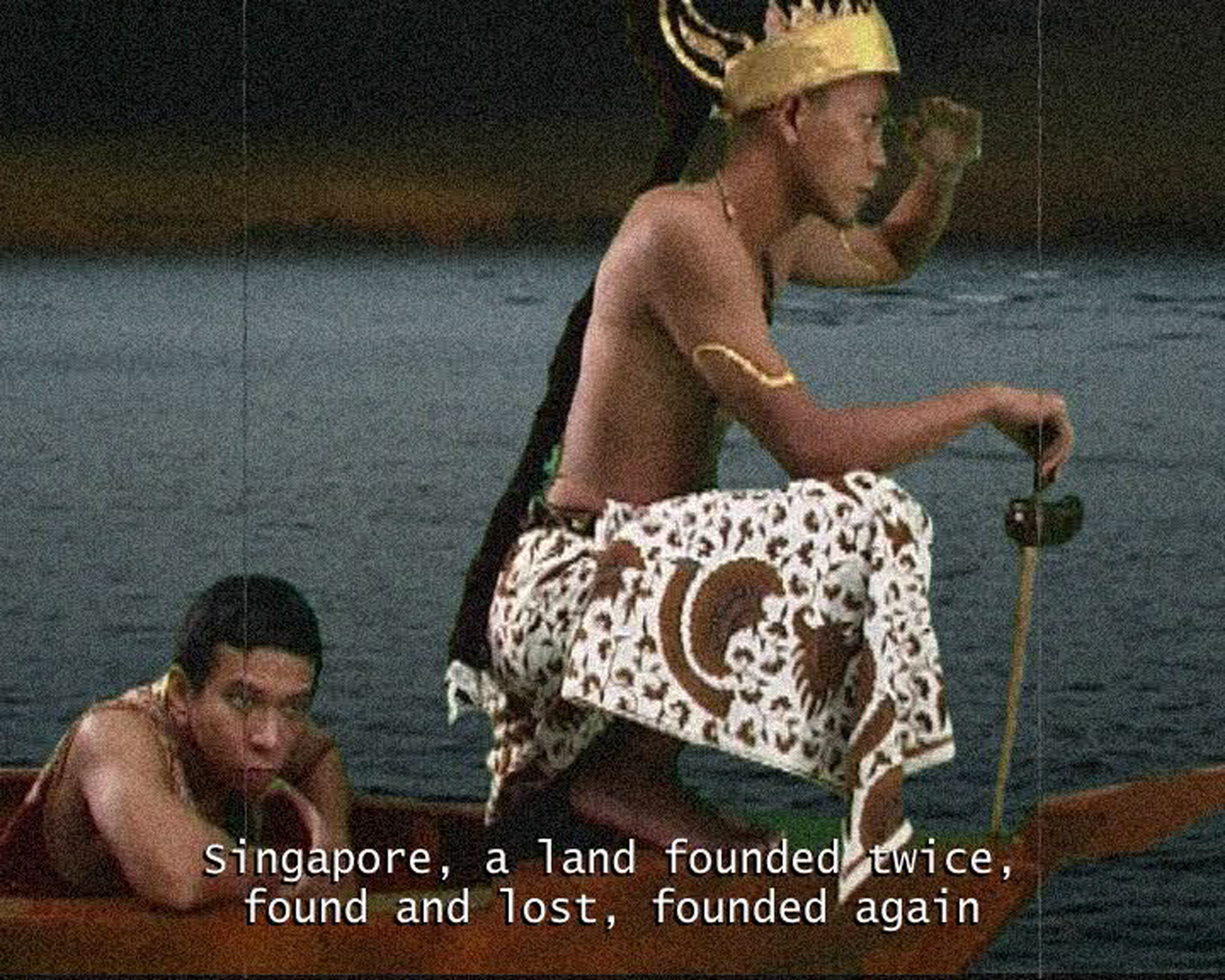
2003, Installation with Single Channel SD Video, 23 min, and 20 paintings
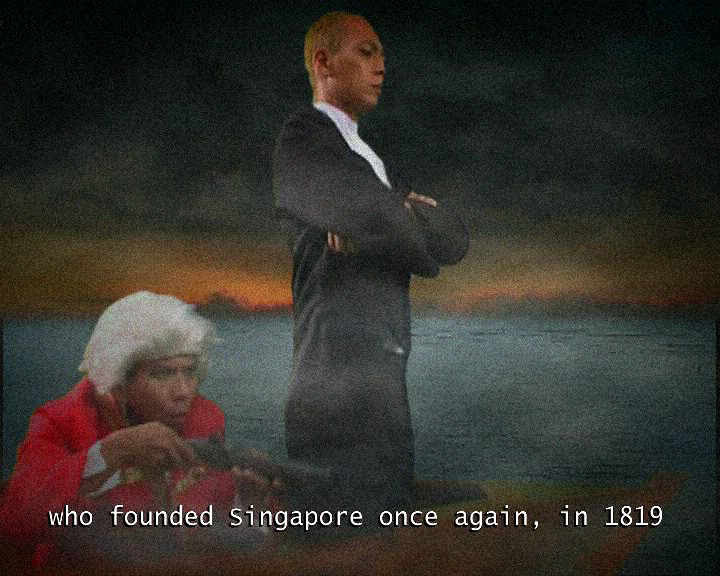
2003, Installation with Single Channel SD Video, 23 min, and 20 paintings
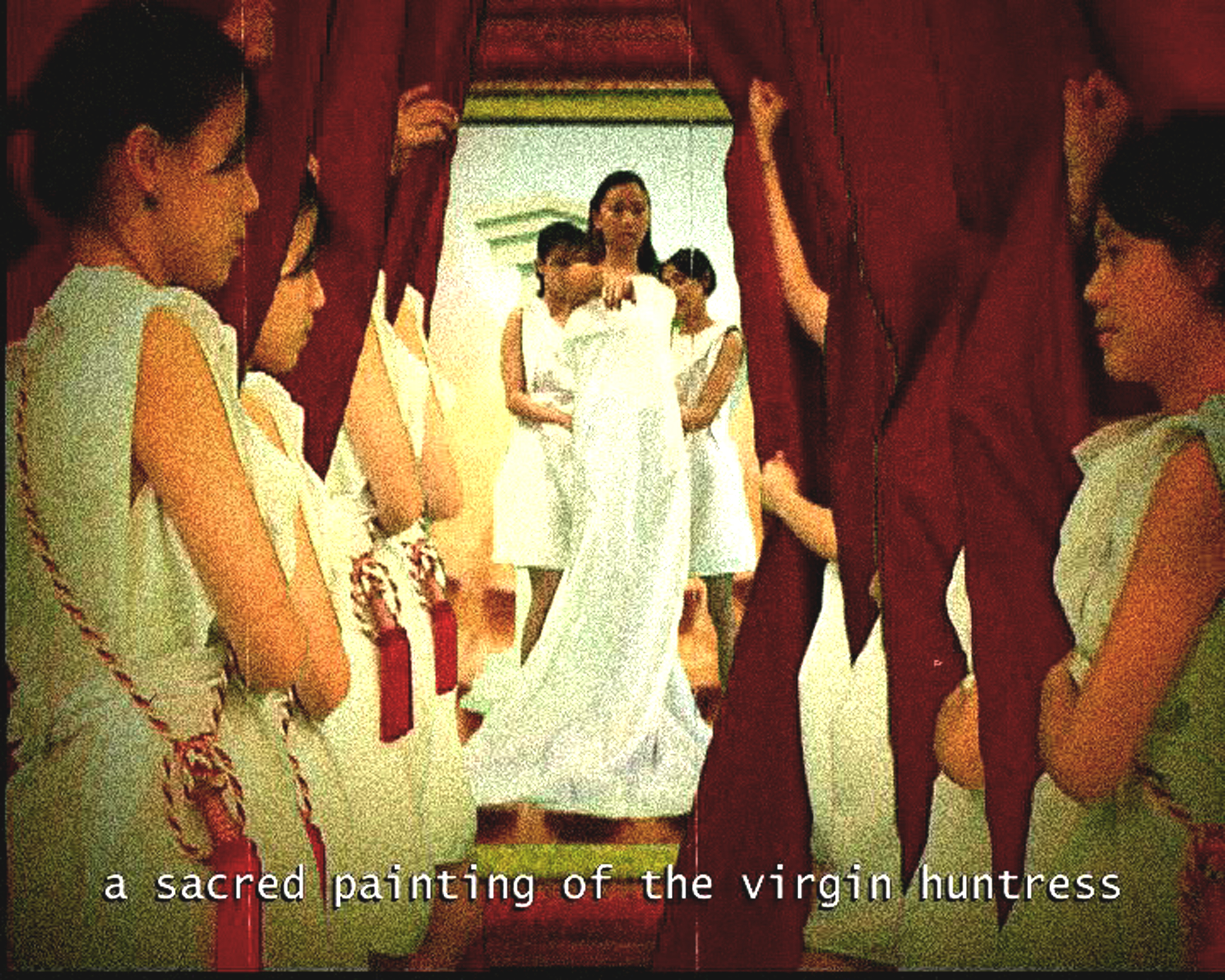
2003, Installation with Single Channel SD Video, 23 min, and 20 paintings